Summary
The Dark State
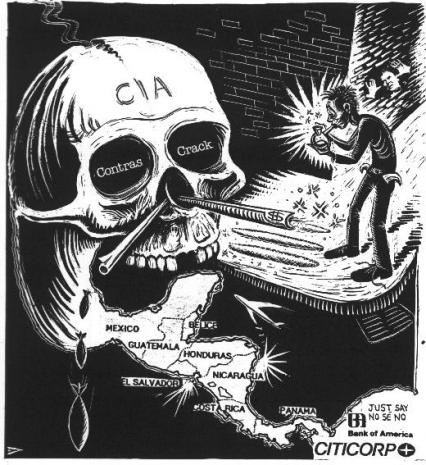
From a historical point of view

En poursuivant votre navigation sur ce site, vous acceptez l'utilisation de cookies. Ces derniers assurent le bon fonctionnement de nos services. En savoir plus.
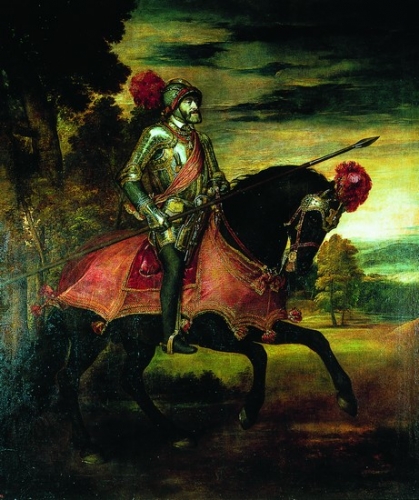
L’historien Denis Crouzet brosse un portrait saisissant de Charles Quint dans le contexte de la fin de la chrétienté.
Quand le pape Benoît XVI a renoncé à la charge pontificale en février 2013, le philosophe Alain Finkielkraut compara le geste du pape allemand à celui de l’empereur Charles Quint. Le 25 octobre 1555, dans son palais bruxellois, le vieil homme s’adressait ainsi à la cour impériale : « Je me sens maintenant si fatigué que je ne saurais vous être d’aucun secours, comme vous le voyez vous-même. Épuisé et brisé comme je le suis, j’aurais des comptes à rendre à Dieu et aux hommes si je ne renonçais à gouverner. » Tout comme Benoît XVI, l’homme pleura amèrement après cette annonce, puis se retira dans un monastère.
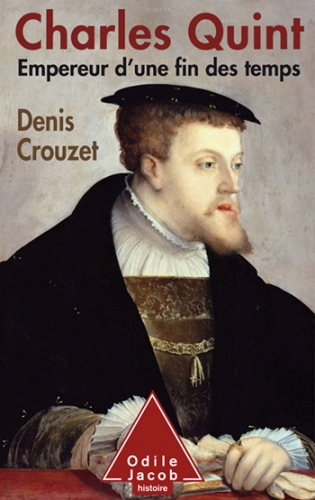
L’un et l’autre ne peuvent se comprendre qu’à travers la mission qu’ils estimaient avoir reçue de Dieu. L’historien Denis Crouzet nous la décrit dans son dernier essai. Un ouvrage dense, à la lecture exigeante, mais d’une richesse incomparable. Plutôt que de céder à la facilité du genre biographique, l’auteur nous transporte sur une courte période allant de 1545 à 1552. Sept années d’un règne qui en compte trente-six. L’époque est l’un des moments charnières de l’Histoire européenne et de la civilisation : dans sa lutte contre les princes protestants réunis dans la ligue de Smalkalde, Charles Quint semble avoir remporté la victoire à Mühlberg en 1547. Mais en 1552, le traité de Passau établit définitivement le célèbre principe : « Tel prince, telle religion. » Il s’agit du jour où « tout bascule », puisque l’Europe chrétienne n’est plus, déchirée entre catholiques et protestants.
Certes, l’empereur Charles Quint vit une époque qui sait le glorifier, mais ce personnage impénétrable cachait en lui une peur face au tragique de l’Histoire : « Une épreuve dramatique toujours recommencée, durant laquelle ce qui a été gagné est sous tension d’être perdu, bien vite. » Plus Bourguignon que Habsbourg, il est la parfaite illustration du mot de Boileau : « Rarement un esprit ose être ce qu’il est. » Mais il savait aller de l’avant, sous la contrainte, imitant par ailleurs le Christ fait homme. Stoïque, mais chrétien.
Christophe Dickes
04:27 Publié dans Histoire, Livre, Livre | Lien permanent | Commentaires (0) | Tags : histoire, charles-quint, saint empire romain de la nation germanique, saint empire, livre, denis crouzet, 16ème siècle, europe, espagne |  |
|  del.icio.us |
del.icio.us |  |
|  Digg |
Digg | ![]() Facebook
Facebook
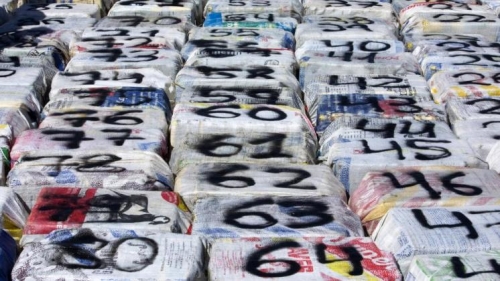

From a historical point of view

01:05 Publié dans Actualité | Lien permanent | Commentaires (0) | Tags : drogues, cia, états-unis, occident, politique internationale, géopolitique |  |
|  del.icio.us |
del.icio.us |  |
|  Digg |
Digg | ![]() Facebook
Facebook

Ex: http://www.usa.forzanuova.info
In the modern world, and particularly in the “West”, we have slipped into a devastating pattern of deconstructionism. We’ve deconstructed with pseudo-intellectual lines of attack all of the traditional institutions and paradigms that have held our society together; gender, race, sexuality, religion – the list could potentially be perennial. Anything and everything that held together a people within a group identity has been deconstructed, thereby removing its inherent value and purpose.
Religion is perhaps the greatest example of this and certainly the battleground in which we first encountered the deconstructionist. With the advent of the modern era, with science and the values of enlightenment, we have “disproved” many previously held religious axioms. Most notably of course, and an example with which everyone is familiar, the belief in Darwin’s evolutionary theory as an antithesis of creationism. Once science can effectively disprove the opening chapter of the Holy Bible, the door has been wedged open for the great deconstructionist to begin extracting the value from the rest of the book.
Never mind the fact that the bible contains many lessons from which one might come to lead a better life; never mind the fact that much of the bible should be understood as metaphor as opposed to magic and miracles; once they can defeat one area in the field of battle, they will not stop until there remains no value in a concept.
Thus the Christian way of life was brought down in the west – and I lament this, despite practising a different faith myself. I lament the passing of this system due to the simultaneous loss of group identity it has caused as a side effect, or perhaps the former was a catalyst for the latter. Whatever the cause of the process, the action and reaction, the facts remain the same; the loss of group identity on a community and national level has occurred in direct proportion with the decline of religious faith.
The reason for this is quite simply. Our societies and communities, on a micro and macro level, were built around the Church. The Church was the focal point of the community, a place where one’s fellow kith and kin would gather at least once a week in unified faith. Every major event in our lives was in the domain of the Church; birth, marriage and even death. We celebrated Easter together, the Harvest together, Christmas and Lent and so on and so forth. Even social issues that have now been taken over by the state – with charity being the greatest example of this – were previously under the remit of the Church.
British society is a great example of this. For better or worse, the Church and faith in the Christian religion held society together, even offering legitimacy to the royals and morale for the armies. Whilst I am not a Christian and I believe that a different faith and ethics system is preferable, that’s just personal taste – the focus point of this discussion isn’t necessarily the particular religion, but the system of society that collective belief in a religion generally brings about; cooperation, a sense of belonging, goodwill to one’s neighbour, charity, asceticism.
Another example of this, and perhaps useful for a “compare and contrast” exercise, is the Islamic world. The Islamic world has soundly rejected atheism as a theory and has instead embraced a more traditionalist, more conservative approach to their faith, which in many cases has become almost reactionary as a response to Western-backed atheism. Whilst many of you may not agree with the values of Islam, not one of you can deny that their collective faith gives Muslims a strong sense of identity that many of us in the Western world sorely lack.
The great lie that the deconstructionists fed to us is that one can either be rational, or spiritual. These concepts are, to those who seek to remove the latter, absolutely mutually exclusive. The implication being that by entertaining a degree of spirituality one is by definition, lacking in a logical understanding of the world and their environment. This is false; very few theists claim that their religion should be practised like a child with blind faith in Santa. The belief in a “man in the sky” is not a prerequisite for theism – on the contrary, many theologists will confirm that one can be an ardent Christian without believing literally in the book of Genesis, for instance.
Yet this is how we’ve been taught to view such issues, in grossly absolutist terms that do a disservice to those who do follow a spiritual path. We are given a black and white interpretation that says you’re either with science – and by definition against religion – or against science – and by definition, stupid. The mockery directed at those who practise faith, that sometimes extends to borderline social ostracism, has been weaponised by the deconstructionists to deprive the collective of its identities.
The free-market also has a lot to answer for in this regard. The pressure by free-marketeers to loosen traditionally restricted trading hours, most notably the Sunday Trading Hours laws that have been introduced in the United Kingdom, have turned what used to be time for reflection, community, charity and family, into yet more time for materialist pursuits and mindless, atomised consumerism. In this way, a religiously traditional society is a great threat to the free-market, as it restricts the number of hours the giant capitalists have to make money.
More broadly, neo-liberal Western capitalism has been one of the driving forces behind the challenges to traditionally spiritual societies – hence why Islamic societies fight so vehemently against the doctrine. The proponents of such doctrines – ironically the “conservatives” who claim a Christian foundation – only have one belief system, one faith, and one God: capital. Money and only money is their raison d’etre. They live for no higher purpose, no greater collective mission and nothing other than the accumulation of capital – what a sad existence that must be!
But its effects on Western societies have been momentous. Many in Europe often claim Islam is the fastest growing religion in the continent and, of course, they’re not wrong, but one cannot overlook the fact that the atheistic are the fastest growing demographic more generally. And in any case, it is difficult to separate atheism from the umbrella term of “religious groups”, given their undying profession of eternal love for and their steadfast belief in capital – in a way, this in itself amounts to a religion. It certainly has characteristics of religion that they themselves overlook.
As we know, the belief in money and the accumulation of capital as the only notion to hold inherent value serves no greater purpose than to remove collective identities. Whether it be from the right, the neo-liberal capitalists, or from the left, the individualist social democrats, the prevailing political paradigm of our time is money above all, and identity below everything.
Thus it can be said that, rather than the irreligious being the fastest growing demographic in Western societies, it is in fact those bereft of collective identity who are truly prevailing. As I alluded to earlier on in this piece, I’m not a Christian, and nor do I believe that the rise of Islam is a good thing purely because it’s a religious doctrine combatting an irreligious doctrine. Rather an atheist West than a theist East – yet I can’t help feel somewhat envious of those in the Islamic world, for they have retained their belief in the spiritual and their comradeship of the collective.
Perhaps the West, as opposed to their perennial cycle of teaching foreigners liberal democracy, should take a step back and ask what lessons we could learn from them.
00:40 Publié dans Actualité, Philosophie, Théorie politique | Lien permanent | Commentaires (0) | Tags : actualité, philosophie politique, néolibéralisme, philosophie, théorie politique, politologie, sciences politiques |  |
|  del.icio.us |
del.icio.us |  |
|  Digg |
Digg | ![]() Facebook
Facebook
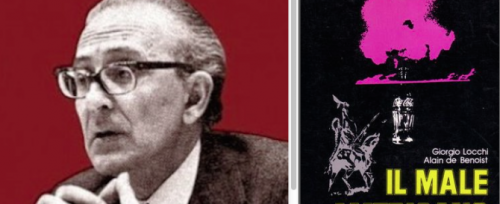
Ex: http://www.secoloditalia.it
Oggi ricorre l’anniversario della scomparsa di Giorgio Locchi, morto a Parigi, dove viveva dagli anni Cinquanta, il 25 ottobre del 1992. Oggi Giorgio Locchi, giornalista, saggista, scrittore, non è molto conosciuto in Italia, soprattutto dai giovani, ma fu uno dei pensatori che più incisero sulla comunità anticomunista europea (a lui non piaceva la definizione “destra”) dagli anni Settanta in poi. Poco si sa della sua vita privata, e quello che sappiamo lo dobbiamo alla frequentazione sistematica da parte di suoi “discepoli” italiani, ragazzi provenienti dal neofascismo degli anni Settanta. Questi ragazzi, infiammati dal sacro fuoco della politica e dalla voglia di cambiare questo mondo, andavano a Parigi, a Saint Cloud, dove Locchi viveva e si guadagnava da vivere come corrispondente del quotidiano romano Il Tempo. Tra questi ragazzi ricordiamo senz’altro Gennaro Malgieri, Giuseppe Del Ninno, Mario Trubiano, Marco Tarchi e altri. In ogni caso, per quanto misconosciuto in Italia, Giorgio Locchi fu un po’ il “padre nobile” dei grandi rivolgimenti culturali europei nella famiglia della destra (scriviamo così solo per convenzione), quando dal neofascismo puro si passò alla dimensione culturale, a una Nuova Destra, come poi in effetti fu chiamata, la Nouvelle droite, che guardava oltre il regime fascista ma pensava piuttosto alle potenzialità, peraltro in parte messe in pratica, da quella filosofia e da quella dottrina europeista e antiegalitaria, ancorché modernizzatrice, che avrebbe ancora oggi tasto da dire e da dare alla nostra civiltà un po’ decadente (a voler essere generosi). Poi, la figura di Giorgio Locchi venne allo scoperto in Francia, ma per merito degli italiani, come ricorda Del Ninno. Locchi fu tra i fondatori del Grece, Groupement de recherche et d’études pour la civilisation européenne, creato nel 1968 insieme ad Alain de Benoist, intellettuale e scrittore francese molto noto, che fu con Locchi sin dall’inizio, pur essendo de Benoist più giovane.
Giorgio Locchi era nato a Roma nel 1923, la famiglia aveva contiguità col mondo del cinema e dei doppiatori, lui stesso era amico della famiglia di Sergio Leone; scuole al classico del Nazareno dove, pur essendo lui completamente acattolico, conservò stima e gratitudine per i padri Scolopi, che avevano sempre rispettato la sua libertà di pensiero e che gli garantirono sempre massima autonomia di giudizio e di critica. Proseguì gli studi, orientati particolarmente verso il germanismo, la musica, la scienza della politica, ma soprattutto verso gli studi della civiltà indoeuropea, argomento sul quale ci ha lasciato un libro e numerosissimi scritti. I ragazzi del Fronte della Gioventù e del Msi degli anni Settanta e Ottanta furono letteralmente folgorati dal suo libro Il male americano (Lede editrice), dove Locchi aveva previsto tutto ciò che non sarebbe accaduto ma che sta ancora accadendo. Il fatto di essere usciti sconfitti da una guerra devastante, per Locchi, non annichilisce le idee che a quella guerra portarono. Che infatti sopravvivono nelle più disparate forme e sfumature. Dopo la realizzazione del Grece, che oggi chiameremmo un think tank, la Nuova Destra comincia a farsi conoscere non solo in Francia e in Italia, ma un po’ in tutta l’Europa occidentale. E a proposito di Europa, Locchi volle andare a Berlino nei giorni della riunificazione delle Germanie. La firma di Locchi da quel momento, che utilizzava anche lo pseudonimo di Hans-Jürgen Nigra, iniziò ad apparire sulle riviste vicine alla Nouvelle Droite, come Nouvelle Ecole, Elements, Intervento, la Destra, l’Uomo libero e naturalmente il nostro quotidiano Secolo d’Italia. Frattanto rendeva preziose informazioni ai lettori italiani con superbe corrispondenze dei fatti d’Algeria, sul ’68 francese, e anche sulla nascita dell’esistenzialismo. Come ha scritto in maniera chiara Gennaro Malgieri nel suo mirabile Hommage à Giorgio Locchi (1923-1992) in Synergies européennes nel febbraio del 1993, in realtà le idee di Locchi erano le idee di un’Europa che non esiste più, ma questa non era per lui una ragione per non difenderne o illustrarne i principi. Queste idee riguardano quell’Europa eterna a cui l’Europa economica del nostro dopoguerra non assomiglia per nulla. Ad esempio, nota ancora Malgieri, l’atteggiamento di Locchi verso il fascismo non era di semplice nostalgia o protesta, ma raccoglieva nel fermento culturale di quell’epoca e di quella esperienza tutte le idee e le iniziative che non erano e non sono obsolete. «Ha condiviso con noi i suoi pensieri su questo nella sua opera intitolata L’Essenza del fascismo (Il Tridente, 1981). Egli si riferisce alla visione del mondo che è stata l’ispirazione del fascismo storico, ma non è scomparsa con la sconfitta di quest’ultimo. Questo libro è ancora un “discorso di verità” prodigiosa nel senso greco, che cerca di rimuovere dal fascismo di tutte quelle spiegazioni frammentarie che sono attualmente in corso e tutte le forme di demonizzazione tese a generare pregiudizi».
Nella sua indagine, infatti, Locchi ha sostenuto che non era possibile capire il fascismo, se non ci siamo accorti che era la prima manifestazione politica di un fenomeno spirituale di più ampia portata, le cui origini risalgono nella seconda metà del XIX secolo e ha chiamato il “surhumanisme”. I poli di questo fenomeno, che si presenta proprio come un enorme campo magnetico, sono Richard Wagner e Friedrich Nietzsche che, attraverso le loro opere, hanno mescolato il nuovo principio e lo hanno portato nella cultura europea tra la fine del XIX e all’inizio del ventesimo secolo. Su questo Locchi ha scritto il libro Wagner, Nietzsche e il mito sovrumanista (edizioni Akropolis), difficile ma estremamente lucido, che ebbe le lodi del critico musicale Paolo Isotta dalle colonne del Corriere della Sera. Locchi ci ha lasciato pochi libri, ma importanti. La sua vita testimonia un impegno coerente, profondo, cruciale, che oggi non sarebbe male approfondire. Su di lui (anche) pochi anni fa Francesco Germinario ha scritto un libro, Tradizione, Mito e Storia (Carocci editore) in cui l’autore definisce i connotati della destra radicale soffermandosi sui suoi esponenti più significativi. Due anni fa alla sede romana di Casapound si è svolta una conferenza su Giorgio Locchi alla presenza del figlio Pierluigi e di Enzo Cipriano, anche lui amico e seguace di Locchi da anni.
00:01 Publié dans Nouvelle Droite | Lien permanent | Commentaires (0) | Tags : giorgio locchi, nouvelle droite, italie, france, surhumanisme, mal américain |  |
|  del.icio.us |
del.icio.us |  |
|  Digg |
Digg | ![]() Facebook
Facebook
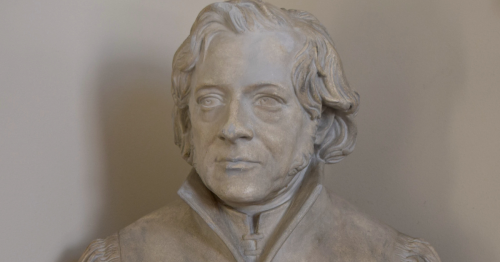
“I feel sure that Germany, the kernel of Europe, will arise once more in a new and beautiful state, but when this will happen, and whether the country will not first have to experience even greater difficulties […] God alone knows.” — Friedrich Schleiermacher, 1806[1] [3]
“. . . were you not mine, I should not have felt so conscious of how true is my patriotism and my courage. As it is, however, I know that I may place myself on a level with whomsoever it may be, that I am worthy of having a country I can call my own, and that I am worthy of being a husband and a father. […] Now, this is just my vocation – to represent more clearly that which dwells in all true human beings, and to bring it home to their consciences.” — Friedrich Schleiermacher, in a letter to his wife to be, Henriette von Willich, 1808[2] [4]
Friedrich Schleiermacher is generally recognized as the father of modern theology,[3] [5] and considered the most influential Protestant theologian since John Calvin. At the beginning of the nineteenth century, Schleiermacher redirected the course of Protestant theology by breaking the stalemate of rationalism and orthodoxy.[4] [6] The rise of neo-orthodoxy in the twentieth century, led by Karl Barth, was in many ways a reaction to the influence of Schleiermacher. After World War Two, Schleiermacher was treated with suspicion, since he was a Romantic, a German idealist, and an advocate of nationalism, culturally conditioned Protestantism, and the German Volksgeist.[5] [7] To him, the essence of religion was an inward disposition of piety, rather than outward practices or written dogmas.[6] [8]
Early Life
Friedrich Daniel Ernst Schleiermacher was born in 1768 in the Silesian town of Breslau in Prussia (now Wroclaw in Poland). He was the son of a Reformed pastor who served as a chaplain in the Prussian army.[7] [9] At fourteen, Schleiermacher was placed in a school of the Moravian Brethren, or Herrnhuters, a Pietist congregation. The Moravians emphasized an intense devotion to Jesus and a vivid communion with him, resulting in the immediate presence of God, experienced within the self. This had a profound influence on Schleiermacher. At the Moravian school he also got a humanistic education based on the study of Latin and Greek.[8] [10] He enrolled in a Moravian seminary at sixteen to become a pastor. At the seminary, the students were forbidden from reading modern writers like Goethe, or the investigations of modern theologians and philosophers into the Christian system and the human mind. Schleiermacher asked his father for permission to enroll at the University of Halle instead, telling him that he no longer believed in Christ’s vicarious atonement. His father reluctantly agreed, believing that “pride, egotism, and intolerance” had taken possession of him.[9] [11] “Go then into the world whose approval you desire,” he told his son.[10] [12]
Schleiermacher matriculated at Halle in 1787. The leading philosopher at Halle then was Johann August Eberhard, who acquainted his students with a thorough knowledge of Kant’s philosophical system, and introduced them to the history of philosophy, and philosophers like Plato and Aristotle. For many years, Schleiermacher devoted himself to the study of Kant’s philosophy,[11] [13] and for a while he thought he’d lost all faith except in Kantian ethics.[12] [14]
In 1796, Schleiermacher moved to Berlin when he was appointed as a Reformed chaplain at Berlin’s main hospital, the Charité Hospital. There, he became acquainted with a circle of Romantics, who sought unity in their lives by completely devoting themselves to something they thought worthy of devotion. Their ideas centered around inward feeling, idealism and the growth of individuality. There, Schleiermacher met the poet Friedrich Schlegel who became his friend and had a significant influence on him.[13] [15] Schleiermacher understood individuality to be the designation of each individual in the order of things by divine providence: “Your obligation is to be what the consciousness of your being bids you to be and become.”[14] [16] His relationship with the Romantics was somewhat ambivalent. He noted that all people with artistic nature had “at least some stirrings of piety.” But ultimately, Schleiermacher wrote, “imaginative natures fail in penetrative spirit, in capacity for mastering the essential.” Wilhelm Dilthey wrote about Schleiermacher’s time with the Romantics: “Like every genius he was lonely in their midst and yet needed them. He lived among them as a sober man among dreamers.”[15] [17] Schleiermacher was repeatedly embarrassed and humiliated by their social impropriety and inability to function in the real world.[16] [18]
Together, Schleiermacher and Friedrich Schlegel decided to begin the monumental task of producing the first German translation of Plato’s works. But Schleiermacher could not count on Schlegel, and soon he had had to work on the translation alone. The work took many years and the volumes were published intermittently between 1804 and 1828, although not all dialogues were translated. Still today, Schleiermacher’s translations are the most sold paperback editions of Plato in Germany and are authoritative translations for scholars. Dilthey claimed that through them, “knowledge of Greek philosophy first became possible.”[17] [19] The work on the translation was to have a profound effect on the development of Schleiermacher’s philosophy.
The Speeches on Religion
Bothered by the Romantics’ hostility toward religion, Schleiermacher wrote his most famous work, On Religion: Speeches to Its Cultured Despisers (Über die Religion: Reden an die Gebildeten unter ihren Verächtern), in 1799, which made him instantly famous. In it, Schleiermacher attempted to discern the spirit or idea of pure religion, just as Kant had done for pure reason. In this early work his philosophical and theological ideas were still unformed and would evolve in the following years.
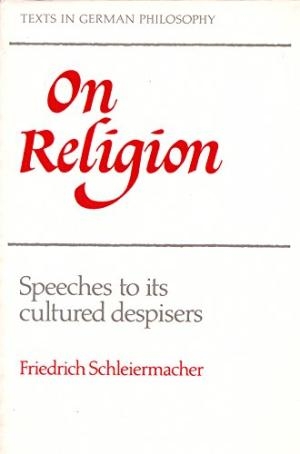 Schleiermacher thought that the Romantics’ criticism of religion applied only to external factors such as dogmas, opinions, and practices, which determine the social and historical form of religions. Religion was about the source of the external factors. He noted that, “as the childhood images of God and immortality vanished before my doubting eyes, piety remained.”[18] [20] He distinguished religion from “vain mythology” that conceived God as an outside being who interfered in history or natural events, although he thought Christianity should retain its mythical aspects and language as long as it was recognized as myth. Beliefs or knowledge about the nature of reality were also to be separated from religion.[19] [21] After Kant, the old-world view with its metaphysical idea of God was no longer possible. Martin Redeker explains: “On the basis of critical transcendental philosophy God cannot be the object of human knowledge, since human knowledge is bound to space and time and the categories of reason, i.e., the finite world.”[20] [22]
Schleiermacher thought that the Romantics’ criticism of religion applied only to external factors such as dogmas, opinions, and practices, which determine the social and historical form of religions. Religion was about the source of the external factors. He noted that, “as the childhood images of God and immortality vanished before my doubting eyes, piety remained.”[18] [20] He distinguished religion from “vain mythology” that conceived God as an outside being who interfered in history or natural events, although he thought Christianity should retain its mythical aspects and language as long as it was recognized as myth. Beliefs or knowledge about the nature of reality were also to be separated from religion.[19] [21] After Kant, the old-world view with its metaphysical idea of God was no longer possible. Martin Redeker explains: “On the basis of critical transcendental philosophy God cannot be the object of human knowledge, since human knowledge is bound to space and time and the categories of reason, i.e., the finite world.”[20] [22]
True religion, according to Schleiermacher was the “immediate consciousness of the universal being of all finite things in and through the infinite, of all temporal things in and through the eternal.”[21] [23] Feeling was the essence of his idea of religion, feeling of the eternal in all that has life and being. Feeling was only religious though, if it imparted a revelation of the spirit of the whole. That was God, the highest unity, being felt.[22] [24] Schleiermacher defined feeling as the pre-conceptual organ of subjective receptivity that makes thought and experience possible. Feeling is self-consciousness itself, the unifying property of the self that pre-reflectively apprehends the world as a whole.[23] [25] It is the primal act of the spirit before reality is divided into subject and object. An existential experience of revelation is the basis of faith and the certainty of salvation, not correct doctrines or theological formulations.[24] [26]
In contrast to Romantic religious individualism, Schleiermacher claimed that religion was social or nothing at all, since it was “man’s nature to be social.” The more one is stirred by religious feelings, “the more strongly his drive toward sociality comes into play.” A religious person, therefore, must interact with other people and do his part in the Christian church, which is the social form of the idea of true religion. Although, corruption is to be expected when the eternal steps down into the sphere of the temporal and must adapt to historical and political realities.[25] [27] What characterizes Christianity is the conflict of the infinite and finite in human history, and through Christ’s reconciliation this conflict is overcome. Thus, Christianity is by nature a polemical religion, critical of culture, of religion, and above all of itself.[26] [28]
Many readers, including Johann Wolfgang von Goethe, found Schleiermacher’s account of the essence of religion wonderful, but his attempt to justify church Christianity disappointing. Georg W. F. Hegel admired On Religion, but later the admiration would turn to hate. It has been suggested that it was partly because Hegel envied Schleiermacher’s work on Plato, Heraclitus, and the dialectic, although their later rivalry at the University of Berlin seems an adequate cause.[27] [29]
In this early work, Schleiermacher shows some prejudice toward his neighboring countries, when he asks who could fathom his testimony: “To whom should I turn if not to the sons of Germany? Where else is an audience for my speech? It is not blind predilection […] that makes me speak thus, but the deep conviction that you alone are capable, as well as worthy, of having awakened in you the sense for holy and divine things.”[28] [30] According to Schleiermacher, the English, “whom many unduly honor,” are incapable of attaining true religion, for they are driven by the pursuit of “gain and enjoyment.” He continues, “their zeal for knowledge is only a sham fight, their worldly wisdom a false jewel, […] and their sacred freedom itself too often and too easily serves self-interest. They are never in earnest with anything that goes beyond palpable utility.”[29] [31] The French are worse: “On them, one who honors religion can hardly endure to look, for in every act and almost in every word, they tread its holiest ordinances under foot.” The “barbarous indifference” of the French people and the “witty frivolity” of their intellectuals towards the historical events taking place in France at the time, (the French Revolutionary Wars) shows how little disposition they have for true religion. “What does religion abhor more than that unbridled arrogance by which the leaders of the French people defy the eternal laws of our world? What does religion more keenly instill than that humble, considerate moderation for which they do not seem to have even the faintest feeling?”[30] [32]
Professor at Halle and Christmas Eve
In 1804, the Prussian government called Schleiermacher to the University of Halle as professor and university preacher.[31] [33] The following year, he wrote Christmas Eve (Die Weihnachtsfeier), a work in the style of Plato’s dialogues. It is a conversation among a group of friends gathered on Christmas eve, discussing the meaning of the Christmas celebration and Christ’s birth.[32] [34]
 The dialogue begins with the historical criticism of the Enlightenment, claiming that although the Christmas celebration is a powerful and vital present reality, it is hardly based on historical fact. The birth of Christ is only a legend. Schleiermacher rejects the historical empiricism of the Enlightenment since it results only in the discovery of insignificant causes for important events and the outcome of history becomes accidental. This is not good enough, “for history derives from epic and mythology, and these clearly lead to the identity of appearance and idea.” Therefore, he says, “it is precisely the task of history to make the particular immortal. Thus, the particular first gets its position and distinct existence in history by means of a higher treatment.”[33] [35]
The dialogue begins with the historical criticism of the Enlightenment, claiming that although the Christmas celebration is a powerful and vital present reality, it is hardly based on historical fact. The birth of Christ is only a legend. Schleiermacher rejects the historical empiricism of the Enlightenment since it results only in the discovery of insignificant causes for important events and the outcome of history becomes accidental. This is not good enough, “for history derives from epic and mythology, and these clearly lead to the identity of appearance and idea.” Therefore, he says, “it is precisely the task of history to make the particular immortal. Thus, the particular first gets its position and distinct existence in history by means of a higher treatment.”[33] [35]
Speculation and empiricism must be combined for historical understanding: “However weak the historical traces may be if viewed critically, the celebration does not depend on these but the necessary idea of a Redeemer.”[34] [36] Since men lack the unity and harmony of primordial nature and whose nature is the separation of spirit and flesh, they need redemption.[35] [37] The birth of Christ, “is founded more upon an eternal decree than upon definite, individual fact, and on this account cannot be spoken of in a definite moment but is rather elevated above temporal history and must be maintained mystically.” Festivals like Christmas simply create their own historical background.[36] [38] But the myth of Christmas is far from arbitrary: “Something inward must lie at its basis, otherwise it could never be effective nor endure. This inner something, however, can be nothing else than the ground of all joy itself.”[37] [39]
Schleiermacher understands Christmas as the event when eternal being enters the finite becoming of history, influenced by the Platonic ideas, the archetypes of pure being. The spirit thus reveals himself in history and brings mankind to self-consciousness.[38] [40] The celebration of the eternal is what sets Christmas apart from other festivals.
Some, to be sure have attempted to transfer the widespread joy that belongs to the Christmas season to the New Year, the day on which the changes and contrasts of time are pre-eminent. […] The New Year is devoted to the renewal of what is only transitory. Therefore, it is especially appropriate that those who, lacking stability of character, live only from year to year should make an especially joyful day of it. All human beings are subject to the shifts of time. That goes without saying. However, some of the rest of us do not desire to have our live in what is only transitory.[39] [41]
The joy of Christmas bespeaks an original undivided human nature where the antitheses between time and eternity, thought and being have been overcome, an eternal life in our temporal existence.[40] [42] The celebration of Christmas also brings to the fore the divine relationship of mother and child. Mary symbolizes every mother, and mother’s love for her child is the eternal element in every woman’s life, the essence of her being.[41] [43]
Schleiermacher’s life changed when Napoleon defeated the Prussian army in 1806. After battles in the streets, Halle was captured and occupied. Schleiermacher’s house was plundered and occupied by French soldiers.[42] [44] “Unlike Goethe and Hegel, who admired the French conqueror, Schleiermacher seethed with rage at the crushing of old Prussia.”[43] [45] When he was asked by a French official to witness Napoleon’s entry into the city, Schleiermacher asked to be excused. The students were expelled and the University dissolved. Yet Schleiermacher remained, convinced that greatness awaited Prussia and Germany. The destruction of Prussia was only a transition, the old and feeble had to fall for something stronger to emerge. He wrote: “The scourge must pass over everything that is German; only under this condition can something thoroughly beautiful later arise out of this. Bless those who will live to see it; but those who die, may they die in faith.”[44] [46] He was convinced that God had ordained that Germany, this glorious cultural entity, would also be realized politically.[45] [47]
Prussia’s defeat and Napoleon’s occupation brought Schleiermacher to consciousness of the spirit of nationalism. He joined the movement for reform in Prussia, based on the emerging Protestant ethics, and the values of Volk, state, and fatherland. Schleiermacher’s ethics had until then been based on individuality. The individual self now found its freedom by serving the nation and the state. Moreover, Providence was at work in history as peoples and states evolved into social individuals. The old idea of history as a process of continuous perfection, harmony, and peace, gave way to a history as a life of struggle, decisions, and sacrifice, but also catastrophe and destruction. This was the will of God for the realization of justice and truth.[46] [48] In the collapse of the Prussian state, Schleiermacher sensed the will of God leading his people through defeat to victory. Germans had to recognize God’s work in the ethos and spirit of the German nation and the historical state, and obey his will. God would protect those who wanted to preserve themselves, and their unique meaning and spirit. For the fatherland and its freedom, one must risk his life. A Christian cannot rely on others or only himself, but should trust in the power of God when standing up for his Fatherland.[47] [49]
Up until the defeat, Schleiermacher had seen Prussia as his Fatherland, but he now started to question its existence. He wondered whether God was using the defeat to awaken the Prussian people to their destiny in Germany. This humiliation could only have been prevented by a unified Germany.[48] [50] He felt that the struggle of nationalism had been made almost impossible by the Enlightenment, its ideas masked decay with a false sense of progress. “Every last moment is supposed to have been full of progress. Oh, how much I despise this generation, which adorns itself more shamelessly than any other ever did.”[49] [51]
Professor at the University of Berlin
The University of Berlin was founded in 1809 by Wilhelm von Humboldt. Schleiermacher played an important role in the founding of the university, working as one of Humboldt’s closest collaborators. Schleiermacher, like Fichte, opposed the idea of the university as a technical school of higher learning and special studies, based on those that had been established in France after the Revolution. Science was supposed to be universal and coherent, a unified and universal system of man’s total knowledge.[50] [52]
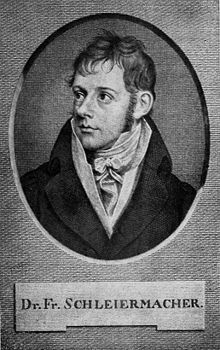 Schleiermacher and Fichte based their idea of university on the transcendental idealist philosophy and its new conception of science. A mere technical academy could not represent the totality of knowledge. According to Schleiermacher, “the totality of knowledge should be shown by perceiving the principles as well as the outline of all learning in such a way that one develops the ability to pursue each sphere of knowledge on his own.” All genuine and creative scholarly work must be rooted in the scientific spirit as expressed in philosophy.[51] [53] The philosophical faculty was to predominate over the other faculties in the university because, “there is no productive scientific capacity in the absence of the speculative spirit.”[52] [54] The students were to be captivated by the idea of knowledge, and all specialized learning was to be understood in accordance with the entire framework of knowledge. From this, the students would derive the impulse for their own research.[53] [55]
Schleiermacher and Fichte based their idea of university on the transcendental idealist philosophy and its new conception of science. A mere technical academy could not represent the totality of knowledge. According to Schleiermacher, “the totality of knowledge should be shown by perceiving the principles as well as the outline of all learning in such a way that one develops the ability to pursue each sphere of knowledge on his own.” All genuine and creative scholarly work must be rooted in the scientific spirit as expressed in philosophy.[51] [53] The philosophical faculty was to predominate over the other faculties in the university because, “there is no productive scientific capacity in the absence of the speculative spirit.”[52] [54] The students were to be captivated by the idea of knowledge, and all specialized learning was to be understood in accordance with the entire framework of knowledge. From this, the students would derive the impulse for their own research.[53] [55]
In 1810, Schleiermacher joined the Prussian Academy of Sciences and became permanent secretary of the philosophical division in 1814. There he worked to establish a new field, cultural-historical studies, in which he emphasized a new study of antiquity that combined philosophy with the history of philosophy, law, and art. A critical edition of Aristotle’s works was also prepared at his recommendation. Because of the importance of the new studies, Schleiermacher urged the appointment of Hegel to Berlin, but Hegel became isolated, and they had no personal relationship.[54] [56] Hegel soon took issue with Schleiermacher’s theology of feeling and blasted Schleiermacher in every lecture cycle.[55] [57] Schleiermacher, in turn made sure that Hegel was kept out of the Academy of Sciences, ostensibly on the grounds that Hegel’s speculative philosophy was no science.[56] [58]
Schleiermacher served as a pastor alongside his academic appointments his whole career. During the French occupation he used his pulpit in the Berlin Charité to raise the spirits of his congregation and instill in them the spirit of nationalism. The philosopher Henrik Steffens, a friend of Schleiermacher’s, described his sermons thus: “How he elevated and settled the mind of [Berlin’s] citizens […]; through him Berlin was as if transformed […]. His commanding, refreshing, always joyful spirit was like a courageous army in that most troubled time.”[57] [59] In 1808 he joined a secret group of agitators, who sought to prepare a popular uprising and a war against Napoleon. There he befriended prominent patriots like general Gerhard von Scharnhorst and field marshal August von Gneisenau, whose names were later given to famous German battleships. Political maneuvers of Russia and Austria ruined the work of the secret group and the possibility of war against Napoleon would have to wait a few years.[58] [60]
Then in 1813, Prussia prepared to fight Napoleon again. That year, Schleiermacher preached a sermon before young soldiers in Berlin who were going to fight the coming war. He told them that they should think only of the nation when fighting. That should be their inspiration for bravery. They were fighting for the Fatherland and not for personal liberties. If a soldier died fighting to preserve his personal liberties, his death was a total waste since one had to be alive to enjoy the liberty. To die fighting for the Fatherland, on the other hand, was only an “utterly insignificant casualty.” Schleiermacher, valued death from a mystical point of view, as it united the soul with God. He knew what tragedy the death of a soldier was, but he wanted them to know that the only meaningful death for a soldier would be for the sake of the Fatherland. He himself served in the Landsturm reserve unit for the defense of Berlin. The Landsturm was supposed to be a second line of defense behind the newly established Landwehr.[59] [61]
The struggle against France and the ineffective political organization in Prussia caused Schleiermacher to begin to question the rule by divine right, on which the monarchy was based. Germany was ruled by many monarchs who all claimed to rule by the will of God, but to Schleiermacher, God would only approve a unified Germany. A rule by a monarch was only justified by the will of the nation as expressed in its traditions. He also blamed the conceited aristocracy for Germany’s troubles, for they were more concerned with their own status than with the welfare of the Fatherland. [60] [62]
It was during a crisis period over the defense of Berlin that Schleiermacher also noted that one particular group was very unwilling to participate in the Landsturm reserve units. He had no sympathy for those who left Berlin only to avoid their obligations, and conspicuous among them were the Jews. In 1799, Schleiermacher had advocated full civil rights for the Jews. Now he saw no place for them in Prussia, nor could he foresee one in a unified Germany. Before 1813 he had also never criticized Jewish theology, traditions, or culture. That was to change too.[61] [63]
In the summer of 1813, Schleiermacher was appointed as a journalist and editor of a newspaper called The Prussian Correspondent, where he began to criticize the Prussian government for its handling of the war. He regarded a peace treaty with France as a betrayal since it would doom the chance to unify Germany. King Friedrich Wilhelm was furious with Schleiermacher and had him dismissed from the newspaper and expelled from Berlin. The order was later eased, and Schleiermacher got to stay and keep his position in the University and as pastor.[62] [64]
After the defeat of Napoleon in 1814, a period of reaction began in Prussia, and Schleiermacher found himself almost an enemy of the state. Despite official opposition and knowing that he would never live to see the unification of Germany, Schleiermacher still preached and taught the ideals of German nationalism in the church and in his lectures. He decided to be patient and prepare the groundwork for a unified German state, or as much as the Prussian government would tolerate.[63] [65] For fifteen years he had to live with the fear of persecution, and many friends and colleagues were forced to choose between him and the government.[64] [66] Yet he remained publicly committed to German nationalism, certain that those who frustrated the nationalist effort would ultimately have to answer to God for their crime.[65] [67] We now turn to Schleiermacher’s ideas as they appear in his mature writings.
Notes
[1] [68] Jerry F. Dawson, Friedrich Schleiermacher: The Evolution of a Nationalist, (Austin: University of Texas Press, 1966), p. 66.
[2] [69] Friedrich Schleiermacher, The Life of Schleiermacher, as Unfolded in His Autobiography and Letters, vol. II, trans. Frederica Rowan, (London: Smith, Elder and Co., 1860), p. 125.
[3] [70] Jacqueline Marina, “Introduction”, The Cambridge Companion to Friedrich Schleiermacher, ed. Jacqueline Marina, (Cambridge: Cambridge University Press, 2005), p. 1.
[4] [71] Richard R. Niebuhr, Schleiermacher on Christ and Religion, (London: SCM Press LTD, 1964), p. 6.
[5] [72] Niebuhr, p. 12.
[6] [73] Robert Merrihew Adams, “Faith and Religious Knowledge”, The Cambridge Companion to Friedrich Schleiermacher, ed. Jacqueline Marina, (Cambridge: Cambridge University Press, 2005), p. 37.
[7] [74] Robert P. Scharlemann, “Friedrich Schleiermacher”, Encyclopædia Britannica, (2006, September 22), retrieved from https://www.britannica.com/biography/Friedrich-Schleiermacher.
[8] [75] Martin Redeker, 9-10.
[9] [76] Gary Dorrien, Kantian Reason and Hegelian Spirit: The Idealistic Logic of Modern Theology, (Chichester: John Wiley & Sons, 2015), p. 86.
[10] [77] Martin Redeker, Schleiermacher: Life and Thought, trans. John Wallhausser, (Philadelphia: Fortress Press, 1973, p. 14.
[11] [78] Redeker, p. 15.
[12] [79] Dorrien, p. 87.
[13] [80] Dorrien, pp. 88-89.
[14] [81] Redeker, p. 22.
[15] [82] Redeker, pp. 62-63.
[16] [83] Dawson, p. 47.
[17] [84] Julia A. Lamm, “Schleiermacher as Plato Scholar, The Journal of Religion, Vol. 80, No. 2, (Chicago: The University of Chicago Press, 2000), pp. 206-207.
[18] [85] Dorrien, pp. 89-90.
[19] [86] Dorrien, p. 93.
[20] [87] Redeker, p. 38.
[21] [88] Dorrien, p. 92.
[22] [89] Dorrien, p. 93.
[23] [90] Dorrien p. 93.
[24] [91] Redker, p. 39-40.
[25] [92] Dorrien, pp. 93-94.
[26] [93] Redeker p. 48.
[27] [94] Michael Inwood, “German Philosophy”, The Oxford Companion to Phiosophy, ed. Ted Honderich, (Oxford: Oxford University Press, 2005), p. 336.
[28] [95] Friedrich Schleiermacher, On Religion: Speeches to its Cultured Despisers, trans. John Oman, (London: Kegan Paul, Trench, Trübner & Co., 1893), p. 9.
[29] [96] Schleiermacher, On Religion, pp. 9-10.
[30] [97] Dorrien, p. 94.
[31] [98] Redeker, p. 76.
[32] [99] Redeker, p. 82.
[33] [100] Redeker, p. 83.
[34] [101] Redeker, p. 83.
[35] [102] Redeker, p. 83.
[36] [103] Niebuhr, pp. 60-61.
[37] [104] Niebuhr, pp. 62-63.
[38] [105] Redeker, p. 85.
[39] [106] Friedrich Schleiermacher, Christmas Eve Celebration: A Dialogue, trans. Terrence N. Tice, (Eugene: Cascade Books, 2010), pp. 75-76.
[40] [107] Niebuhr, p. 63.
[41] [108] Redeker, p. 82.
[42] [109] Redeker, p. 86.
[43] [110] Dorrien, p. 96.
[44] [111] Redeker, p. 86.
[45] [112] Dorrien, pp. 96-97.
[46] [113] Redeker, p. 88.
[47] [114] Redeker, p. 89.
[48] [115] Dawson, pp. 63-64.
[49] [116] Dawson, p. 41.
[50] [117] Redeker, pp. 95-96.
[51] [118] Redeker, p. 96.
[52] [119] Redeker, p. 96.
[53] [120] Redeker, p. 97.
[54] [121] Redeker, p. 186.
[55] [122] Dorrien, p. 212.
[56] [123] Dorrien, p. 208.
[57] [124] Redeker, p. 91.
[58] [125] Redeker, p. 91.
[59] [126] Dawson, p. 104.
[60] [127] Dawson, pp. 108-110
[61] [128] Dawspon p. 115.
[62] [129] Dawspon pp. 118-120.
[63] [130] Dawspon pp. 123-124.
[64] [131] Dawspon p. 132.
[65] [132] Dawspon p. 98.
12:00 Publié dans Histoire, Philosophie | Lien permanent | Commentaires (0) | Tags : histoire, allemagne, phislosophie, friedrich schleiermacher, herméneutique, théorie politique, philosophie politique, sciences politiques, politologie |  |
|  del.icio.us |
del.icio.us |  |
|  Digg |
Digg | ![]() Facebook
Facebook
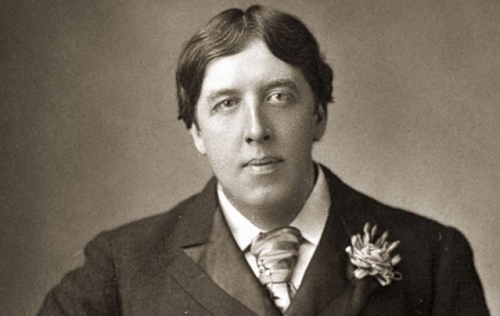
Roy Morris, Jr.
Declaring His Genius: Oscar Wilde in North America
Cambridge: Harvard University Press, 2013
Oscar Wilde arrived in America in January 1882 as a young man of 27. Over the course of the next eleven months he would travel 15,000 miles across the country, delivering a total of 140 lectures primarily on the English Renaissance, the Pre-Raphaelites, and the decorative arts. He encountered a motley cast of characters throughout his travels, ranging from politicians, reporters, and prominent literary figures to miners and cowboys out West. It was in the West that he found the audience most receptive to his ideas.

His lecture tour recalls the lyceum movement that flourished in the early nineteenth century, which entailed the establishment of hundreds of organizations across the country that sponsored public educational programs and provided venues for traveling lecturers and entertainers. Morris’s book chronicles each leg of Wilde’s tour in detail. The usual sequence of events that unfolded in each city upon his arrival lends itself to repetition, but the subject matter is interesting enough that the book remains engaging. It also benefits from the inclusion of a handful of Wilde’s characteristic witticisms (e.g., upon visiting Cincinnati he remarked: “I wonder no criminal has ever pleaded the ugliness of your city as an excuse for his crimes!”).
By 1882 Wilde had not yet distinguished himself as a playwright and poet (he had written only one play, almost never performed today, and a short poetry collection) but was already a figurehead of the Aesthetic Movement on account of his colorful personality and skill in self-promotion. He set off for America at the request of the English impresario Richard D’Oyly Carte, who had produced Gilbert and Sullivan’s Patience and wanted to promote the play in America by showcasing Wilde as a real-life Bunthorne who would familiarize Americans with aestheticism, which the play was meant to satirize. Wilde embraced the role and used it to his advantage. His flamboyant persona attracted the attention of Americans of all stripes, and his lectures regularly drew large crowds.
Wilde grew to be a polarizing figure who was both admired and reviled. As his fame increased he was invited to many social events, where his witty repartees made him a popular guest. Conversely he was often ridiculed in the press: the Chicago Tribune deemed him “a twittering sparrow come to fill his maw with insects” and the Washington Post printed a drawing of him beside a primitive-looking character, “Mr. Wild of Borneo,” suggesting that he represented a decline in human evolution (also inviting comparison to the “Wild Men of Borneo,” a pair of mentally retarded midgets who featured in P. T. Barnum’s freak shows). In Boston he was mocked by Harvard students and criticized by Henry James, who called him a “fatuous fool.” Wilde thrived on the controversy.
Overall he was greeted with the greatest enthusiasm not in the universities or salons of the Eastern cities, but in the West. Wilde likewise preferred the West to the East:
I am especially delighted with the West, it is so new and fresh, and the people are so generous and free from prejudice. In the older cities in the East, the people are enveloped in a perfect mist of prejudice, quite unlimited; they have imported so many Old World ideas, absurdities, and affectations, that they have lost all sincerity and naturalness.
The “prejudice” he mentions likely refers to ideas about class and social conventions. His criticism of such prejudices did not prevent him from disparaging Chinese art and tapping into anti-Chinese sentiment in San Francisco (though Chinatown intrigued him): “Don’t borrow any Chinese art, for you have no need of it any more than you have need of Chinese labor.” Wilde was popular in San Francisco and described it as his favorite American city.
Interestingly he also sympathized with Southerners, comparing their attempt to secede from the Union to Ireland’s struggle for independence. On his tour he encountered the Confederate general P. G. T. Beauregard, who showed him the sites of New Orleans, and Jefferson Davis himself, whom Wilde called “a man of the keenest intellect.”
But most interesting is Wilde’s encounter with silver miners in Leadville, Colorado. Leadville was notable for being one of the world’s largest silver camps as well as for being the hometown of John Baker “Texas Jack” Omohundro, a famous cowboy and friend of Buffalo Bill, and the outlaw Doc Holliday, who took part in the gunfight at the O.K. Corral. The town was the site of regular gunfights and Wilde brushed up on his shooting skills before arriving.
His first appearance in Leadville was at an opera house, where he lectured on Renaissance art to a fascinated audience. The author relates an anecdote: “After Wilde invoked the name of Renaissance goldsmith Benvenuto Cellini, the miners wanted to know why Wilde hadn’t brought him along. When Wilde said that, regrettably, Cellini was dead, they wanted to know who had shot him.” Wilde was then taken to the depths of a silver mine, where he drank whiskey with the miners, who pronounced him “a bully boy with no glass eye” and gave him tips on silver mining.
Wilde’s persona as an effete dandy seems incompatible with the image of manly frontiersmen, but it is perhaps not surprising that his ideas resonated with the miners.
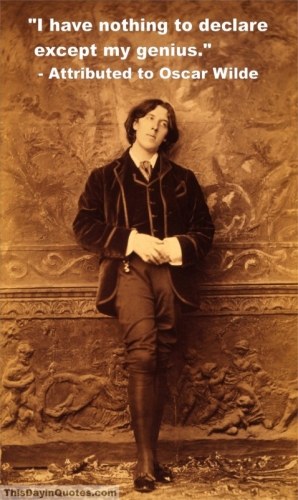
In spite of his foppish appearance, Wilde was described as a man of a vigorous, hearty temperament who possessed a firm handshake and readily engaged in fistfights when challenged. Physically he was described as being six foot three, though thin, with broad shoulders and strong arms. He was an avid drinker and could outdrink most. (He also held realistic views regarding differences between the sexes that would be considered politically incorrect today.)
Moreover Wilde’s worldview was fundamentally anti-bourgeois. His devotion to beauty transcended economic and moral concerns. This led him to criticize the modern, capitalist conception of work, which he believed was inherently antithetical to the creative process. He believed that “a man’s work should be a joy to him” and that one should subordinate himself not to “work” but to higher ideals.
Wilde stated that the intent of his lecture tour in America was “to make art not a luxury for the rich but, as it should be, the most splendid of all the chords through which the spirit of any nation manifests its power.” His idea of a political utopia entailed liberating the working class from their slavery to machinery, which would grant them the opportunity to create art and reach their fullest potential. This was an era in which workers in both America and Britain endured terrible conditions, working long hours and receiving little pay. Thus Wilde was an egalitarian, though his beliefs bore scant resemblance to the leveling force of modern progressivism, as he believed that ultimately one should aspire to attain higher levels of being (the idea that absolute ideals, such as beauty, exist and that one should strive toward them runs counter to egalitarian relativism). The political system he envisioned was one that would enable each individual to pursue self-actualization, thereby ennobling the soul.
Wilde believed that this could be accomplished through future advances in technology:
Under proper conditions machinery will serve man . . . The fact is, that civilisation requires slaves. The Greeks were quite right there. Unless there are slaves to do the ugly, horrible, uninteresting work, culture and contemplation become almost impossible. Human slavery is wrong, insecure, and demoralising. On mechanical slavery, on the slavery of the machine, the future of the world depends.[1]
The author notes that Wilde “sounds a little like Marx” in his essay on socialism (“The Soul of Man under Socialism”), but it would be more accurate to compare Wilde’s idea of socialism to the philosophy of Social Credit (apart from their very different approaches to private property) in that the Social Credit movement advocated the advancement of technology toward a similar end and proposed the idea of a “National Dividend” that would lend people the freedom to pursue artistic, intellectual, and spiritual endeavors.
Wilde’s views can be compared to those of William Morris, an English poet, painter, and textile designer associated with the Pre-Raphaelites (who in turn heavily influenced the Aesthetic Movement). Inspired by the workers’ guilds of the Middle Ages, Morris sought to restore dignity to work by promoting hand-craftsmanship and raising it to the level of art. Thus he came to reject the joint forces of modernity and capitalism.
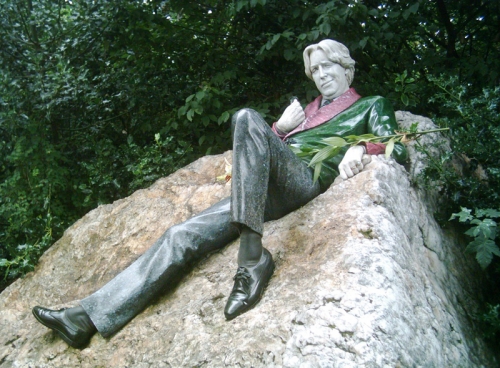
The rugged individualism of the Wild West represented a similar rejection of bourgeois values. In the West, men were masters of their own fate. The notion of economic security was subordinated to the ideals of courage, adventurousness, and honor. Therefore the spirit of the frontier shared the same fundamental instinct as Wilde’s aestheticism. This also occurred to Wilde when he saw a sign in Leadville that read “Don’t shoot the pianist; he is doing his best” and was struck by the fact that in the Wild West, poor piano playing could be grounds for being shot. He declared that this was, in his words, “the only rational method of art criticism I have ever come across.”
Morris’s account of Wilde’s lecture tour in America also recalls an era in which artists and intellectuals engaged with the public on a much broader scale and assumed a level of public responsibility that one rarely finds among artists and intellectuals today. The tradition of the public intellectual remained a staple of American cultural life until it began to fizzle out by the latter half of the twentieth century. There are a number of reasons for this, from the increasing hyperspecialization of academia to the rapid growth of the Internet. But it can also be traced back to the contempt that most modern American intellectuals have for the majority of Americans. There is no bond that exists between them and the people because they entirely lack empathy for the common man. By contrast, Wilde was a populist: he hoped that “the masses [would] come to be the creators in art.” Modern leftists claim Wilde as one of their own but it is clear that were he alive today, his staunch populism and simultaneous aesthetic elitism (and his wit) would set him apart from the rest and perhaps would even render him a fellow traveler of the Right.
Note
1. Oscar Wilde, “The Soul of Man under Socialism,” 1891.
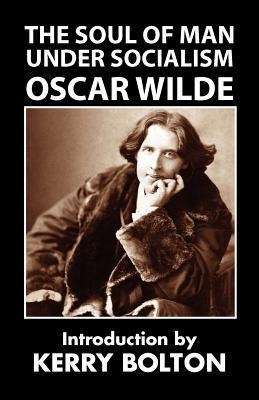
Article printed from Counter-Currents Publishing: https://www.counter-currents.com
URL to article: https://www.counter-currents.com/2017/10/oscar-wilde-in-america/
URLs in this post:
[1] Image: https://www.counter-currents.com/wp-content/uploads/2017/10/DeclaringHisGenius.jpg
[2] Image: https://www.counter-currents.com/wp-content/uploads/2017/10/Oscar-Wilde-I-have-nothing-to-declare-except-my-genius-8x6.jpg
11:37 Publié dans Littérature | Lien permanent | Commentaires (0) | Tags : littérature, littérature anglaise, lettres, lettres anglaises, oscar wilde, états-unis, angleterre, 19ème siècle |  |
|  del.icio.us |
del.icio.us |  |
|  Digg |
Digg | ![]() Facebook
Facebook

Ex: http://www.europemaxima.com
L’Accord économique et commercial global conclu entre le Canada et l’Union pseudo-européenne, plus connu sous ses initiales anglophones de CETA, est entré en vigueur le 21 septembre dernier alors que les parlements nationaux, voire les assemblées régionales, des États membres ne l’ont pas encore entériné. Le CETA s’appliquerait-il ainsi sans la moindre approbation légale ? La réponse est plus complexe dans les faits.La ratification de ce traité de libre-échange s’effectue en réalité en deux temps. Le 15 février dernier, le Parlement européen le ratifiait par 408 voix (venus des bancs socialistes, libéraux, centristes et conservateurs) contre 254 et 33 abstentions. Adopté, le traité s’applique dès à présent uniquement en ce qui concerne les compétences exclusives de l’Union dite européenne. Ce n’est qu’une ratification partielle, car les clauses portant sur les compétences partagées entre Bruxelles et les États membres (ou même leurs régions autonomes ou fédérées) ne peuvent pour l’instant entrer en vigueur, faute d’approbation parlementaire.
Il y a un an, en octobre 2016, la région Wallonie alors dirigée par les socialistes s’élevait contre ce traité pendant une semaine ! Puis, fidèles à leur couardise, les socialistes wallons capitulèrent en rase campagne. La procédure de ratification a dès à présent commencé avec l’acceptation du Congrès des députés d’Espagne, de la Croatie et de la Lettonie. Elle va continuer sans trop de résistances parlementaires. En effet, sur ce point précis, les quatre États du fameux Groupe de Visegrad (Pologne, Hongrie, Tchéquie, Slovaquie) n’éprouvent aucune réticence à entériner ce document de 2 344 pages.
Le CETA aurait dû susciter en France l’indignation non seulement des élus de l’« Hexagone asservi » du camarade Mélenchon, mais aussi la colère d’un Front national en proie à de vives querelles internes. Pour la circonstance, « marinistes », « philippotistes », « marionistes » et « jean-maristes » auraient pu se retrouver contre un traité abject qui va ruiner l’agriculture européenne, polluer notre alimentation et favoriser les firmes transnationales. Mais pour cela, il eût fallu à ce parti politique une authentique fibre sociale-identitaire. Encore une occasion ratée !
Georges Feltin-Tracol
• « Chronique hebdomadaire du Village planétaire », n° 49, diffusée sur Radio-Libertés, le 20 octobre 2017.
11:24 Publié dans Actualité, Affaires européennes, Géopolitique | Lien permanent | Commentaires (0) | Tags : actualité, géopolitique, europe, affaires européennes, politique internationale, canada, ceta, union européenne, traité transatlantique |  |
|  del.icio.us |
del.icio.us |  |
|  Digg |
Digg | ![]() Facebook
Facebook

par Jean-Paul Baquiast
Ex: http://www.europesolidaire.eu
Xi Jinping, dans son long exposé devant le 19e congrès, a esquissé l'avenir qu'il proposait à la Chine pour les 30 prochaines années. Elle deviendra:
- une société « modérément prospère » aux alentours de 2020,
- une nation profondément modernisée vers 2035,
- une nation socialiste riche et puissante vers 2050.
Il n'a pas précisé cependant, bien qu'il n'en ignore certainement rien, que la planète évoluera profondément pendant ce laps de temps. Même dans un scénario optimiste, cette évolution accumulera des problèmes que la Chine devra s'efforcer de résoudre, sans pour autant réussir à le faire totalement. Le sort de la Chine ne sera pas très différent à cet égard de celui des autres régions du monde. Mais les difficultés prendront des aspects spécifiques compte tenu de la situation géographique et géopolitique du pays.
L'on comprend que Xi n'ait pas abordé ces questions difficiles, mais elles étaient certainement en arrière-plan dans l'esprit des mieux informés des membres du congrès. Inévitablement, ils attendront du pouvoir que des discussions permettent sans attendre d'y réfléchir en commun et d'esquisser des projets de réponse.
Résumons sommairement pour notre part les problèmes que selon nous, la Chine devra affronter:
La croissance démographique dans les autres parties du monde
Alors que la Chine continuera à s'efforcer de contrôler sa natalité, l'Afrique actuellement peuplée de 2 milliards d'habitants, verra inexorablement sa population passer à 4 milliards à la fin du siècle. Ceci réduira sensiblement les perspectives d'émigration chinoise, fut-elle temporaire. D'autres pays asiatiques verront également leurs effectifs démographiques s'accroitre.
L'évolution sociétale
La Chine pourra-t-elle, vu le poids des traditions, assurer complément l'égalité entre les hommes et les femmes? Quelles classes ou couches sociétales supporteront le plus gros des efforts d'investissement? L'inégalité entre une petite minorité de riches et une écrasante majorité de pauvres s'atténuera-t-elle? Le gouvernement, lui-même inévitablement composé de représentants des riches, sera-t-il décidé à s'y attaquer de façon volontariste?
Les effets du réchauffement climatique
La Chine les subira de plein fouet: manque d'eau et désertification, réduction sensible du débit des grands fleuves himalayens qui resteront le poumon de la Chine, accroissement de la pollution due au vent et à la poussière...Comment et à quels coûts le pays y fera face?
L'accroissement des besoins en matières premières industrielles
La Chine n'est bien pourvue à cet égard que dans le domaine des terres rares. Comment et à quels coûts fera-t-elle face aux besoins?
L'accroissement des besoins énergétiques
La Chine manque de ressources en énergies fossiles, charbon, gaz et pétrole. Elle les doit les importer. Le recours aux énergies renouvelables et au nucléaire sera-t-il suffisant? La Chine investira massivement dans le solaire, mais ceci ne se fera pas sans dépenses considérables.
Au plan géopolitique et diplomatique
La Chine s'efforcera-t-elle d'améliorer ses relations potentiellement conflictuelles avec l'Inde, notamment dans le Tibet, ou avec le Pakistan.
Certains pays concernés par le développement de la BRI ( Belt and Road Initiative) subiront inévitablement une instabilité grandissante. Comment la Chine pourra-t-elle y remédier, afin que la BRI ne soit pas perturbée, sinon paralysée?
Comment évolueront les relations actuellement conflictuelles avec des pays ou régions islamistes? On citera en premier lieu les Ouïghours.
La Chine devra-t-elle faire face à un accroissement du terrorisme islamique, et comment?
11:19 Publié dans Actualité, Géopolitique | Lien permanent | Commentaires (0) | Tags : actualité, géopolitique, politique internationale, chine, asie, affaires asiatiques, xi ping |  |
|  del.icio.us |
del.icio.us |  |
|  Digg |
Digg | ![]() Facebook
Facebook
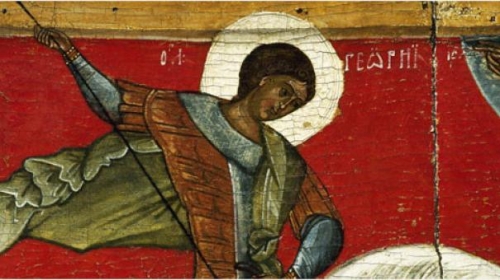
Le retour du Christ sur Terre, la parousie, ne surviendra pas tant que le katechon, cette figure « qui retient » le déchaînement du mal, agira efficacement. C’est ce qu’affirme l’apôtre Paul dans sa seconde épître aux Thessaloniciens. Si le texte biblique continue de faire débat chez les théologiens, certains pensent avoir identifié cette mystérieuse figure.
L’idée du katechon (κατέχων), que l’on pourrait traduire par « rétenteur » ou « retardateur », est largement ignorée des chrétiens eux-mêmes. Saint Paul s’adressant aux Thessaloniciens affirme pourtant, s’agissant de l’Antéchrist : « Maintenant vous savez ce qui le retient, de sorte qu’il ne se révélera qu’au temps fixé pour lui. Car le mystère d’iniquité est déjà à l’œuvre ; il suffit que soit écarté celui qui le retient à présent » (II Thessaloniciens 2, 6-7). Puissance qui empêche l’avènement du mal absolu et la fin du monde, le katechon atténue profondément l’eschatologie chrétienne dans son acception la plus fataliste, qui tend à considérer que le cours de l’histoire est tout entier entre les seules mains de la Providence.
Cette puissance qui retient semble devoir s’analyser en une entité théologico-politique. Vraisemblablement inspirée par Dieu pour la défense du bien chrétien, mais néanmoins libre des ses décisions comme l’est toute figure de la Création, elle réconcilie le déterminisme eschatologique avec une conception sphérique de l’histoire qui postule que l’homme, par l’action politique fondatrice de tout ordre, joue un rôle décisif dans le cours des événements et la lutte contre le règne du mal. C’est ce que notait Carl Schmitt, dernier grand penseur du katechon, lorsqu’il écrivait que « la foi en une force qui retient la fin du monde jette le seul pont qui mène de la paralysie eschatologique de tout devenir humain jusqu’à une puissance historique aussi imposante que celle de l’Empire chrétien des rois germaniques. » Cette conception schmittienne du katechon est issue du Nomos de la Terre, paru en 1950. Elle nous semble plus aboutie que celle utilisée en 1944 dans Terre et Mer, plus vague et générique, qui a pu conduire certains commentateurs à identifier le katechon à toute puissance étatique résistant à la marche forcée du monde vers une hypothétique anomie globale.
Le katechon est donc mû par une volonté propre et n’est pas la marionnette de Dieu sur terre. Il est une puissance décisive dont l’action concrète fonderait un ordre conforme à l’idée chrétienne du bien là où le désordre tendrait à s’insinuer. Chez Schmitt, le bien n’est pérenne que dans l’ordre, et la capacité à le conserver en décidant du cas d’exception est au souverain ce que le miracle est à Dieu. Cela suppose d’abord que la « vraie foi » soit établie et transmise, pour que l’idée chrétienne du bien contenue dans le décalogue et les « lois non écrites » puisse être poursuivie et défendue efficacement. L’institution de l’Église catholique romaine, vecteur et garante du dogme, est donc naturellement une composante du katechon selon Carl Schmitt, reprenant à son compte l’idée développée par nombre de théologiens et de Pères de l’Église. Mais parce que le katechon ne saurait se réduire à une autorité spirituelle, et suppose aussi la force d’action concrète du pouvoir politique, c’est plus précisément dans le Saint Empire romain germanique que le juriste en voyait une incarnation historique.
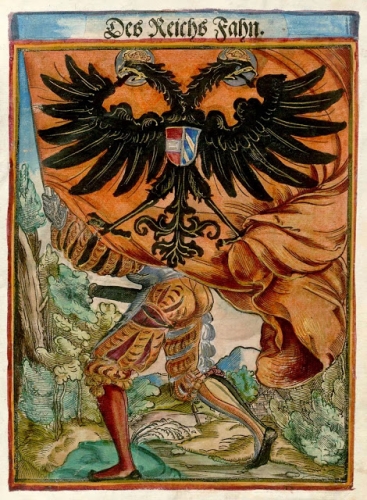
Une figure duale
L’Église latine est une institution indéfiniment ancrée dans le sol romain, comme une garantie de sa permanence, pour fonder un ordre à vocation universelle. Et l’association au sein de l’Empire d’Occident des deux ordres distincts de l’imperium et du sacerdotium, dévolus respectivement à l’Empereur et au Pape, formait une authentique communauté dans la Respublica Christiana. Ordre éternellement chrétien, puisque bâti sur la pierre angulaire de l’Église (le tombeau de Pierre) et sur lequel le mal, se propageant dans le monde, finirait toujours par buter.
C’est donc véritablement une figure duale, à la fois théologique et politique, que celle du katechon. Et si elle apparaît clairement dans la Respublica christiana, c’est justement par la distinction formelle de ces deux ordres d’imperium et de sacerdotium, qui renvoie à la distinction entre un pouvoir (potestas) et une autorité qui le légitime et le transcende (auctoritas), là où les sociétés traditionnelles réunissaient pouvoir temporel et autorité spirituelle sous la figure unique du roi-prêtre. Cet imperium avait d’ailleurs acquis une dimension proprement chrétienne, se définissait comme le commandement utile à maintenir l’ordre chrétien, et s’ajoutait aux prérogatives des rois chaque fois qu’il était nécessaire. Un évènement historique important est situé au XIe siècle, date de la réforme grégorienne au cours de laquelle l’Église s’affirme, avec force, indépendante et supérieure aux pouvoirs temporels. Mais cette distinction n’a pas immédiatement provoqué une opposition frontale, ni même l’exclusion mutuelle des deux domaines. Il y avait au contraire, initialement, la recherche d’une synergie, d’une conciliation, que Carl Schmitt résume dans l’expression de « lutte pour Rome ».
Or cette conception de la « puissance qui retient » ne pouvait valoir que dans un monde où tous les chemins menaient à Rome, où toute l’Europe chrétienne regardait vers le tombeau de Pierre comme vers le centre du monde et espérait la bénédiction de ses décisions politiques par les autorités romaines. L’autorité spirituelle ressemblait alors à un rempart au pouvoir politique, objet des passions potentiellement destructrices et contraires à l’ordre chrétien établi d’après Rome. Or, de ce romanisme médiéval concentrique, où le pouvoir cherchait à s’adjoindre l’autorité de l’Église, l’Europe a basculé vers un romanisme excentrique. C’est désormais à l’Église romaine de gagner le monde par ses propres moyens résiduels, d’imposer son bien par le bas, dépourvue de son autorité politique depuis l’émergence de la conception moderne et exclusive de la souveraineté. L’imperium et le sacerdotium, jusqu’alors distingués mais néanmoins liés, sont désormais deux ordres qui tendent à s’exclure mutuellement. L’État s’est divinisé.
L’Église se voit ainsi exclue des affaires politiques, contrainte à se plier aux exigences d’un monde où les États comptent sans elle. Si l’on peut certes reconnaître aux papes contemporains un rôle politique certain, celui-ci ne semble plus que ponctuel et exceptionnel et relève de l’influence bien plus que de la décision. On pense notamment à l’anticommunisme de Jean-Paul II et au soutien qu’il apporta à Solidarnosc en Pologne, peu avant l’implosion du bloc soviétique.
Symboliquement, la métamorphose de l’Église est acquise depuis le Concile « Vatican II », au cours duquel fut adopté l’usage des langues vernaculaires au détriment du latin dans les célébrations. L’Église qui s’adressait au monde entier dans un même langage s’est comme dissoute dans les particularismes. Elle est devenue une institution mondaine parmi d’autres, et sa lutte ne peut plus guère être menée en association avec les pouvoirs politiques en qui Carl Schmitt voyait les pierres fondatrices et les garanties de tout ordre. Non seulement les dimensions théologique et politique du katechon tendent à s’exclure, mais l’ordre romain du sacerdotium semble considérablement affaibli face à un imperium hypertrophié et dépourvu de sa dimension chrétienne ancienne. Pour bien des dépositaires du pouvoir politique, la parole de l’Église semble compter autant que celle d’une quelconque organisation non gouvernementale.
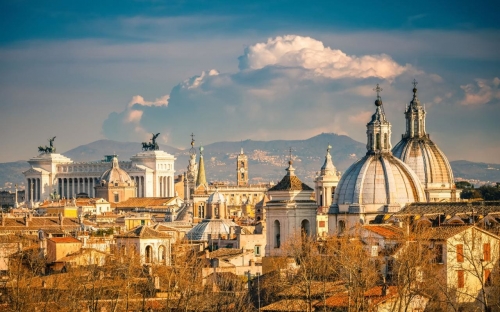
Rome éternelle ou troisième Rome ?
Certes, il convient de nuancer une approche trop européocentrique de la figure du katechon, le monde chrétien ne se limitant ni à Rome ni à l’Occident, et l’Église catholique latine n’étant pas la seule Église au monde. Cependant, sa forme historique sui generis lui a certainement confié une légitimité particulière. Et c’est l’Empire d’Occident qui conserva le lien géographique avec le tombeau de Pierre, assise tellurique déterminante aux yeux de Carl Schmitt et de nombreux théologiens occidentaux, car elle permettait un rayonnement universel puissant, une « juridiction universelle » partant d’un seul et unique centre de gravité. L’Église orthodoxe, en revanche, s’est développée dans une relation toute différente à la localité, témoignage d’un enracinement nécessairement moins imposant symboliquement, voyant le siège de Pierre en celui de chaque évêque.
L’idée que le katechon serait aujourd’hui incarné par la Russie orthodoxe fleurit pourtant ça et là depuis une dizaine d’années, notamment dans les courants eurasistes, comme une réminiscence de l’idéal d’une « troisième Rome » incarnée par Moscou. Le Patriarche Cyrille de Moscou, à la tête de l’Église orthodoxe russe, affirme régulièrement l’importance de la foi comme guide essentiel à la conduite des affaires politiques. Certes, il reproche aux sociétés d’Occident de s’estimer capables de fonder un ordre sain sur la négation de la chrétienté. De son côté, le gouvernement russe actuel manifeste ostensiblement son identité chrétienne. Il n’y a cependant là rien de comparable avec l’articulation historique de l’imperium et du sacerdotium, ni avec le rayonnement universel de l’Église romaine d’autrefois.
Ironie du sort, c’est peut-être aujourd’hui l’Organisation des Nations Unies qui constitue l’autorité la plus universelle et qui continue le mieux l’autorité autrefois dévolue au Pape ! Un exemple parmi tant d’autres : la colonisation des Amériques par l’Espagne était fondée juridiquement sur un mandat de mission pontificale, tout comme l’ONU délivre aujourd’hui des mandats fondant des opérations dites de « maintien de la paix ». L’arbitrage moral quant à l’emploi de la violence armée par les puissances dominantes se fait au sein de cette organisation, au nom de principes aussi généraux que généreux. On a longtemps justifié les conquêtes et les pillages par la nécessité de répandre le christianisme sur les terres inexplorées, puis par celle de « civiliser » les « sauvages ». Désormais, on apporte les Droits de l’Homme. Ce que l’on appelait le droit des gens, le droit international applicable aux étrangers non chrétiens, se retrouve aujourd’hui sous l’appellation pudique de « droit international humanitaire », autrement appelé droit de la guerre. Mais l’Évangile ne figurant pas parmi les références de l’Organisation, et l’ordre qu’elle fonde ne semblant pas inspiré par les exigences chrétiennes, elle ne serait qu’une sorte de katechon laïque, de toute façon dépendante des États souverains. Or, purement théologique, un katechon n’aurait pas le pouvoir de fonder un ordre social ; purement politique, il serait condamné à dévier.
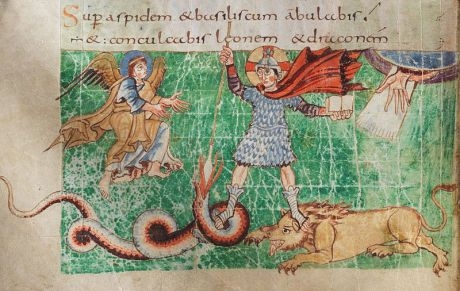
Le katechon sous sa forme historique, tel que Carl Schmitt l’a conçu, est-il alors une figure morte ? Elle semble éteinte, et les métamorphoses juridiques et politiques l’ont certainement mené à prendre une forme nouvelle qui peine à se dévoiler. Mais une menace plane : ne le voyant plus, l’Occident ne semble plus croire au katechon, et donc ne plus se penser capable, et encore moins destiné, à l’incarner. Il faut dire que les prophéties hégéliennes modernes de la « fin de l’Histoire » et de l’avènement d’un « État universel et homogène » (Kojève) idyllique vont encore bon train, privant l’idée du katechon de sa raison d’être. C’est d’abord de son urgente nécessité qu’il faudra se convaincre pour pouvoir l’incarner à nouveau. Suivant l’intuition schmittienne, c’est certainement dans la redécouverte de la doctrine chrétienne véritable et ordonnée que se trouve la vitalité du katechon, ce qui conforte aujourd’hui les conservateurs dans l’Église face à un Pape controversé et souvent décrit comme progressiste. Mais se pose encore la question de la portée politique de cette doctrine dans le monde contemporain. Il n’y a plus guère de pieux monarque qui règne, et les souverainetés déjà diluées dans les foules démocratiques se partagent désormais entre une infinité de monstres bureaucratiques. Si le diable est celui qui divise, le katechon ne peut sans doute se retrouver que dans une convergence théologico-politique, une tendance à la réunification des deux ordres en équilibre.
17:10 Publié dans Philosophie, Théorie politique | Lien permanent | Commentaires (0) | Tags : théologie, théologie politique, katechon, carl schmitt, allemagne, révolution conservatrice, catholicisme, théorie politique, philosophie, philosophie politique, politologie, sciences politiques |  |
|  del.icio.us |
del.icio.us |  |
|  Digg |
Digg | ![]() Facebook
Facebook
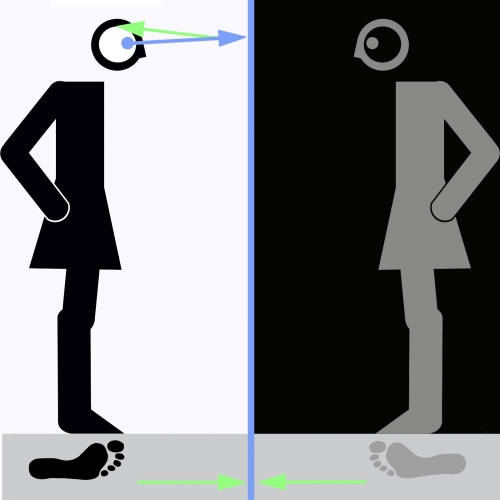
De un modo análogo a como sucede con la autoconstitución del ser, por contraposición al no-ser, la sociedad se auto-instituye en términos del nosotros del interior frente a los otros del exterior, construcción creada, pues, bien por un acto de distinción que designará al “nosotros” como diferente frente a los “otros”, o bien por un acto de indistinción que indicará que el “nosotros” es igual que los “otros”. Sin embargo, nuestra reflexión sobre las problemáticas posmodernas conduce, de forma inexorable, a la defensa de la identidad y del derecho a la diferencia, sean éstas individuales o colectivas.
La modernidad liberal
La cuestión de la identidad, siempre marginada por la modernidad, nunca ha tenido mayor pertinencia que en nuestra edad pos(hiper)moderna. La reducción de todo el planeta a los dictados de los imperativos del mercado, patrocinados por las fuerzas norteamericanas de la globalización, presenta actualmente una fase de desarraigo y desestructuración de todos los pueblos del mundo, sin precedentes dignos de mención, destruyendo las filiaciones tradicionales y modernas que, una vez, constituyeron las bases de la identidad –y con ello también, los fundamentos de la sociabilidad y su significado.
En las sociedades premodernas o tradicionales, la cuestión de la identidad era difícilmente concebible respecto a los “individuos” que, en este tipo de sociedades, se identificaban en términos de linaje, casta o grupo social. En la Edad Media europea, por ejemplo, la pregunta no era “¿quién soy yo?”, sino “¿a quién soy leal?”
La cuestión de la identidad surgió sólo como respuesta a la disolución de los vínculos sociales tradicionales, provocada por el advenimiento de la modernidad. La cuestión, por otra parte, tuvo un ámbito netamente europeo, porque era la “interioridad” moral de la validación del alma, alimentada por el cristianismo y, más tarde, legitimado secularmente por el racionalismo subjetivo de Descartes, la que produjo como resultado un individuo emancipado moderno e independiente dentro de una organización.
Estimulado por el individualismo humanista del Renacimiento y la Reforma y por las “revoluciones duales” de finales del siglo XVIII, el emergente sistema social moderno-liberal, centrado en los mercados nacionales, exigió, por lo tanto, liberar a la “persona” de la herencia de esas comunidades orgánicas y de los sistemas de relaciones sociales, las cuales “restringían” su autorrealización, como si el “individuo”, liberado de sus vínculos con la sangre, el espíritu y el patrimonio (que le situaban en el “tiempo”), de alguna manera pudiera tener una existencia más plena si se le privaba de todo lo que le había convertido, precisamente, en quién era.
La modernidad, como tal, favorecía, según Alain de Benoist, «una visión atomista de la sociedad… constituida por individuos fundamentalmente libres y racionales, que actúan como seres desvinculados, liberados de cualquier determinación apriorística y que pueden elegir por sí mismos los medios y valores para guiar sus acciones».
Este ideal liberal, para el que la identidad individual se considera primaria y la identidad colectiva resulta meramente incidental, surgió, como era de esperar, a partir del mismo proceso histórico que llevó a la homogeneización y neutralización de las “diferencias naturales” en la esfera pública, convirtiendo a la modernidad en una “ideología de lo mismo”, y a los hombres, aislados de sus “vínculos orgánicos”, en objeto de una identidad estandarizada, desarraigados ya de todos los lazos comunes y lugares trascendentales de referencia.
Los individuos, en este sentido, fueron vistos como inherentemente iguales entre sí, al igual que la humanidad se percibió como una masa indiferenciada de sujetos individuales, un conjunto en el que todos aparecen iguales en el ser constituyente del futuro mercado global.
La anomia social que siguió a esta atomización “liberal”, que disolvía los vínculos sociales y espirituales que tradicionalmente habían hecho de la vida una experiencia significativa, provocó entre los europeos numerosas contratendencias para restablecer formas alternativas de identidad, solidaridad y significado.
Por lo tanto, en contra de los ideales de la individualidad burguesa y las estructuras de homogeneización de la esfera pública moderna, indiferentes a la distinción y la diferencia, surgieron identidades basadas en la formación de partidos anticapitalistas y sindicatos, en la defensa del catolicismo y de las prácticas morales tradicionales, en la resistencia regionalista o agraria a la centralización del Estado, en la oposición étnica al “universalismo humanitario”, así como en ciertas instituciones del Estado, como el ejército o la escuela, formas, todas ellas, que forjaron nuevas identidades para reemplazar las que habían sido perdidas con la desaparición del Antiguo Régimen.
Y es que la dinámica liberal ha arrebatado al hombre de su comunidad, de sus vínculos sociales, de sus estilos de vida diferenciados, poniendo en marcha un confuso proceso de indistinción. Con el surgimiento de la modernidad, el racionalismo de Descartes y la metafísica de la subjetividad, la identidad individual prevalece sobre las identidades colectivas, ruptura llevada a cabo por los objetivos homogeneizadores del Estado-nación occidental y que culmina con la disolución de los vínculos tradicionales y espirituales para liberar al individuo en aras de su integración uniforme en la razón mercantil.
Es, por ello, que esta amenaza explica el resurgimiento, con más fuerza, de ciertas identidades culturales, políticas e ideológicas. La identidad es un bien autoconstitutivo: se construye y reconstruye en su relación con el conocimiento y el reconocimiento del otro. Pero así como existe un ámbito legítimo de reclamación/reconocimiento de la identidad, también existe una correlativa patología de afirmación/exclusión de esa identidad.
La pregunta ¿qué es la identidad?, no puede responderse acudiendo a las ideologías igualitarias y universalistas, como el cristianismo, el liberalismo, el racismo o el nacionalismo. Estas ideologías comparten la absurda tendencia a interpretar al otro sólo a través de uno mismo, pero ello impide no sólo la comprensión del otro sino también el conocimiento de uno mismo, en la medida en que no se puede llegar a ser plenamente consciente de la propia identidad sino mediante la confrontación de una variación externa: en definitiva, necesitamos al otro para ser plenamente conscientes de nuestra diferencia. La actitud ciega para ver en la alteridad de los otros un valor en sí mismo, niega por su propia lógica interna, toda posibilidad de identificar la propia mismidad.

La ideología de la mismidad
Se trata, según Alain de Benoist, de la «ideología de lo mismo» (o de la «forma de lo uno», según Marcel Gauchet), que aparece primero en Occidente, en el plano teológico, con la idea cristiana de que todos los hombres, cualesquiera que sean sus características propias, son iguales por naturaleza, consecuencia de la dignidad –el alma– de haber sido creados a la imagen del Dios único. El problema consiste en que la “ideología de lo mismo” sólo puede exigir a través de la exclusión radical de lo que no puede ser reducido a “lo mismo” (la igualitarista ideología de la mismidad se opone a la pluralista ideología de la otredad). Todas las ideologías totalitarias coinciden: la alteridad irreductible se convierte en el enemigo prioritario que se debe erradicar. La lógica contradictoria del universalismo y del individualismo no es la única contradicción que corroe la “ideología de lo mismo”, que unas veces parte de la idea de “naturaleza humana” y otras afirma que todas las determinaciones naturales son secundarias y accesorias, que el hombre sólo asume su “mejor humanidad” cuando se libera de ellas.
Así que, en definitiva, entre la igualdad y el igualitarismo existe más o menos la misma diferencia que entre la libertad y el liberalismo, o lo universal y el universalismo, o el bien común y el comunismo. El igualitarismo tiene como objetivo introducir la igualdad donde no tiene lugar y no se corresponde con la realidad, como la idea de que todas las personas tienen la misma identidad, un espejo universal que es incapaz de devolver la imagen de uno mismo, ni de reflejar la figura del otro ajeno. Las doctrinas igualitaristas entiende la igualdad como “un todo excluyente”, es decir, lo contrario de la diversidad. Sin embargo, lo contrario de la igualdad es la desigualdad, no la diversidad.
De ahí la denuncia de la “ideología de la igualdad”, es decir, la ideología universalista que, en sus formas religiosas o profanas, busca reducir la diversidad del mundo –es decir, la diversidad de las culturas, los sistemas de valores y las formas arraigadas de la vida– a un modelo uniforme. La implementación de la ideología de la “mismidad” conduce a la reducción y erradicación de las diferencias. Siendo básicamente etnocéntrica, a pesar de sus pretensiones universalistas, legitima sin cesar todas las formas de imperialismo. Hoy, en el nombre del sistema capitalista, la ideología de “lo mismo” reduce todo a los precios del mercado y transforma el mundo en un vasto y homogéneo mercado-lugar donde todos los hombres, reducidos al papel de productores y consumidores –para luego convertirse ellos mismos en productos básicos– deben adoptar la mentalidad del homo oeconomicus. En la medida en que trata de reducir la diversidad, borrar la identidad y negar el derecho a la diferencia, que son las auténticas riquezas de la humanidad, la “ideología de la mismidad” es, en sí misma, una caricatura de la igualdad.
Así que, hoy, estas identidades también han desaparecido. La desestructuración radical causada por la capitalización total y la globalización de la vida social está actualmente erosionando las –aún existentes– remanentes identitarias de las comunidades. Las instituciones a gran escala creadas por el Estado-nación, que una vez ofrecieron identidades alternativas y grupos sociales integrados sobre la base de “espacios unificados y construidos de arriba hacia abajo”, también están en crisis.
El comunitarismo
Es contra esta desestructuración nihilista que algunos pensadores se replantean la cuestión sobre la identidad, articulada en gran medida en el discurso de la escuela norteamericana de pensamiento –crítica del atomismo social del orden liberal– conocida como «comunitarismo», y cuyos pensadores principales son Charles Taylor, Alasdair MacIntyre, Michael Sandel y Michael Walzer. Una reflexión que se inserta entre los principios “diferencialistas” y las propuestas “comunitaristas”.
Pero, ¿cómo superar este proceso mundializador de las identidades? Alain de Benoist, en su intento por superar un devaluado multiculturalismo, adopta el comunitarismo, una corriente de pensamiento –curiosamente arraigada en el ámbito angloamericano– que denuncia el ideal antropológico liberal de un individuo aislado de todo contexto histórico, social y cultural. Según las tesis comunitaristas, «no puede haber autonomía individual si no hay autonomía colectiva, ni es posible una creación de sentido individual que no se inscriba en una creación colectiva de significado». Sin embargo, la sociedad-mundo encarnada por el liberalismo, al no asignar al individuo un lugar estable en la comunidad a la que pertenece, le ha arrebatado su legítimo deseo de identidad, de tal forma que el gran descubrimiento de la modernidad ya no es la necesidad de reconocimiento de las identidades, sino la triste constatación de que esa necesidad ya no puede ser satisfecha en el Gran Supermercado Global.
De hecho, con el fin de la Guerra Fría y el triunfo de la globalización, la necesidad de que la “comunidad” tomara un nuevo significado, hizo que las “sociedades occidentales” reaccionaran frente al aumento de la disfuncionalidad de sus propias instituciones nacionales, reacción que tuvo también su respuesta con la “emancipación” progresiva de los pueblos del Tercer Mundo, culturas y comportamientos en los más “diversos” espacios públicos.
Sin embargo, a pesar de que el comunitarismo promovía la creación de nuevos espacios públicos, estructurados por las diferencias, en lugar de serlo por la homogeneidad y la neutralidad (la nefasta “tolerancia”) liberales, esta corriente de pensamiento parece resueltamente “centrista”, esto es, opuesta a cualquier alteración radical o significativa de las relaciones sociales existentes. Puede que éste haya sido el motivo de su rápida aceptación y asimilación por las oligarquías gobernantes del mundo político y financiero.
El liberalismo, no cabe duda, ha socavado las identidades religiosas cristianas y tradicionales, pero de ninguna manera el comunitarismo, en su laicidad, pretende restablecer el carácter sagrado en los lugares públicos, o reprimir el materialismo subversivo de los intereses económicos dominantes. Del mismo modo, el feminismo puede haber socavado la institución familiar y demonizado la identidad masculina pero, una vez más, el comunitarismo, en su centralidad, no pretende el restablecimiento de la familia tradicional jerárquica, ni cuestiona los publicitarios roles emergentes de las mujeres que provocan la desvirilización del mundo. Cristianos y no cristianos, feministas y no feministas, fueron simplemente relegados a sus respectivas “comunidades”, sin ningún pensamiento real relativo a cómo estas comunidades antagónicas debían coexistir o cómo sus diferencias podían mejorar la cohesión social.
Y lo que todavía es más grave, el antiliberalismo comunitarista se fundamenta, de forma contradictoria, en uno de los más básicos principios liberales, porque, a pesar de su oposición formal a las políticas anticomunitarias del liberalismo, que favorecen el desarrollo de las fuerzas del mercado y la descomposición de las comunidades orgánicas, su llamamiento a la renovación de los vínculos comunitarios buscaba, en última instancia, la recuperación de la “sociedad civil”, la misma sociedad civil cuyos valores burgueses y mercantiles son los principios operativos básicos que inspiraron originalmente al liberalismo.
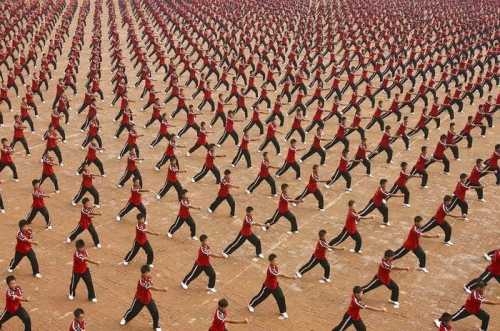
Al igual que los posmodernistas, Alain de Benoist, por ejemplo, acepta que cada individuo pueda participar en múltiples identidades: una mujer, por ejemplo, puede ser potencialmente capaz de identificarse –sucesiva o simultáneamente– a sí misma, como una feminista, una madre, un miembro del partido demócrata, y/o una fundadora de empresa. Acepta también que las identidades subjetivas/adquiridas tengan prioridad sobre las objetivas/adscritas; y que estas identidades posmodernas, cuyas diferencias deben ser reconocidas y comprometidas en la esfera pública, se han convertido en características de las actuales “diferencias” que fluyen y explotan de forma indistinta, a diferencia de la “permanencia relativa” de las identidades históricas, clásicas o, incluso modernistas, basadas en adscripciones o afiliaciones “orgánicas”. La presunción aquí es que el lenguaje, el territorio, la familia, incluso la cultura (aun la cultura en su sentido “pluricultural”), siendo a menudo la base de las comunidades, ya no son necesarias para la formación de las identidades.
No hay necesidad, por tanto, de volver a considerar “lo que ha pasado, lo que pasa, o lo que está por pasar”. Lo que es importante es permitir y aceptar que los individuos y sus comunidades sean “diferentes” los unos de los otros, a fin de garantizar la simbiosis armónica de la “diferencia” que se les reconoce en la esfera pública, en forma de algún tipo de institucionalidad o corporativismo supervisada por el Estado. Alain de Benoist no rechaza las concepciones históricas europeas sobre la identidad y la comunidad, aunque sí que cuestiona el desarrollo jacobino de las ideas de “pueblo” o “nación”, así como las formas de sutil colonización tercermundista. Además, insiste, en que el reconocimiento de “todas” –¿todas, incluso las que niegan el reconocimiento de las identidades distintas a la suya?– las diferencias identitarias y comunitarias son un seguro para revitalizar la “ciudadanía democrática”, aunque Carl Schmitt creyera que la homogeneidad es el fundamento de la democracia. Porque, ¿es posible la democracia dentro de un Estado étnicamente fracturado, socialmente desvinculado, desterritorializado, cuyos ciudadanos carecen de una cultura común compartida y un sentido general de la herencia y el parentesco? ¡Abandonad vuestra tierra, vuestra lengua, vuestra cultura, vuestra familia, vuestro pueblo! Europa retorna a las tribus nómadas, que buscan un oasis y acaban en el bazar.
Después de todo, parece bastante controvertida la necesidad de sostener unas estructuras multiculturales que proporcionen diversas opciones a los individuos en cuanto a sus afiliaciones identitarias. Tenemos que mantener nuestro compromiso con la tradición pues, finalmente, es a ella a quien debemos, en gran parte, nuestra identidad. Proteger la herencia cultural heredada y transmitirla, en toda su riqueza, a las futuras generaciones. Desde luego, no hay que aceptar incondicionalmente, como principio, que la identidad de un individuo se identifique automáticamente con su pertenencia a una determinada comunidad, pues aquél mantiene con ésta vínculos que no ha elegido y que, en consecuencia, puede ciertamente poner en cuestión. Éste es el problema acuciante en nuestras sociedades tan complejas y multiculturales, donde la diversidad de criterios es bien patente. Desde esta perspectiva sí que puede ser válido el comunitarismo, cuando reclama sociedades homogéneas en las que los individuos que no compartan –o se resistan a compartir– un mínimo común denominador de la herencia cultural recibida y mayoritaria, sean “invitados” a “salir de la comunidad”, de la misma manera que los ciudadanos de las antiguas polis griegas practicaban el “ostracismo”.
Pero no es conveniente juzgar la bondad de ciertas prácticas socioculturales –de determinadas identidades construidas de forma ficticia y al margen de la comunidad previamente establecida– por su éxito en el mercado global del sueño neoliberal, porque ello convertiría nuestras creencias, nuestras vidas y nuestras culturas en objeto de mercancía. La identidad de “nosotros” no puede depender de la tolerancia de los “otros”.
09:42 Publié dans Philosophie | Lien permanent | Commentaires (0) | Tags : philosophie, postmodernité, modernité |  |
|  del.icio.us |
del.icio.us |  |
|  Digg |
Digg | ![]() Facebook
Facebook
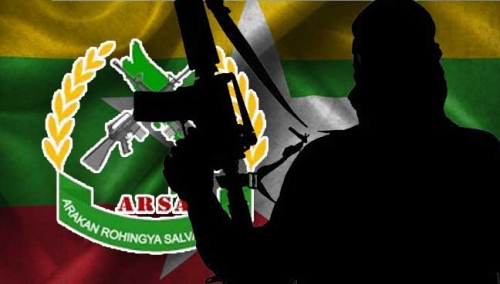
Des manifestations, des protestations et des pétitions en ligne sont apparues dans le monde entier pour défendre la lutte des Rohingyas expulsés du Myanmar. Ce qui est préoccupant, c’est que des forces politiques qui n’ont jamais défendu les droits des opprimés et n’ayant aucun intérêt à les défendre, y compris les régimes américain et saoudien, se sont joints à cet effort.
Alors qu’il menaçait la Corée, l’Iran et le Venezuela lors de son discours aux Nations Unies, le président américain Donald Trump a également exigé que le Conseil de sécurité des États-Unis prenne des mesures énergiques pour mettre fin à la violence contre la population rohingya du Myanmar.
Des représentants du gouvernement américain, dont l’ambassadeur des États-Unis auprès de l’ONU, Nikki Haley, le secrétaire d’État Rex Tillerson et le vice-président Mike Pence, ont appelé à une action immédiate et à l’acheminement d’une aide humanitaire aux Rohingyas.
Depuis que Washington et Riyad ont infligé une guerre meurtrière à des millions de personnes au Yémen, sans parler des autres parties du monde, les mouvements ouvriers et les forces anti-impérialistes du monde entier se demandent ce qui se cache derrière leur inquiétude soudaine pour un petit groupe ethnique d’Asie du Sud-Est. Cela pourrait-il avoir quelque chose à voir avec les manœuvres géopolitiques au Myanmar qui opposent la Chine aux États-Unis?
En tant qu’économie en plein essor dotée d’une planification centrale, d’une participation importante de l’État et de réserves de liquidités, la Chine est en mesure d’offrir un vaste développement des infrastructures. Le projet chinois One Belt One Road et d’autres plans économiques suscitent un grand intérêt (voir:http://lagazetteducitoyen.over-blog.com/2017/09/myanmar/b...).
La politique américaine est de plus en plus axée sur le sabotage de ces plans de développement avec une militarisation considérablement élargie et des guerres régionales. C’est la stratégie majeure du « Pivot vers l’Asie » du Pentagone. Un réseau occidental d’organisations non gouvernementales et d’extrémistes soutenus par les Saoudiens font parties du plan de déstabilisation.
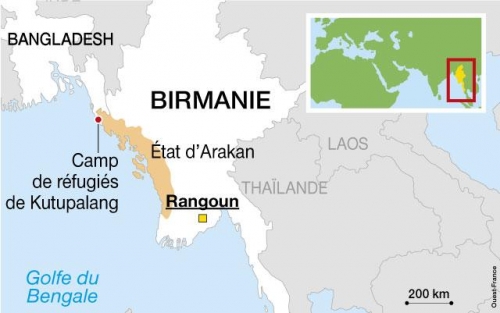
Le Myanmar et les Rohingyas
Le Myanmar, anciennement appelé Birmanie, est un pays autrefois colonisé, sous-développé et extrêmement diversifié de 51 millions de personnes. Il compte 135 groupes ethniques distincts parmi ses huit nationalités.
Le Myanmar est un pays riche en ressources et stratégiquement important qui borde la Chine, le Bangladesh, l’Inde, la Thaïlande et le Laos. Il est stratégiquement important pour les banques de Wall Street et les décideurs américains car c’est un grand exportateur de gaz naturel et il est prévu d’en faire un nouveau fournisseur de pétrole.
Au Myanmar, le peuple rohingya est un groupe ethnique opprimé d’environ un million de personnes. La majorité des Rohingyas sont musulmans, bien qu’ils représentent moins de la moitié de la population musulmane du Myanmar qui est dispersée dans tout ce pays majoritairement bouddhiste.
Les Rohingyas sont considérés comme apatrides. Ils vivent dans l’État Rakhine situé dans la baie du Bengale et qui partage une longue frontière commune avec le Bangladesh.
Dans des articles sur le Myanmar et les Rohingyas, Reuters News (https://www.reuters.com/article/us-myanmar-rohingya/myanm..., publié le 16 décembre 2016), le Chicago Tribune (http://www.chicagotribune.com/news/nationworld/sns-bc-as–..., publié le 31 août 2017), le Wall Street Journal (https://www.wsj.com/articles/myanmar-conflict-puts-rebel-..., publié le 13 septembre 2017) et le Centre de réflexion sur les études stratégiques et internationales (https://www.csis.org/analysis/myanmar-and-its-rohingya-mu..., publié le 7 septembre 2017), ont tous rapporté le soutien saoudien à la lutte des Rohingyas.
Le groupe menant la résistance armée au Myanmar, connue sous le nom de Harakah al-Yaqin (HaY, mouvement de foi en arabe) et maintenant appelé l’Armée Rohingya pour le Salut de l’Arakan (ARSA), a son siège à La Mecque, en Arabie Saoudite. Ataullah abu Ammar Junjuni, ressortissant pakistanais qui vivait en Arabie saoudite, est le chef de l’ARSA. Ce groupe a mené une attaque coordonnée contre 30 postes militaires du Myanmar le 25 août dernier.
L’armée du Myanmar a répondu par une vague de contre-attaques répressives contre les Rohingyas, ce qui a poussé des dizaines de milliers de personnes à franchir la frontière.
Crimes américains et saoudiens au Yémen
Pendant ce temps, le royaume saoudien mène une guerre génocidaire contre le Yémen, imposant un blocus de nourriture et d’aide contre le pays le plus pauvre de l’Asie du Sud-Ouest. Cette guerre n’est possible qu’en utilisant des avions à réaction et des bombes fabriqués aux États-Unis. L’armée saoudienne ne peut pas piloter ses propres avions à réaction ou effectuer des bombardements sans l’aide directe et le ravitaillement en vol des États-Unis. En outre, le Pentagone effectue actuellement au moins une frappe secrète tous les deux jours au Yémen.
Le Yémen est en train de subir « la plus grave crise de la faim dans le monde », « causée par l’homme » et qui affame « toute une génération ». (Washington Post, 19 mai 2017). Selon les chiffres américains, plus de 7 millions de Yéménites soufrent de la famine.
L’Organisation mondiale de la santé a mis en garde contre « la pire épidémie de choléra du monde » au Yémen (CNN, 4 octobre). Les États-Unis ont dénombré 777,229 cas de choléra le 2 octobre denier, dont beaucoup parmi les enfants.
Les bombardements saoudiens des infrastructures d’assainissement et d’égouts dans ce pays appauvri sont la cause majeure de cette mortelle épidémie. Pourtant, cette crise désespérée n’était pas à l’ordre du jour de l’ONU et est à peine mentionnée dans les médias alors que les dirigeants du monde se sont rencontrés à New York en septembre. L’accent médiatique a été mis sur le discours de Trump promettant d’aider les Rohingyas.
Le Département d’État américain a promis de fournir « des abris d’urgence, la sécurité alimentaire, une assistance nutritionnelle, une assistance psychosociale, de l’eau, l’assainissement et l’hygiène, des moyens de subsistance, une inclusion sociale, des articles non alimentaires, une réduction des risques de catastrophe et de crise, le rétablissement des liens familiaux, et la protection aux plus de 400,000 personnes déplacées en Birmanie et au Bangladesh » (https://www.state.gov/r/pa/prs/ps/2017/09/274283.htm).
Rappelez-vous que l’armée américaine est engagée dans des bombardements, des attaques de drones, des assassinats ciblés et des sanctions causant la famine contre au moins huit pays musulmans: la Syrie, la Libye, le Yémen, l’Irak, l’Afghanistan, le Pakistan, la Somalie et le Soudan.

Le Royaume d’Arabie Saoudite n’accorde aucun droit aux peuples vivant à l’intérieur de ses frontières. Les communautés religieuses minoritaires et les millions de travailleurs immigrés, même après y avoir vécu pendant des générations, ne sont pas considérés comme des citoyens. Sa vaste richesse pétrolière appartient à une seule famille: la maison des Saoud.
L’Arabie saoudite a joué un rôle réactionnaire en finançant des groupes extrémistes, souvent avec le soutien discret des États-Unis, en Afghanistan, en Syrie et à travers le Moyen-Orient. De plus en plus en Asie du Sud-est, l’extrémisme politique et religieux influencé par l’Arabie Saoudite a un impact.
L’Arabie Saoudite dépense plus de 1 milliard de dollars pour financer 560 mosquées wahhabites et centres islamiques au Bangladesh, un pays frontalier du Myanmar. Cela signifie la création d’un nouveau centre de réaction dans presque tous les villages et villes du Bangladesh. Un financement similaire est en cours depuis longtemps en Inde et au Pakistan.
Le pivot vers l’Asie des États-Unis
Le soutien américain et saoudien aux Rohingyas musulmans sert la stratégie de « pivot vers l’Asie » des États-Unis. Pour les stratèges américains, c’est un moyen de bloquer l’influence chinoise dans une région stratégique.
Quatre-vingt pour cent du pétrole dont la Chine a besoin et une grande partie de son commerce passent par le détroit de Malacca – un point d’étranglement étroit entre l’Indonésie et Singapour – et dans la mer de Chine du Sud ou la situation est de plus en plus tendue. La flotte de combat américaine, composée de porte-avions, stationnée là-bas pourrait facilement bloquer cet important point de passage des ressources nécessaires.
Pour contrer les mesures agressives des États-Unis, les programmes de développement de la Chine visent à diversifier et à trouver des solutions autres qu’une confrontation directe avec la puissance militaire américaine.
La Chine construit un port en eau profonde, un parc industriel et des gazoducs et oléoducs à Kyauk Pyu, au Myanmar, dans le golfe du Bengale. Cela offrira à la Chine une voie alternative pour les importations d’énergie en provenance du Moyen-Orient qui évitera le détroit de Malacca. Le projet de construction de plusieurs milliards de dollars est également extrêmement bénéfique pour l’économie du Myanmar, contribuant ainsi au développement de ses gisements de gaz. L’intervention américaine et saoudienne dans l’escalade de la lutte contre les Rohingyas menace ce projet de développement.
Il n’y a pas de région dans le monde en développement, que ce soit en Asie, en Afrique ou en Amérique latine, où l’impérialisme américain, pourtant actuellement dans un stade de décrépitude, prévoit de contribuer au développement économique dont le besoin est criant. L’économie américaine est axée sur les super profits obtenus par la guerre, la vente d’armes et les onéreuses dettes. L’impérialisme américain ne peut continuer à dominer qu’en perturbant le développement de tout concurrent potentiel ou bloc économique de concurrents.
Tactiques de diviser pour régner
En soutenant consciemment et en enflammant les deux camps d’une lutte nationale, les cyniques puissances impérialistes occidentales emploient la vieille tactique de diviser pour mieux régner, ceci dans le but de dominer toute une région en devenant l’arbitre extérieur.
Les impérialistes américains ont fait cela lors de nombreuses crises internationales. En Irak, les États-Unis ont construit des bases dans la région kurde tout en prétendant soutenir l’unité de l’État irakien. Jouer sur cette division a renforcé l’implication ruineuse du Pentagone dans la région.
Aux Philippines, l’insurrection soudaine d’une population musulmane minoritaire sur l’île de Mindanao est devenue la dernière excuse des États-Unis pour offrir une formation conjointe et le stationnement de ses troupes là-bas.
Les camps de réfugiés du Myanmar au Bangladesh pourraient devenir des zones de recrutement et des bases d’intervention futures pour le groupe État islamique (ISIS), a déclaré Forbes, un magazine sur les finances des entreprises, le 11 juillet dernier.
Les plans du Pentagone pour une intervention élargie, coordonnée avec l’organisation et le financement saoudiens, peuvent être vus comme un avertissement par le Centre d’études stratégiques et internationales: « Il existe une préoccupation légitime comme quoi la violence attirera des forces extérieures. Maintenant que des milliers de combattants étrangers de l’Etat islamique sont à la recherche de nouvelles missions au-delà de l’Etat islamique en Syrie et en Irak, de nouvelles opportunités pour défendre les musulmans les intéresseront inévitablement »(https://www.csis.org/analysis/myanmar-and-its-rohingya-mu... publié le 7 septembre 2017).
Tous les pays de la région, y compris le Bangladesh, le Myanmar et la Chine, ont tout intérêt à une réconciliation pacifique avec le peuple rohingya. La région a besoin d’un développement coordonné, pas de l’énorme perturbation produite par la guerre.
Par Sara Flounders | workers.org | 10 octobre 2017
Article original en anglais: https://www.workers.org/2017/10/10/why-u-s-and-saudi-arab...
Traduit par La Gazette du Citoyen
12:32 Publié dans Actualité, Géopolitique | Lien permanent | Commentaires (0) | Tags : actualité, géopolitique, asie, affaires asiatiques, politique internationale, myanmar, birmanie, rohingyas, arabie saoudite, djihadisme, terrorisme |  |
|  del.icio.us |
del.icio.us |  |
|  Digg |
Digg | ![]() Facebook
Facebook

Martin Heidegger, Oswald Spengler – “Martin Spengler” – these two 20th-century thinkers provide the main source of inspiration behind this project. Both sought to understand the times we live in, and to bring into view the deeper historical and philosophical significance underlying many of the political, economic, social, and cultural issues before us today. Both offer profound insight, and our goal here will be to lean on them in order to tease out what is at stake in many of the day to day problems, challenges, and controversies that grip our attention across the Western world.
Spengler’s masterpiece is his Decline of the West, which first appeared in Germany in the years immediately following World War One. His contribution is to set contemporary events within a civilizational context, as milestones in the development of a culture whose evolution has been dictated by its own internal laws and dynamics, apparent at its very birth 1,000 years ago. Spengler allows us to see how the impulse that drove Medieval European craftsmen to construct magnificent Gothic cathedrals that soared towards the heavens, while betraying ever more intricate detail in their stonework, is the same motivating force behind the transgenderism agenda today, Hollywood’s obsession with the Superhero genre, and in the attractive power of the dream to travel in space.
For Heidegger the key event has been the rise of Modern science and technology, and it is the implications of this development he seeks to reveal. It is Heidegger who helps us to understand how the Modern project is in its essence nihilistic; if followed through to its logical conclusion it means no less than the annihilation of both the world and humanity. This is a cataclysmic perspective, but Heidegger’s reasons for sounding the alarm apply with a monumentally increased force since he first raised this prospect during the 1930s. It was Heidegger who understood that the “subjectivism” which reduces the world to a “standing reserve,” a resource to be used at our convenience, is at its core empty, that the desire for comfort and ease is in fact a death wish. Nietzsche understood this too. The danger does not lie so much in an ecological disaster, the consequence of reckless actions such as the use of GMO crops, but from the success of technology rather than its failure. We can see this with “climate change,” first global warming will be successfully held at bay, then extreme weather events prevented, and then . . . the outside world will be made to look and feel no different from the carefully controlled environment we have inside every shopping mall. After all, if you could push a button from your beachside mansion to stop an oncoming hurricane in its tracks, and instead select for a pleasant view offshore, why wouldn’t you?
No one openly articulates such an agenda, and it does not matter whether it is realistic or complete fantasy, the logic is there nonetheless. It has been present for a thousand years, and it is immensely powerful. Our entire civilization is testimony to its power. This is the value both Heidegger and Spengler bring to a discussion of such issues, they allow us to approach topical subjects such as climate change or transgenderism from a very different angle, to understand why these are the battlegrounds today, and what is at stake.
A third dimension, however, is also needed. It is one neither “Martin” nor “Spengler” were aware of in their lifetime, nor is it a question that has ever concerned Western philosophy to any significant extent in its 2,500-year history. It is a product of our time, and as such is the key to understanding everything. In this respect, “the West” is unique, and at its heart lies a contradiction.
Civilisation by its nature is a masculine project, but Western civilization is in its essence – feminine.
The driving purpose behind the science and technology of the West is to make life easy, comfortable, safe, and amusing. These are feminine desires not masculine ones. Western men have striven for centuries to deliver such a lifestyle to their women, and over the last 70 years or so this effort has borne fruit in the unsurpassed standard of living enjoyed by large sections of the population in Western countries. But the more it has done so, the more the essentially feminine character of the West has come into play. Masculine values, masculinity, men, these were all necessary to bring us to this point, the achievements of science and technology are products of the masculine impulse to make an impact on the world, to understand it, shape it, to create with it, to build with it, for their enjoyment in part but most of all for their women and children, and for the sake of the larger civilizational project to whose success they are committed. But to the extent this project is realized, and life does become easy, comfortable, safe, and amusing, masculinity becomes increasingly redundant, and fades into the background. In its place the feminine becomes primary, a process that has accelerated to an enormous extent over the past half-century with the arrival of the “sexual revolution” in the 1960s.
In the world that is emerging, there are no limits, nothing that women cannot do, nor anything that requires the masculine impetus to turn outwards towards the wider world, to discover its secrets, confront its dangers, for there is no longer is an outside world. Once we reach the point where everything that exists is either an oversized shopping mall, an air-conditioned office building, a campus safe space, a theme park, or a McMansion, masculinity has served its purpose and has no further place, other than to supply routine maintenance services in the background. In this world everything is self-referential, reality is what we make it, truth is what we decide it to be, on the basis of what makes us feel comfortable, safe, and amused. This is why the internet and social media are so central to our culture, why reality TV is our iconic genre, celebrities our key figures, entertainment our main industry, marketing our critical skill set, and brand value our ultimate asset. It is also why #fakenews is a thing.
This self-referentiality is Heidegger’s “subjectivism.” It is extending its influence everywhere, even such former bastions of masculinity as the military. Western militaries are completely feminized, with the partial exception of Special Forces, the only units who actually experience real combat. This is not to say that US or NATO forces do not kill and destroy, they do on a massive scale, their mostly male members also die, but they do not fight, they do not even engage their “enemy.” Instead they conduct operations against fictitious opponents who are figments of their own imagination, and take casualties at the hands of real adversaries about who they know nothing. The disastrous British campaign in Helmand, Afghanistan, from 2006-10 is the classic example of this, launched against an insurgent force that did not exist at that time, but which soon did come into being with a vengeance as a result of the “counter-insurgency” operation.
Helmand is the rule rather than the exception. It is no accident that the weakest branch of the US military machine has always been Intelligence, because this is the one element that cannot be self-referential if it is to be effective.

The Eclipse of Truth
We see the contradiction that runs through the West above all in the current state of science as an institution. In spite of its critical role in the Western civilizational project, science today is in an appalling state of disrepair. This is so even though vast amounts of data and new information are becoming available to many scientific disciplines due to earlier developments in technology, and also to the enormous resources being thrown into research and academia. Astronomy is a good example of this. However, the ability to intellectually process these sources into theoretical advances, to improve our understanding, has been all but lost, at least in the mainstream. Instead, astronomically related areas such as cosmology and astrophysics have disappeared into a fantastical set of rabbit holes that bear no relation to any reality outside of their own mathematical set of fictions. As a result they are completely sterile, there has been no progress in these branches of science for decades, in sharp contrast to the revolutionary breakthroughs that marked the first half of the 20th century. These gave us the technological advances that make the present possible, although the irony lies in that they also have contributed in large part to the dead end we now find ourselves in. This includes its poster boy Albert Einstein, who in spite of his personal integrity has been the single greatest catastrophe ever inflicted on the scientific enterprise. It is no accident that this individual was the first ever science “celebrity,” in no other period could a set of intellectually incoherent nonsense be mistaken for genius, but then again, it did so because it suited certain purposes . . . long before #fakenews came #fakescience.
The reason for this is the eclipse of truth, which is a masculine value, as the determining factor in decisions over what ideas to accept, papers to publish, research to fund, who to appoint, and who is selected to go viral, at least on the media circuit. Science as a practice has to balance its inquiry into the world as it really is with a whole series of competing interests. These might be commercial, political, ideological, institutional, or personal. The more important a branch of science is to Western society as a whole, the more corrosive these other influences, so that when we get to a central political issue such as “climate change,” we soon find that the quality of the science being produced on this question is utterly corrupted, and from a scientific standpoint completely worthless. This is because its purpose is not to find the truth, but to support an agenda, which it does by creating “models” of how the world should be and then using these to justify policy decisions whose motivation always lay elsewhere – self-referentiality once again. The reality is that climate “science” is not science at all, which goes to explain why its proponents refuse to honor any of the principles that guide genuine scientific inquiry – honest debate, transparency of data, willingness to admit uncomfortable facts, or explore alternative hypotheses.
An indication of the West’s true character and current state of decay can be seen in some of the intractable problems that plague modern society. Many of these revolve around health, arguably the area that provides the greatest source of pride to those who believe in the achievements of Western civilization. But while it is true that life expectancy is at record levels, infant mortality at its lowest, and that a cut finger is unlikely to result in death from a ravaging infection, it can hardly be argued that the population of a nation such as the United States is “healthy” in any meaningful sense. If we look at the obesity epidemic, for example, what is most significant about this problem is less that people are getting fat, but that Western medicine has proved totally incapable of making even a small dent in the constantly rising numbers of the obese. A different approach is clearly needed, but one will only be found on the basis of civilizational values that understand medical treatment in terms that do not involve drugs or surgery. Counter currents of this nature do exist, such as the ancestral health movement, or the advocates of LCHF, but these are defined precisely by their rejection of the Western project and its conception of what a healthy way of life is. The same applies to mental health issues, or the unbelievably high rates of addiction across the West, to everything from pain killers, shopping, gambling, gaming, porn, anything that offers an escape from an otherwise entirely meaningless, but materially quite comfortable, existence.
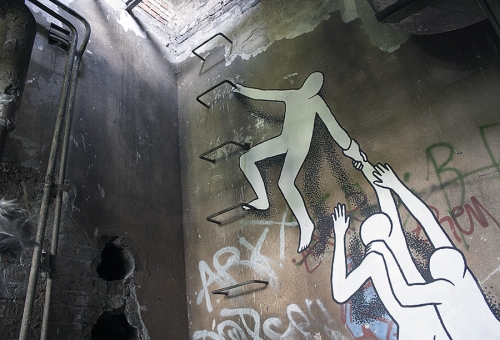
The Desire to Escape
It is Spengler who shows us that this desire to “escape,” in his words towards “the infinite,” was present at the very birth of the West, and is in fact its driving force. This too needs to be understood in terms of masculinity and femininity. The masculine impulse is not to escape the world but to go out and engage with it, to learn how to navigate through it, to understand it, and with this knowledge to create and to build with it. A man may seek an escape from the wind and the rain for his family, but the shelters he constructs are made from real materials, and if they are not built according to the natural laws that govern civil engineering they will fall down. This is why truth is the paramount masculine value, and this truth is never self-referential, it is truth about the external world, so that humanity can live within this world.
The feminine impulse is the opposite, it is an attractive force and its ultimate point of reference is the woman herself and her children. If the masculine seeks to expand outwards towards the infinitely large, to ever extend knowledge and understanding, then the feminine measures this in terms of what it means to her, how it affects her, whether she likes what emerges around her as a result of this, or not. Men build houses, but women decide whether they want to live in these structures, and turn them into homes. The feminine is in its essence aesthetic, its measure is beauty, and the beautiful is appreciated through emotion, how it makes her feel.
During the rise of the West, this masculine impulse is harnessed and the Modern world takes shape over time. The feminine character of the Western project, however, is expressed in the ultimate end state Western civilization sets as its objective. This is Spengler’s “infinity,” but in everyday terms it goes under the slogan of “freedom.” The dominant motive behind the entire development of the West has been the desire to be free, and this means freedom from any and all constraints. Science and technology emerge as the means by which to escape the constraints of nature, but alongside this there is also the desire to escape social constraints. During the first centuries of the West, this mostly involved the struggle to overcome the Catholic Church, which dominated the social and cultural landscape of medieval Europe, and this lead to the Protestant Reformation. Later it becomes the desire to be free of any religious imposition on life whatsoever, whether through moral codes or the law of the land. Western society becomes secular.
Freedom is a feminine value, not a masculine one. Femininity resents any external constraints on it, whether natural or social, because its reference point is the woman herself, in her singularity. There is no such thing as a feminine morality, because even two women form a set of entirely different compass points for any moral code. These might coincide, the two might agree and cooperate well together, but they also might not, there is no force behind the agreement, as soon as it feels like a constraint to either of them it will be abandoned. Women approach all relationships in this way, except with their children, there the rules change.
Masculinity does not strive for freedom, it seeks to serve. A man is measured by his contribution to something larger and outside of himself, his family, his tribe, his nation, his civilisation, its Gods, the truth. This service must be voluntary, and it must be valued. The Roman slave in revolt may kill his master but he will also willingly give up his life in the army of Spartacus, and ask only that in battle his general not throw this away cheaply.
For the same reason, equality is not a masculine value either. Men contribute to the best of their ability, because that is the source of their worth, but the end results are measured externally. The input is irrelevant, only the output. Masculinity naturally gravitates towards hierarchy, because some are more talented, experienced, or able than others, and what matters is the common venture, success or failure, victory or defeat. Men will accept the leadership, and even the domination of others, if this leads to a good outcome, because that is all that counts. Better to follow the victorious general, than lead an army to its destruction.
The feminine, on the other hand, does aspire to equality, because like freedom it is an abstract concept, it means the removal of any expectations placed upon her by anyone, which she might perceive as a constraint. Equality is the stepping stone towards freedom, which is the ability of a woman to act as her own point of reference in any aspect of her life. Today this goes under the term, “empowerment,” or “You go girl!” This is one form of the “tendency towards abstraction” we will try to elaborate on further.
Masculinity, however, acts as a counter-balance to this female “solipsism.” The masculine overrides this impulse and it is the woman who benefits, because it allows her to serve something greater – children, to become something larger than herself, to contribute, to leave her mark on the earth, to attain a slice of immortality. Men do this by imposing an order that serves the civilizational project they are committed to, in other words they impose social constraints on women. This is the “patriarchy,” it ensures that a society will continue because there will be future generations, that women will bear children. It is a civilizational project that makes women have babies, and this is its greatest gift to femininity, to those same women, it overcomes their own drive to “self-referentiality” and allows them to be something more, to participate in something larger.
The project of Western civilization, on the other hand, has been to escape this very civilizational constraint. By the 1960s it had achieved an important milestone along this path through the application of science and technology, with the invention of the contraceptive pill. As a result, birth rates have plummeted, well below the numbers required to reproduce the population. This is one reason why it is safe to predict the coming demise of the West, a social order can not survive if its women do not have children.

Transhumanism — The Final Showdown
The West, in its essence, is neither a human nor a natural society. The current debate – is gender real ? – is not directed at finding truth but is instead a program of action – “we will make it so that there is no such thing as gender.” Masculinity and femininity, their polarity, will be abolished. This process is already well advanced, especially in the urban centers, and can be objectively measured by tracing the plummeting levels of testosterone in Western men. It is also the meaning behind the pronoun controversy that catapulted Jordan Peterson into the spotlight during 2015, and why his stance is so important.
Transgenderism is only the prelude, the real showdown is still to come. This will go under the title, “transhumanism,” and if its proponents are successful it will mean the end. Humanity will cease to exist. The technology is not yet fully developed, but the work is being undertaken, and rapid progress is being made. Starting with heart implants, prosthetic limbs, and wearable tech, the ultimate goal will be to overcome the limitations of the human body and achieve immortality. This will be done through packages whose benefits are undeniable – the replacement of legs lost by soldiers to IEDs, the extension of life expectancy, early detection of disease onset, and for this reason will be hard to resist.
An idea of what this means for humankind can be seen in the stresses and strains already affecting peak human activity, the Olympic Games. On the one side, the dissolution of gender difference will destroy women’s sport, a foretaste of which can be seen in the controversy surrounding South African runner Caster Semenya. On the other, advances in prosthetics mean Paralympians will increasingly overtake “able-bodied” athletes in their achievements, this already being the case for the 1500m event. In the background lies the ever more murky divide between legitimate diet and nutrition supplementation, and performance enhancing drugs, an indeterminancy that is also being exploited for political ends, as in the blatantly unjust treatment of Maria Shaparova over her use of meldonium. The point here is that the ruling to outlaw this drug in 2015, after years of its legally sanctioned use, was entirely arbitrary. The same applies to the earlier ban on blood doping.
All these trends lead in the same direction, a loss of meaning to the entire enterprise of elite sport as a human activity. This is nihilism playing itself out; it is Nietzsche’s “devaluation of all values.” The Paralympics for example, whose entire purpose is a celebration of the human spirit in the face of adversity, loses any sense of this once artificial limbs become a source of advantage rather than disadvantage, and replacing body parts becomes a desirable option. We approach the point in the first Robocop film where the decision is taken, “lose the arm,” even though it is undamaged. This has already happened on a small scale, with Australian Football League player Daniel Chick choosing to amputate an injured finger because it was harming his performance on field.
At the time, the idea of removing a body part for the sake of a sport was shocking. But the reasoning is clear, after all, what is there in our society that is not a game of some kind of other ? What better use could he have for his finger other than play a game in which he had attained a high level of mastery and was being well rewarded for doing so. Here it is important to understand what games are, and how they are essentially feminine in nature. This is because they are self-referential, defined by rules of their own making, and pursued for their own purpose – for fun. The value of a game is measured by whether it is enjoyable to play, or in our time, to watch. This applies with equal force to games that make a concession to masculinity – Call of Duty – and are therefore fun for boys to play. Such games are not masculine at all, in spite of feminist protests to the contrary, precisely because they are games – nothing is at stake. They are the safe forms of play a protective mother is happy to let her boys engage in, but they are forms that will also never allow these boys to grow into men, because for men failure has to matter, it has to hurt, physically not emotionally, it has to leave scars, it has to shape future behavior, it has to teach, the hard way. This still happens at the elite level, but only so the rest of us can spectate from the comfort of our sofas.
This helps us understand why, once a society becomes feminine primary, as the West is, it also takes on a more and more childish character. If everything is a game, with well-defined rules to prevent anyone from being harmed, and whose sole purpose is to be fun, then it is entirely legitimate to cry “not fair” whenever someone or something interrupts the proceedings. This was Donald Trump’s greatest sin, he spoiled Hillary’s party, he didn’t play by the rules, he didn’t accept that the 2016 election was never supposed to be a contest, but a game with only one outcome. This is how girls like to play, it was a crowning ceremony not a fight, and then that nasty boy ruined it. The massive display of infantilism that followed her defeat, the historically unprecedented tantrum that ensued, reflects just how far this process has gone.
This is again why Spengler and Heidegger are so useful. By standing back and adopting a perspective that spans 500 or a 1,000 years, it is possible to see how all these various strands interweave and form part of the same picture. There is a logic to this madness.
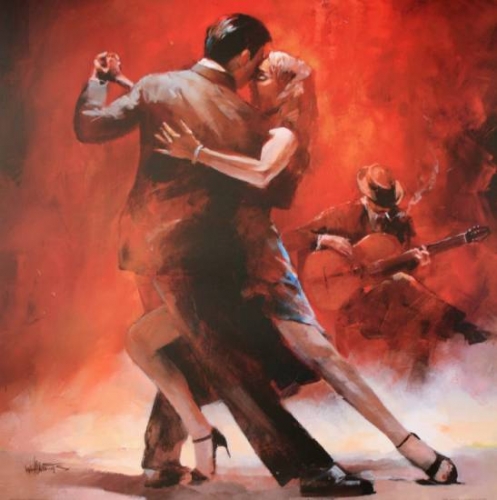
The Masculine-Feminine Polarity: The Key Battleground
It also helps us to understand what it is that needs to be defended, if all is not to be lost. First and foremost, it is this – masculine-feminine polarity.
Masculinity and femininity are opposite impulses, but not only do they complement one another, they are mutually dependent on each other if either is to fulfill its true nature. Masculine without feminine can no more be itself than feminine can be so without the masculine. This is why our current feminine primary world is so at risk of annihilation; it has lost the counter-balance it requires to avoid oblivion. Femininity alone is a black hole, it is an attractive force that has no limit, and as such will consume everything, including itself. Masculinity left to its own devices would be no different, exploding outwards into nothingness, just as the Mongol horde was able to roam the known world and conquer vast expanses of territory, but whose heartland was left a depopulated desert as a result, much as was Alexander’s Macedonia at the height of his empire.
Both Alexander and the Mongols were conquerors, but they were not builders. In their modes of warfare lay truth, they were victorious in battle, but they left nothing of beauty. They did not create a space for the feminine, no architecture to admire, no style to imitate, no structures to dwell in. As a result, they came and went, in a very short span of time, and they did so because they lacked internal cohesion, their territories were broken up from within, not without.
These were masculine primary civilizations, in which one polarity is taken to such an extreme that the absence of its opposite became its downfall. A feminine primary society works in a different way, in that what it does is undermine polarity itself. This is because the feminine impulse is singular, solipsistic, so that anything external that has shape or definition is experienced as a constraint, and as such must be neutralized or eliminated. Gender roles are by definition oppressive, not because they disadvantage women, but because they are defined, and as such are limiting, only non-gendered, abstract beings can be truly free.
This is the “tendency towards abstraction.” It is being applied to human bodily constraints, to social, ethical, and moral codes of conduct, and also to time and space. This goes under the name of “globalization.”
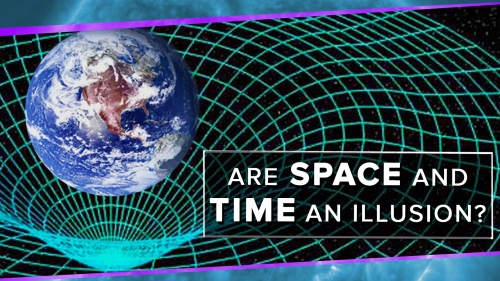
Globalization: The Loss of Any Meaning for Time and Place
Once again Heidegger assists us to understand what globalism is, in its essence. He does so in his classic work, “On the Question of Technology.” Here he takes the river Rhine as an example, whose role and function in modern Germany is primarily to serve as a source of hydroelectric power. This statement is usually interpreted as a kind of pro-environment stance, that the earth should not simply be seen as a set of resources for human beings to exploit. Heidegger certainly did believe that, but it is not the main point he wants to make. We see this when he introduces Holderlin’s 1808 poem, “Der Rhein,” into the discussion. For Heidegger, this poem represents the possibility of history, in which a people can emerge, a specific point in time that is their moment, and in a place that is their’s too. “Der Rhein” is not only a poetic work, it is the river, except that in the hands of Holderlin it becomes more than a moving body of water, but a historical location, the site of “Germanien,” the people whose language the poem is written in, the people for who this river is “Der Rhein.”
It is this kind of possibility the river as hydroelectricity denies. The current it produces is distributed through a grid. It is made available to anyone, anywhere, at any time. Who they are, and what they do with it, is irrelevant, in fact through the network the precise power source for any single wall socket might be any river, or any one of the various types of generating plant. This means that whatever people manage to create or achieve thanks to the availability of this electricity, it cannot bear the same relationship to the river Rhine we find in Holderlin’s poem. The connection has been severed, even if what comes into being is an online community of “Rhine lovers,” arrangements for a tourist cruise along its course, or a Heidegger fan page on Facebook. All of these can be enjoyable activities for those who participate, they can take on great significance in their personal life stories, but they do not have the capacity to be moments in historical time, where a “Germanien” is founded. There is no longer any possibility of history being made, of a “Der Rhein” coming into being.
This is globalization. It is the rupture of any meaningful link between place, time, and people. This is the postmodernist “end of the grand narrative,” which creates a lived experience of complete disorientation and disconnection, it is why our reality always feels so “artificial.” The problem is not so much that everywhere becomes the same, although this tendency is also present, but in the fact that any differences that do exist between locations are entirely random and meaningless. Even if a particular site has historical merit, or architectural splendor, this is now preserved purely for the benefit of tourists, who are visitors from nowhere in particular, who have come solely in order to be entertained, and whose value is entirely abstract – the money they spend. The great pyramids of Egypt may be the country’s main source of foreign currency earnings, but they bear no more relationship to the present nation’s culture, religion, language, or way of life, than they do to those who flock to see them. This is one reason why genuine study of these monuments has been effectively shut down for decades, in case any new understanding emerges that might have a negative impact on the tourism industry.
It is also why we can travel to Victoria in Australia and stumble across a large scale copy of the Sphinx, at what turns out to be a suburban gambling venue. Why a Sphinx? Who knows? Who cares? We can imagine future generations of archaeologists attempting in vain to decipher its meaning, because there is none, no greater relevance to the former manufacturing center and woolen industry export hub of Geelong than the original does to present day Cairo. Instead, the inspiration for this choice of design is more likely to have come from Las Vegas, where such total disregard for history and geography is taken to its logical extreme.
Las Vegas provides a good example of the “tendency towards abstraction” at work. The city’s location was chosen precisely because it was in the middle of nowhere, inside a state without any legal restrictions on gambling. Its founding was enabled by the availability of technology that overcame the natural constraints presented by the desert. Its central economic activity consists solely in the manipulation of symbolic values, games, whose appeal lies in their entertainment value. These games require as little skill acquisition as possible, and are governed purely by luck. Physical input is kept to an absolute minimum, no more demanding than pushing a button, the environment is carefully controlled for comfort, safety, and security, and no concession to time is made – venues are open 24/7 and no indication of whether it is day or night permitted. The entire enterprise is either entirely abstract or seeking to become so. Casinos, however, are not the final word in this process, their main competition now coming from the online gambling industry.
We see a similar tendency across the economy, which takes on an ever more “immaterial” character. This has two major forms. The first consists purely of symbols, above all banking and finance, which generate capital flows in various directions, but also the world of information technology that provides the platform for this kind of activity. These bear some relation to the “real” economy of tangible goods and services, but as the global financial crisis showed, this link is tenuous at best, and at times is broken entirely. The second is made up of “cultural” production – entertainment, fashion, style, brand identity, academic research, social media content, also dependent on IT to a large extent. As with finance capital, this constantly strives for autonomy from outside “reality,” it seeks to become self-referential, and in this it is becoming increasingly successful.

The Impossibility of Beauty without Truth and Truth without Beauty
This is why a defense of male-female polarity is so important. Without this, both truth, the masculine value, and beauty, the feminine value, collapse. We see this in the Geelong Sphinx, which has neither truth nor beauty – it is tacky and looks ridiculous. We also see it in trends such as the “fat acceptance movement,” whose express purpose is to separate truth from beauty by denying that there is any such thing as a naturally beautiful female human form. On this question Gad Sa’ad has provided an overwhelming mass of evidence, but his argument only stands if we hold truth to be a value, and in a feminine primary world this is simply not the case. This is because the entire objective is to escape the truth, it is to create a world free of such constraints, so that any female, no matter how morbidly obese, can be considered beautiful. It is not a matter for debate, it is an agenda to be realized, and once again it is making rapid progress, as can be seen in the overwhelming number of Western women who are seriously overweight.
Beauty requires truth, it needs to be real in order to be truly beautiful. At the same time, truth needs beauty, because reality can be ugly too. There is a truth to female genital mutilation – by making sexual intercourse a painful act it serves as a powerful reinforcer in a patriarchal order whose goal is to subordinate women’s sexuality to family and property interests. As such, female genital mutilation works. Male genital mutilation, which is much more widespread in the West than female, also achieves its original purpose, almost identical to FGM, by reducing men’s enjoyment of sex. These truths do not make either practice any the less cruel or barbaric.
The masculine-feminine polarity is the central battleground today. It is why feminist ideology is the main opponent, because this is where the insurgent forces of annihilation are currently deriving their inspiration. What is at stake here is not simply an assertion of masculinity, or men’s rights, although our society is increasingly hostile to men; it is also a defense of femininity, because there is no single force on the planet more misogynistic than feminism, especially its radical wing, which detests everything feminine with the utmost venom.
In order to combat this misogyny and androgyny, it is necessary to set it in its proper historical perspective, to understand its source, and to appreciate the critical roles played by the concepts of “freedom” and “equality.” This is not to promote “unfreedom” or “inequality,” especially in relations between the sexes, but to grasp that the masculine and the feminine are forces that run in opposite directions, have different values at their core, but who ultimate complement and are necessary for one another to flourish. It is to protect a world in which truth and beauty both have a place, and it is to preserve the possibility of a new civilizational project, or projects, arising to replace a West now well into its terminal phase of decline.
12:01 Publié dans Philosophie | Lien permanent | Commentaires (0) | Tags : philosophie, masculinité, féminité, beauté, temps & espace, temps, espace, transhumanisme |  |
|  del.icio.us |
del.icio.us |  |
|  Digg |
Digg | ![]() Facebook
Facebook
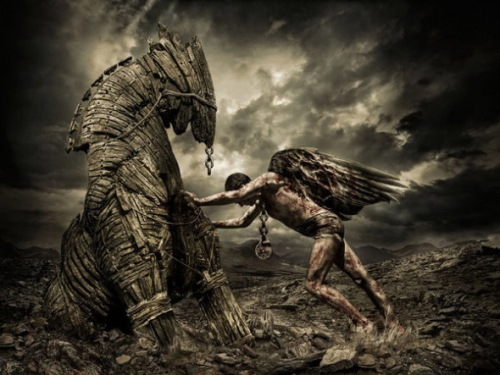
Synthèse de déclinologie inspirée par Thorstein Veblen, Joseph Tainter, Oswald Spengler et ... l'actualité.
Plus une société gagne en puissance, plus elle gagne en étendue, en nombre et doit accompagner cette évolution en se dotant d'institutions et d'infrastructures, d'idéologie et de moyens de contrôles, pour assurer la coexistence de ses parties. Dans un premier temps, l’accès à des ressources abondantes et peu chères (ressources issues de ses conquêtes et contrôlées par sa puissance militaire et technologique notamment), permet de ne pas faire peser le coût de cette complexification aux membres de la société. A ce stade, ce processus semble profitable à chacun. La société s’étend, procède à de nouvelles conquêtes, agrège ou soumet des populations de plus en plus différentes, et administre des territoires de plus en plus étendus. Le maintien des services publics (prise en charge des plus faibles, administration, éducation, puissance militaire, police intérieure, justice, etc.), dans une société étendue, hétérogène et complexe pèse de plus en plus lourd.
A mesure de l'accroissement de puissance et de l'augmentation de l'étendue des territoires et des populations à administrer, si la société ne trouve pas d’accès à de nouvelles ressources abondantes et à bas coûts (soit parce qu’elles sont épuisées, soit parce qu’elles sont inaccessibles), un mécanisme de dégradation des services et des avantages fournis par l’Etat et une augmentation de la pression fiscale se met en place. Logiquement, il faut faire peser sur le corps social et ses actifs les coûts de fonctionnement d'une société qui a changé de nature et est devenue progressivement et structurellement déficitaire.
Cette augmentation de la pression économique par la diminution progressive des mannes des conquêtes, des énergies facilement accessibles à bas coûts (or, esclavage, pétrole, dette, etc.) et par l'augmentation des coûts de fonctionnement de la complexité sociale, entraîne la hausse des revendications corporatistes et suscite de plus en plus de comportements individualistes et asociaux. En réaction, le cœur du pouvoir renforce ses moyens de coercition, d’éducation ou de contrôle (armées, éducation, propagande) pour maintenir le "vivre-tous-ensemble", mater les révoltes fiscales et territoriales etc. Ces efforts génèrent alors des coûts de fonctionnement supplémentaires qui pèsent à nouveau sur ses membres. Simultanément, les institutions encouragent l’hyper-sociabilité pour renforcer leur cohésion. Elles s'attaquent à leurs "alphas" pour assurer leur pacification interne de plus en plus menacée. Ce processus de domestication, assuré par des institutions de plus en plus maternantes et, de fait, de plus en plus liberticides, devient indispensable au fur et à mesure de la perte de cohésion ethno-culturelle.
L’État pratique alors une politique de population, visant à brasser, défaire ses parties encore différenciées pour prévenir les menaces sécessionnistes et garantir la cohésion et l’homogénéité de l'ensemble politique. C'est souvent à ce stade que les institutions, prélèvent dans des populations extérieures les ressources de travail ou les troupes de combat qu'elles ne peuvent plus constituer à l'intérieur en toute confiance, du fait de la progression de la communautarisation. Comme l’écrivait Michel Drac, "Les déplacements de population sont, depuis des millénaires, une stratégie des cœurs impériaux pour fragiliser leur périphérie. Il accompagne cette politique d'un éventail de justifications idéologico-religieuses pour promouvoir cet objectif et les intérêts de ses élites par une redéfinition des critères d'attribution de la citoyenneté ou de l'exercice des fonctions institutionnelles.
A un certain stade, des composantes de plus en plus nombreuses de la société n’ont plus intérêt à se maintenir dans l’organisation (pertes de liberté, pression fiscale, etc.) et aspirent à recouvrer leur autonomie dans des ensembles qu'elles espèrent plus homogènes, plus efficaces et plus conformes à leurs aspirations culturelles ou religieuses. L’État n’assure plus correctement ses missions régaliennes et perd progressivement le contrôle de la situation tout en tentant de maintenir à flot un système devenu structurellement déficitaire et en jouant sur la monnaie et la dette (dévaluation, dilution métallique, etc.). Un phénomène de dislocation lente se met alors en place (pertes de compétences, dégradation des infrastructures, perte d’autorité des institutions, etc.). Ayant fait la chasse aux « alphas » (pour renforcer l’obéissance sociale et le vivre-tous-ensemble) et aux normes fondatrices qui les ont fait naître, les sociétés complexes perdent progressivement leurs défenses immunitaires (préjugés vitaux communs) et s'effritent par l’incapacité à maintenir leur cohésion interne et leur capacité à faire face aux rapports de forces internes et externes.
L’État et les institutions chargées de la cohésion sociale et politique sont impossibles à réformer, faute d’une unité de vue et d’intérêts communs dans un espace politique perçu comme artificiel et en sursis, peuplé de groupes humains aux intérêts disparates. La société finit alors par se disloquer lentement en blocs qui cherchent à refonder leur cohésion plus ou moins affectée par des siècles de biopolitique. Bientôt, de nouveaux stress (guerres, famines, épidémies, invasions, révolutions technologiques, etc.) produiront de nouvelles réponses et de nouvelles alliances. L’apparition d’un nouvel ensemble reprenant les attributs de la puissance et de l’ordre engagera alors de nouvelles synergies historiques.
La France, épuisée, s'est fondue à la fin de la dernière guerre mondiale, dans un ordre politique suscité par une nouvelle puissance impériale : les Etats-Unis. Elle s’est occidentalisée, abandonnant son Empire pour devenir elle-même une banlieue militaire et culturelle du système occidental.
Certains ont voulu voir dans la construction européenne une façon de construire la paix et d’assurer la puissance des nations européennes, exsangues du fait de leurs rivalités. En vain. Quelles que soient les aspirations contradictoires des artisans de la construction de l’Union Européenne, celle-ci elle a été sabotée puis annexée par l’État profond occidental et titube sous les coups de l’affaiblissement de son empire.
"Nous autres, civilisations, nous savons maintenant que nous sommes mortelles" grondait Paul Valery au lendemain d'une guerre qui marqua la fin d'un monde. Pourtant, l'histoire nous l'a montré, les peuples survivent souvent aux civilisations, pour peu que l'on ne les définisse pas comme des sociétaires mais comme des substances historiques et sensibles. Entre déconstruction, communautarisation, dé-compétence et apparition de nouvelles communautés politiques activées par les éternels stress historiques (territoire, ressources, reproduction), "rien ne se perd, rien ne se crée, tout se transforme ». Les peuples ne suivent pas toujours les civilisations dans la tombe.
10:25 Publié dans Philosophie, Réflexions personnelles | Lien permanent | Commentaires (0) | Tags : déclin, philosophie, décadence, mort des civilisations, laurent ozon, réflexions personnelles |  |
|  del.icio.us |
del.icio.us |  |
|  Digg |
Digg | ![]() Facebook
Facebook

On Friday the 13th of October, 2017, President Trump gave a speech on the Joint Comprehensive Plan of Action (JCPOA) that Persians will forever remember as “the Arabian Gulf” speech. Seven months earlier, Secretary of State Rex Tillerson announced that the United States was initiating a “comprehensive review” of its Iran policy, including the JCPOA colloquially known as “the Iran nuclear deal.” About a month after Tillerson’s April 19th statement, the Secretary of State accompanied President Trump on a state visit to Saudi Arabia where the President addressed tens of Arab nations in a speech that identified Iran as the leading state sponsor of terrorism. This, despite the fact that Iran has never carried out an act of terrorism on American soil whereas, during his campaign, Donald Trump himself rightly identified Saudi Arabia as responsible for helping to plan and organize the 9/11 attacks. A comparison of the remarks of candidate Trump regarding Saudi Arabia to the policies of President Trump on Saudi Arabia is one of the clearest examples of Donald Trump’s hypocrisy and charlatanry. Another is his not having included the Saudis in his “Muslim ban” that does prevent Iranians from immigrating to the United States. The candidate who lambasted Hillary Clinton for taking money from Saudi Arabia went on to literally do a war dance with the Saudis, and to form a coalition with them against Iran. Several weeks after this trip to Saudi Arabia, Secretary of State Tillerson referred to the Persian Gulf as “the Arabian Gulf”.
During his Friday the 13th speech decertifying the JCPOA and laying out a strategy for regime change in Iran, President Trump echoed his Secretary of State when nearly six minutes into the twenty minute speech, he said that Iran “harasses American ships and threatens freedom of navigation in the Arabian Gulf and Red Sea.” Trump’s speech presented the outcome of the “comprehensive review” of Iran policy announced by Tillerson back in April. In summary, the new Iran policy includes renegotiating the nuclear deal to remove the time limits on the heavy restrictions of Iran’s nuclear energy program, to target Iran’s ballistic missile development, especially its efforts to acquire ICBMs, as well as measures not directly related to the nuclear program but targeting the regime, such as the imposition of crippling sanctions on the Islamic Revolutionary Guard Corps (IRGC), which “has hijacked large portions of Iran’s economy”, and finally, to support “regional allies”, i.e. Sunni Arab states, in confronting the Iranian military and paramilitary presence in Shiite-majority countries like Iraq, Syria, Lebanon, and Yemen.
For someone who has long been involved in the Iranian opposition to the Islamic Republic, and who was outraged by Obama Administration policies toward that regime, there were certainly elements of Trump’s speech that, on the face of it, seemed positive. These included his description of the regime as a tyranny that does not reflect the character and will of “a proud people”, a regime that has “raided the wealth of one of the world’s oldest and most vibrant nations.” Trump rightly condemned the Islamic Republic for brutally crushing the peaceful mass demonstrations of the summer and fall of 2009. He rightly chastised Obama for a nuclear deal that “threw Iran’s dictatorship a political and economic lifeline, providing urgently needed relief from the intense domestic pressure…” Indeed, Obama was penning secret letters to the Supreme Leader at the same time that the latter was ordering the murder and torture of young unarmed protestors whose chants included “Obama, Obama, either with us (the Iranian people) or with them (the Islamic regime)!” Trump’s evocative description of Obama’s perverse physical transfer of “huge piles” of cash to the Mullahs by airplane was particularly compelling.
There is, however, good reason to question the sincerity of the President when he claims that in his proposed policy of confronting the Islamic Republic, the United States government stands “in total solidarity with the Iranian regime’s longest suffering victims… The Iranian people [who] long to… reclaim their country’s proud history, its culture, its civilization…” The bare minimum of showing respect for the people of Iran’s millennial Persian civilizational heritage is to refer to the Persian Gulf by its proper name, which dates from the time of classical Greek geographers and has since been officially recognized by all major international organizations. Wanting to get under the skin of the Mullahs and threaten them is no excuse, since from the moment that they seized power in 1979, they have been Arabizers that tried to suppress Iran’s Persian identity. At one point they even wanted to bulldoze Persepolis and change Iran’s language to Arabic. President Trump’s use of the bogus term “Arabian Gulf” was bound to terribly offend the Persian people themselves. It reveals that the rest of his rhetoric about Persians being oppressed and victimized by the Islamic Republic was primarily for domestic consumption, preparing Americans for the “liberation” of yet another country.
Trump’s deployment of the phrase “Arabian Gulf” was no more accidental than Secretary of State Tillerson’s seven months earlier. It signals the true end game of the new Iran policy: the transformation of the Persian Gulf into the Arabian Gulf through targeting Iran’s nationwide Persian cultural identity by engineering ethnic separatism, reducing Iran to an impoverished rump state of ‘Persia’ surrounded by resource-rich “microstates” exploitatively controlled by Saudi Arabia and the rootless global capitalists whose cancerous Deep State has destroyed America’s moral compass. That Trump and Tillerson intend to pursue a war with this outcome was made clear in statements that Walid Phares volunteered to Fox News on October 13th during a preview and preliminary analysis of the President’s “Arabian Gulf” speech.
When asked about the nature of the new Iran policy that the President was about to announce, Phares explained, “The Pasdaran, the Iranian Revolutionary Guard, will be under the focus of [i.e. in the crosshairs of] our allies, and speaking of our allies, remember the President went to Riyadh. He met with 50 Arab and Muslim leaders. This is way different from what was the situation in the ‘90s. He has a much larger coalition. Even if the Europeans are going to be criticizing his position, he has a much larger bloc in the region to work with.” The Fox News anchor fails to ask Phares why he is jumping all the way back to the 1990s rather than drawing a contrast with Obama’s Iran policy. What does a “larger coalition” of Arab nations have to do with “the situation in the ‘90s”?

Phares is referring to the 1991 Persian Gulf War and the coalition of Arab nations that George H. W. Bush formed to demolish Iraq. Saudi Arabia was the backbone of this coalition, as it will be the linchpin of the “much larger bloc” of Sunni Arab states that Trump will lead in a war that shatters and devastates Iran. On Phares’ revealing analogy, the Revolutionary Guard’s forward positions in the Shiite crescent are akin to the Iraqi occupation of Kuwait. The difference is that the entirely predictable reaction of the Islamic Republic of Iran to being bombarded by Saudi-based missiles and air force jets is going to be a massive retaliation against Saudi Arabia and other Sunni-Arab sheikhdoms in the Persian Gulf, which will require American and allied Arab forces to put boots on the ground in Iran (at least in support for ethnic separatists and other terrorists) whereas Bush Senior’s coalition never marched to Baghdad. It is also predictable that, if attacked, the Islamic Republic will use Hezbollah to unleash asymmetrical warfare inside the United States on a scale that makes 9/11 look like a firecracker. Certainly, at that point, Congress will be intimidated into authorizing a full-scale American occupation of Iran.
I met Walid Phares and discussed Iran policy with him. Later on, I wrote him a very substantive letter warning the Trump Administration not to go down the Pro-Saudi path that it has since chosen to pursue with respect to regime change in Iran. This was the secret plan that Hillary Clinton had for dividing and conquering Iran, and the main reason that I and so many others within the Persian Renaissance movement supported Donald Trump was to make sure that it never actually became US foreign policy. The one thing that could turn the largely pro-American Persian people against the United States is American support for a Saudi-led Sunni Arab war against Iran. I was introduced to Walid Phares by Michael Bagley, the former intelligence director of the infamous Blackwater militia and founder of the Jellyfish intelligence agency.
During the summer of 2016, a certain individual contacted me. I’ll call him X. He praised Prometheus and Atlas to high heaven and said some things that I am not going to disclose because you will find them as hard to believe as I did before I was read into certain esoteric projects. Initially, I dismissed X as a nutcase and would rarely respond to him. Then he offered to concretely assist my efforts on the Persian front by putting me in touch with Michael Bagley, the President of Jellyfish, which he described as a private security and intelligence agency working with the Trump Team to prepare a new United States policy regarding Iran and the Islamic world. I was told that General Michael Flynn worked for Jellyfish, clandestinely of course, and I appreciated Flynn’s position on the Islamic threat. I figured that engaging with Michael Bagley would be an easy way to find out whether X was a crank or whether the other things he was telling me might be true.
Whereas some of what I later saw and heard while working with X and his other associates (there was a Y and Z) might have been smoke and mirrors, deliberately tailored to my personality profile and edgy techno-scientific interests, Michael at least turned out to be totally legit. His clients mostly consist of the chief executives of Fortune 500 companies, but I surmised that he had a special rapport with X and that the group X represents had some role in forming Jellyfish and mainly used it for their purposes – with the corporate consulting acting as a cash cow. I met with Michael months before the 2016 Presidential Election, again after Trump’s victory (which I was not surprised to see), as well as in the early days of the new administration. He would see President Trump on a regular basis, and he introduced me to others with even more access, including Walid Phares, who Michael described as the shadow Secretary of State. He said that Rex Tillerson was just supposed to be a front man, and that when I spoke to Walid I should assume that I am essentially speaking directly to President Trump. What really interested me was a proposal by Michael that I act as a liaison who provides media content produced by the Persian Renaissance Foundation to Jellyfish for broadcast into the Islamic Republic of Iran from a facility in Croatia.

Why Croatia? As X and I discussed, Croatia is a part of Iranian civilization. During Tito’s rule, which imposed a Slavic identity on all of Yugoslavia, scholars were actually prosecuted, imprisoned, and even tortured for researching and writing about the Iranian origin of the Croatian people. Specifically, they are part of the Scythian branch of Iranians – cousins of the Persians who rode deep into Europe. Widely known in Europe as “Alans”, they brought the Persian culture of chivalry and the Arthurian mythos to the West. On top of their Scythian ethnic roots, they were also a colonial territory of the Persian Empire under Darius – whose naval power, at its zenith, reached the Adriatic Sea. At least, that is how X pitched it to me. For all I know, Michael has never heard of the Scythians and the Balkans facility had absolutely nothing to do with Croatia’s heritage.
You see Michael’s interest in me was not limited to what we called “the Iran project.” At a meeting we had in Washington just before the Trump Administration came to power, Michael proposed to “take Richard [Spencer] out” and install me as the leader of the Alt-Right. By then, I had met Richard during NPI 2016 and, as someone whose fatal flaw is always wanting to see the best in people, I counter-proposed that Spencer was a reasonable guy who would accept direction from above if it meant that, through a figurehead other than himself, he could have access to the President. Steve Bannon was known to be a reader of Arktos books and Michael’s plan was to send me into the White House to cultivate a relationship with Bannon, and through him, to influence President Trump. My main reason for wanting to have such influence was to help determine Iran policy. Michael got at least one of my letters on this subject into the hands of the President. In it, on behalf of the Persian Renaissance, I explicitly warned Trump not to pursue a pro-Saudi or generally pro-Arab strategy for regime change in Iran. In retrospect, I suppose that through that letter the President and his policymakers also acquired some fairly substantive intelligence on our outlook, intentions, and capabilities.
Together with X and Michael, a plan was hammered out to secure my position as the leader of the Alt-Right by creating a corporate structure that unified the major institutions of the movement, in both North America and Europe, bringing Richard’s National Policy Institute think tank together with Daniel Friberg’s European Arktos publishing house, and the Red Ice Radio and Television network founded by Henrik Palmgren. A major investment would allow me to become a majority shareholder both in this new Alt-Right Corporation, and in its would-be subsidiary, Arktos Media, replacing Daniel Friberg as its CEO. When I expressed concern to Michael about what this plan would mean for my academic career, he replied, “What do you need an academic job for? You’ve been there and done that. Now it’s time for us to put some money in your pocket.” When a man who routinely does work on contract for Fortune 500 executives says something like that, it really does amount to an assurance that one will not be thrown under the bus (in the way that I now have been).
The funds for this investment into the Alt-Right Corporation, through yours truly, were going to be secured through a multi-billion dollar black budget for a classified project to be implemented by the Trump Administration. That project involved the construction of a vast constellation of “micro cities” in North Africa and Western Anatolia to contain the flow of migrants from the Islamic world into Europe, and to act as resettlement areas for illegal immigrants expelled from European countries. I was fully aware of the catastrophic damage that these migrants were doing to the social fabric of European countries: increasingly frequent acts of terror, molestation of women and children, and the spread of no-go zones where sharia law is enforced in European cities. So I can honestly say that I would have had no problem sleeping at night knowing that I was profiting from a project that would relocate these mostly military-aged Muslim men to places where they cannot volunteer to act as a fifth column for the Islamic State. Especially since I had been forced to helplessly witness ISIS destruction of the irreplaceable Iranian heritage in regions of northern Iraq and Syria that were once cultural centers of the Persian Empire. Not to mention the rape, enslavement, and genocide of Yazidi Kurds, crypto-Mithraists who are the purest remnant of ancient Iranian ethnicity.
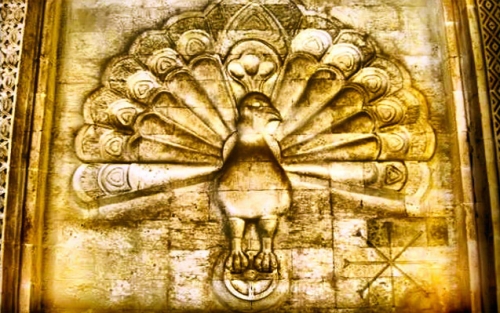
As I have explained in previous pieces, the funding for a capital investment that would have established me as the majority shareholder of the Alt-Right Corporation never materialized. Now you can see why. Neo-Cons and Neo-Liberals at high levels conspired to ensure that President Trump never authorized the construction of what they considered glorified concentration camps, even though I was told by both Michael and X that the black budget funding for the “micro cities” had already been allocated.
Let me tell you what X did when I started writing him letters warning that I was losing control of my partners and influence over the direction of the corporation. I wrote that I would be forced to take drastic measures if he and Michael allowed me to be humiliated in front of them on account of hollow promises and repeated, false assurances that the obstacles had been cleared and the capital would finally reach us. This was Spring of 2017, before the current troubles in Venezuela. X sent me a nearly $1 billion itemized oil contract, to pass on to a top-notch petroleum engineer at one of the world’s largest oil companies and ask if they were willing to take it on. X confessed that his “Promethean pirates” were planning to overthrow the socialist government of Venezuela and that they needed to get into the oil industry there before doing so. The engineer came back and said his company was not capable of the project.
I am sorry to have to disclose these facts. However, in the wake of The New York Times libelous publication of the video footage of me that Patrik Hermansson (aka. ‘Erik Hellberg’) surreptitiously obtained and deceptively edited, I contacted both X and Michael and gave them a final opportunity to do right by me. After all, I would never have been in that pub with ‘Hellberg’ as an Alt-Right leader if Michael had not promised to fund our proposed corporatization of the movement. What is worse is that Mr. Hermansson was sent my way by people closely associated with X, who was a founder of The London Forum. X was the person who contacted Jez Turner and Stead Steadman to set up that talk for me, and also secured an invitation for my dear friend Shahin Nezhad, leader of the Persian Renaissance Foundation, to give a speech as well. This is significant because ‘Erik Hellberg’ first met and set his sights on me during that event.
There was something very peculiar about X’s involvement with bringing me to The London Forum. He did not attend the talk himself, complaining about the Antifa demonstrators who surrounded the venue (there were even police helicopters circling the high-rise building during my speech). However, at one point X was actually in the lobby of the conference hotel and he sent up a certain Potkin Azarmehr. This troubled Shahin and I, as well as our close associate Aria Salehi (a member of the Board of Trustees of the Persian Renaissance), because we had encountered Potkin a day or two earlier at a Persian Renaissance event in London. He was not there as a sympathetic audience member but as a person carrying out surveillance, sitting alone in the back of the room with a disapproving look on his face. Potkin did the same thing at The London Forum event where Shahin and I spoke. He came in, checked things out, reviewed the book stand, and then left grumbling about how we were a bunch of “Mosleyite Fascists.”
What was a leftist like Potkin doing at either event? Why is he an associate of X if the latter is a founder of The London Forum and someone claiming to help facilitate the aims of the Persian Renaissance – including by getting me into business with the Trump Administration through Michael and the Alt-Right? Potkin is rumored to be an asset of Scotland Yard, and to have connections to the Mojaheddin-e-Khalq (MKO, aka. MEK, or National Council of Resistance of Iran), Marxist-Islamists who are even worse than the Islamic Republic and who lost any shred of legitimacy they may have once had when they defected to Iraq with some Iranian tank divisions and sided with Saddam during the Iran-Iraq War. Late in the course of my work with X, another associate of his who had also been falsely promised funding, let me know that X had at one point worked for MI6.
What were Michael’s true intentions when he suggested that I enter the leadership of the Alt-Right? Well, I can report that not only did our “Iran project” go nowhere, it has since come to my attention that even though X kept encouraging the Pan-Iranist discourse of the Persian Renaissance in the private meetings that I had with him, Michael was being told by people in “the deep state” that our Pan-Iranism was at odds with the kind of regime change that they wanted to see in Iran. Apparently, so was our tough stance against Islam and our emphasis on Pre-Islamic Persian values. In fact, Donald Trump eventually hired an American convert to Islam to manage his new Iran policy! After this, those of us in the Iranian opposition participating in private White House discussions regarding regime change had to fill out a form stating that we are Muslim, even though millions of young people in Iran today – and certainly all of the most anti-regime people in the country – have left Islam, usually for some form of Neo-Zoroastrianism. This is reflected in the part of Trump’s Friday the 13th speech, where he says “We hope that our actions today will help bring about a future… where young children, American and Iranian, Muslim, Christian, and Jewish, can grow up in a world free from violence, hatred, and terror…” On account of the Persian Renaissance movement, the Abrahamic religions, including and especially Islam, are on their way out in Iran. Why would Trump not acknowledge the millions of Neo-Zoroastrians who are the most anti-regime and most pro-Western elements in contemporary Iranian society? Whose interests does this serve?
Why was I continually encouraged to present policies to the shadow Secretary of State, in person, and to the President of the United States, in writing, which Michael had already told X were unacceptable? How could this have been allowed to go on for so long that, on August 11th, the Persian Renaissance formed the Iranian United Front (Jebheyé Irângarâyân) unifying the most established patriotic political parties opposed to the Islamic Republic, including the Pan-Iranist Party, under the false assumption that the Trump Administration would give us a serious hearing? Perhaps because certain agencies wanted us to put all of our eggs in one basket, so that they could break them all at once.
As the youngest and most intellectual member of the new coalition, the one who named it Jebheyé Irângarâyân, and the person whose speech introduced it to the English-speaking world, tarring me in the pages of The New York Times and countless other media outlets that have echoed its libelous coverage of the doctored Antifa video, could potentially be used to destroy the whole coalition. On September 28th, the mainstream Persian media outlet Radio Zamaneh ran a hit piece on me even more libelous than that of The New York Times, titled “In America, an intellectual leader of Iranian Fascism has been dismissed from teaching.” The Persian Renaissance Foundation is referred to as an imperialistic “fascist” organization, and its fate is explicitly and irrevocably tied to mine. Hopefully, you are starting to get the picture.
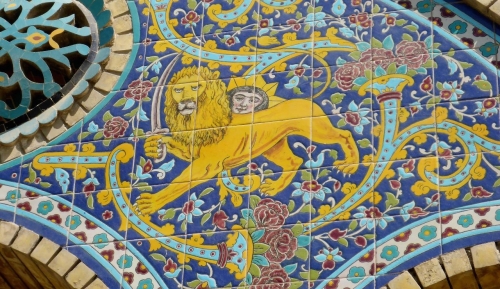
What was done to me on September 19th was the outcome of a long-term plan, and it is not just about the destruction of my academic career. Administrators at NJIT are simply useful idiots. This is about the reorientation of the trajectory of geopolitics in the Middle East, the Caucasus, and Central Asia. It is about aborting a Renaissance of the Persian Empire, which could bring progress and prosperity back to the dark heart of what is now ‘the Islamic world.’ I have been the most passionately outspoken and philosophically sophisticated advocate of that Renaissance who also has deep ties to the United States of America, the country in which I was born and raised.
In fact, like Donald Trump, I was born in Queens and spent most of my life in Manhattan. Dad actually used to frequent the same neighborhood butcher as Donald’s father. My paternal ancestors include the Qajar monarchs, one of the longest reigning dynasties in Iran’s 3,000 year history, and my grandfather, Reza Qajar Jorjani, was a renowned patriotic public intellectual who helped to found the University of Tabriz – one of Reza Shah Pahlavi’s key instruments to guard against the secession of Azerbaijan and to restore its Persian cultural character after centuries of backward Turkicisation. When the Shah sent him from Tehran to Tabriz, after years in European cities such as Montpellier and Paris (with his best friend, Sadegh Hedayat), my grandfather’s orders were to wage a culture war to salvage and reinforce the Persian heritage of Tabriz. His wife, my recently deceased grandmother, Leila Dowlatshahi, hails from the family who were the regional governors of the Azerbaijan province of Persia in the Qajar period, including the northern part of Azerbaijan in the Caucasus, seized by the Russian Tsars in the mid-1800s and occupied by the Soviet Union until 1991. Her aunt, Esmat Dowlatshahi, became Reza Shah the Great’s wife, integrating our family into the Pahlavi Dynasty. God bless his soul, Mohammad Reza Shah Pahlavi, the “King of Kings and Light of the Aryans” (Shahanshah Aryamehr) whose “White Revolution” (1963–1978) endeavored to revive Persian Imperial glory, was my grandma’s cousin.
So the coming Persian War is particularly personal for me. I call it the Persian War because it is specifically a war being orchestrated against the Persian civilizational identity of Iran. As I explain in the speech where I introduced our nationalist opposition coalition to the English-speaking world, the conflation of “Iran” and “Persia” has in recent years been used to the opposite effect that this equivalence had in the West for most of history. Iran is shorthand for Eranshahr (Ancient Persian, Aryana Khashatra) or “Aryan Imperium”, which is how all Iranians, including the dominant Persians, always referred to the “Persian Empire.” Prior to 1935, Iran’s internationally recognized official name was “Persia.” Moreover, even after 1935, when Westerners referred to Iran as “Persia” they meant to suggest what has more recently been termed “Greater Iran” or the Persianate World, the Imperial sphere of influence from the borders of China to the Caucasus, from Northern India to Syria, wherein Persian (Parsi or Dari) has been a lingua franca for centuries and where people of many diverse ethnicities and religions (including huge Buddhist regions in Pre-Islamic times) were brought into a humanistic cultural, intellectual, and spiritual dialogue with one another through the Persian crown.
Today, at the behest of Arab oil sheikhs and transnational corporatists who want to loot Iran’s resources by dividing and conquering the country, “Persia” means the Persian ethnostate that would be left after fomenting Azeri, Kurdish, Ahwazi, and Balochi separatist revolts against the government of Iran. This rump state of “Persia” would have lost about 30% of Iran’s remaining territory (already a shadow of what it was only two centuries ago, let alone during the five great Persian Empires), and about 70% of vital resources such as oil and gas. Moreover, the Arab Republic of Al-Ahwaz (i.e. Iran’s Khuzestan province), Greater Azerbaijan, Greater Kurdistan, and Free Baluchistan, would have no deeply-rooted and rich civilizational heritage to serve as the backbone of nationalist resistance against exploitation of the oil and gas resources that belonged to Iran. Meanwhile, the rising tide – rather, the incipient tsunami – of patriotic sentiment based on the Persian Imperial heritage would be contained in a small and impoverished Persian ethnostate stretching from the Caspian Sea to the “Arabian Gulf”, rather than leading to the establishment of the sixth Persian Empire on the ruins of the Caliphate of Al-Qaeda (in Central Asia) and the Islamic State (in the Middle East).
I call it the coming Persian War because we, the Persians, will not go quietly into that good night. The Trump plan to divide and conquer Iran, working with Saudi Arabia and their paid agents amongst Iran’s ethnic minorities in resource-rich outer provinces, may succeed in the short term but it will eventually end in a catastrophic failure. Weimer Germany is the best analogy. Within a decade, a stoker will reignite the fire from out of those ashes. Except that we are not Germans. Through the Scythians (i.e. the Saxons) and the Alans, we lent the Germans and Goths our Faustian (i.e. Zoroastrian) genius and chivalric spirit but those northern Barbarians never understood the essence of our cosmopolitan humanism.
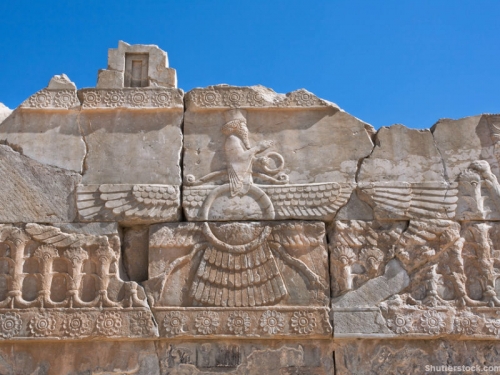
Al-Ahwaz and a Kurdish nation have nothing but Sunni fundamentalism and barbaric tribalism to offer the world, whereas our Persian civilizational heritage has not only held Iran together for centuries it has, repeatedly, offered all of humanity the best chance at forming a world order based on innovation, compassion, and social justice. Martin Heidegger rightly observed that “Language is the house of Being”, and there have been very few languages that became, for centuries, the lingua franca of many peoples other than those for whom it was a native language. These include Greek, Latin, Sanskrit, French, English, Russian – and Persian. We will rebuild our house of Being and defeat, at any cost, those who want to see it become a ruin inside of a ghetto.
Profiteers who are used to running ghettos want to ghettoize all of the great nations of Earth. They have been doing it to America for decades. But not to worry, after we have our own house in order we will also work to make America great again. The people of Emerson, Thoreau, and Whitman, the nation of Melville, William James, and Jackson Pollock deserves better than Donald Trump or any other chump who is ‘elected’ to be a mere tool of an unaccountable and totally corrupt Deep State apparatus, which has metastasized like a cancer throughout all of the organs of the United States government.
We, the Persians, do not hold the decent and hard-working American people responsible for: (1) CIA and CFR orchestration of the Islamist seizure of power in 1979; (2) that piece of CIA theater known as “the hostage crisis” that muddied Iran’s good name; (3) the solidification of the Islamic Republic through full US operational support for Saddam Hussein’s war of aggression from 1980–1988 at the cost of half a million Iranian lives; (4) destruction of irreplaceable Persian archeological treasures by Al-Qaeda, the Taliban, and ISIS, terrorist groups that the United States set up in our former provinces; (5) Obama’s facilitation of the mass murder and torture of the valiant youths who rose up in 2009; (6) Trump’s proposed war to create an “Arabian Gulf.”
We know that you do not really have a government “of the people, by the people, and for the people.” You are oppressed by a rogue dictatorship. Rest assured that after we liberate ourselves and secure our future, we will bring the ever-living fire of true freedom to your bountiful continent as we once brought it to Greece. Far be it from us to leave your resistance movement in the hands of the Alt-Right or comparable culturally impoverished and regressive reactionaries. We are coming to save you, America. So speaks the living spirit of Xerxes, King of Kings, Light of the Aryans...
06:51 Publié dans Actualité, Géopolitique | Lien permanent | Commentaires (0) | Tags : iran, états-unis, donald trump, jason reza jorjani, actualité, géopolitique, politique internationale |  |
|  del.icio.us |
del.icio.us |  |
|  Digg |
Digg | ![]() Facebook
Facebook
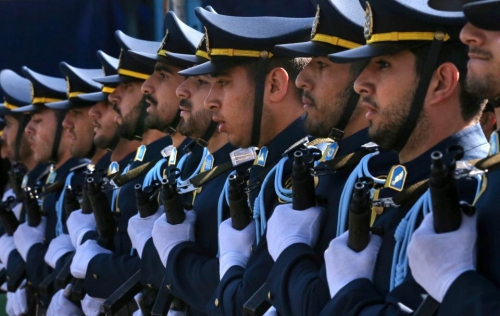
There is a plan to destroy Iran, a plan drawn up together with Saudi Arabia by those within the American military-industrial complex who consider the Saudis an ally of the United States. Hillary Clinton, who has extensive ties to Saudi financiers, certainly intended to implement this plan. Judging from the repeated references to Saudi Arabia in statements on Iran made by both the Secretary of Defense, General “Mad Dog” Mattis, and Secretary of State Rex Tillerson, it is beginning to look like this plan might move forward even though there appeared to be substantively different plans for Iran back when General Flynn and Steve Bannon were the leading members of Team Trump. Whether or not this Saudi plan succeeds will have a deep impact on the future of Westerners and others in the wider Indo-European world. The question of Iran’s immediate future probably has more profound implications for the long-term survival of the Aryan heritage than any other contemporary crisis.
Surrounded by a dozen artificial states that do not predate the European colonial machinations of the 18th and 19th centuries, Irân is the only real nation between China and India in the East and the sphere of declining European civilization to the West and North. Shorthand for Irânshahr or “Aryan Imperium”, the country’s 55% Persian majority never referred to Iran as “the Persian Empire.” The classical Greeks coined that term and it stuck in the West. It is dangerously misleading because, while the Persians have been the most culturally dominant ethno-linguistic group within Iranian Civilization (playing a role comparable to the Han within Chinese Civilization), the Kurds, Ossetians, Baluch, and others are both ethnically and linguistically Iranian even if they do not speak the Persian language (referred to as Pârsi or, wrongly, as Fârsi in Western Iran and as Dari or Tâjiki in Iranian Central Asia).
The conflation of “Iran” and “Persia” has, for a number of years now, been enlisted as part of a plot to further erode the territorial integrity of Iran by reducing it to a Persian rump state. While the rootless globalist conspirators plotting to frame “Iran” as a conceptual construct of Persian Imperialism are certainly driven by economic and strategic considerations, their ultimate goal is the erasure of the very idea of Iran or Iranshahr. They see the revival of this idea as perhaps the single greatest threat to their broader agenda, and since the total failure of the Islamic Reform Movement of 1997–2009, just such a revival has been at the heart of an ultra-nationalist cultural revolution known as the Iranian Renaissance.
This movement strives for a rebirth of the Pre-Islamic worldview of Iranian Civilization, seeing the so-called “golden age” of Islam as an afterglow or abortion of what might have been had Iran continued its developmental trajectory as an Aryan nation. After all, the vast majority of scientists and engineers who were forced to write in Arabic under the Caliphate were ethnic Iranians whose mother tongue was Persian. In every respect, from Science and Technology, to Literature, Music, Art, and Architecture, so-called ‘Islamic Civilization’ acted as a parasite misappropriating a truly glorious Iranian Civilization that was already 2,000 years old before the Arab–Muslim invasion imposed Islam, and the genocidal Mongols cemented it (by crushing the Persian insurgencies in Azerbaijan, on the Caspian coast, and in Khorasan).

The Iranian Renaissance is based on the revival of ancient principles and ideals, many of which Iran shares with Europe both through their common Caucasian ancestry and through extensive intercultural exchange. This included the deep penetration of the Iranian Alans, Scythians, and Sarmatians into the European continent, and their eventual integration with the Goths in “Goth-Alania” (Catalonia) and the Celts in “Erin” (a cognate of “Iran”). Their introduction of the culture of knightly chivalry (Javanmardi) and grail mysticism into Europe left as deep an impact on the “Faustian” ethos of the West as the “Promethean” (really, Zoroastrian) ideals of the worship of Wisdom and innovative industriousness, which were introduced to Greece through centuries of Persian colonization.
The civilizational barrier between Iran and Europe has been very porous – on both sides. After the Hellenization of Iran during the Alexandrian period, Europe was almost Persianized through the adoption of Mithraism as the state religion of Rome. Partly as a consequence of the machinations of the Parthian dynasty and their black ops Navy in the Mediterranean, this was imminent by the time Constantine institutionalized Christianity – probably as a bulwark against Iran.
So it should not come as a surprise that many of the core elements of the ethos of the Iranian Renaissance seem strikingly European: the reverence for Wisdom and the pursuit of knowledge above all else; consequently, also an emphasis on industrious innovation leading to a utopian beautification and perfection of this world; a cultivation of chivalrous free-spiritedness, charitable humanitarianism, and broadminded tolerance; a political order that is based on Natural Right, wherein slavery is considered unjust and strong women are greatly respected.
But one must remember that to the extent that Iranshahr extended far eastward into Asia, these values were once also characteristic of Eastern Aryan culture – especially Mahayana Buddhism, which was created by the Iranian Kushans. Iran colonized northern India five times and the entire Silk Route into what is now Northwestern China was populated by Caucasian-looking Iranians until Turkic and Mongol conquests in the 11th and 12th centuries.
While the Iranian Renaissance wants to “Make Iran Great Again” by reviving this Indo-European legacy, and even by territorially reconstituting what people in our movement call “Greater Iran” (Irâné Bozorg), rootless globalists, Arab oil sheikhs, and their Islamist collaborators in Turkey and Pakistan want to erase Iran from the map altogether. Evidently this is not lost on the hundreds of thousands of Iranian nationalists who gathered at the tomb of Cyrus the Great on October 29th 2016 to chant the slogan “We are Aryans, we don’t worship Arabs!” The slogan is as blatantly anti-Islamic as possible within the limits of the law in the Islamic Republic. The prophet Muhammad and Imam Ali were, of course, Arabs, so the point is quite clear. It is also clear who these young people consider their true messenger, since the other most widely chanted slogan was, “Our Aryan Cyrus, you are our honor!”
Since the brutally crushed uprising of 2009, almost all Iranians have rejected the Islamic Republic. Many of them, especially the youth, are convinced that Islam itself is the problem. They have clandestinely converted to a Neo-Zoroastrianism that is indistinguishable from Iranian ultra-nationalism. Zarathustra in a winged disc, symbolizing the evolutionary perfection of the soul, known as the “Farvahar” is everywhere: on pendants, rings, and even tattoos (despite the fact that tattoos, which were ubiquitous among the Scythians, were banned by orthodox Zoroastrianism). Now even key elements within the regime, especially the Revolutionary Guard, are reading treatises on “the political thought of Aryan Imperium” that are extremely critical of Islam while glorifying ancient Iran.
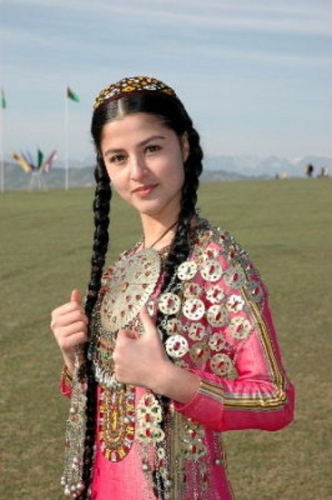
Meanwhile, the so-called ‘opposition’ in exile has been almost entirely corrupted and co-opted by those who wish to carve up what little is left of Iran. On the one hand you have the radical Leftists who actually handed Iran over to the Ayatollahs in 1979 before Khomeini turned on them, forcing those who escaped execution to go into exile. On the other hand you have the blindly loyal devotees of Crown Prince Reza Pahlavi, whose vision – or lack thereof – largely aligns with that of the leftists, at least insofar as it concerns the aims of the Globalists and Islamists.
Those in the Marxist and Maoist opposition to the Islamic Republic promote ethnic separatism, transplanting an anti-Colonialist discourse of “people’s liberation struggles” into an Iranian context where it does not belong. The Persians never lorded over anyone. We were humanitarian liberators. If anything, we were too humanitarian and too liberal.
Leftists speak of “the peoples of Iran” as if the Kurds and Baluch are not ethnically Iranian and as if a Turkic dialect were not imposed on the province of Azerbaijan, the Caucasian wellspring of Iran, by means of genocidal half-savage Asiatic conquerors. While claiming to be feminists and partisans of the proletarian revolution these leftists accept funding from Saudi Arabia, who wants to help them separate the partly Arabized oil-rich region of Khuzestan from Iran and turn it into the nation of Al-Ahwaz, with a considerable coastline on what they already refer to as “the Arabian Gulf.” Kurdistan, Azerbaijan, Al-Ahwaz, Baluchistan: these microstates, ostensibly born of leftist “liberation movements”, would be easy for rootless global capitalists to control. In at least two cases, Al-Ahwaz and ‘Free Baluchistan’, they would also be breeding grounds for the further spread of Islamist terrorism. Finally, they would leave the Persians divested of almost all of Iran’s oil and natural gas resources, and contain the rising tide of Aryan Identitarianism within a rump state of ‘Persia.’
The most well-armed and well-organized of these leftist groups is the Mojaheddin-e-Khalq (MEK), which also goes by the aliases People’s Mojaheddin of Iran (PMOI) and National Council of Resistance of Iran (NCRI). Their armed guerrillas essentially put Khomeini and the clerical establishment to power before being branded as heretics. Their response was to swear allegiance to Saddam Hussein and put at his disposal a few military units that defected during the Iran-Iraq War. This means that they de-facto accepted the Iraqi occupation of Khuzestan. Later, when they were forced to relocate to Iraqi Kurdistan, they made promises to the Kurds to support Kurdish secession from Iran. A whole host of prominent politicians in the United States and the European Union have been bribed into pledging their support for the group’s leader, Maryam Rajavi, including John McCain, Newt Gingrich, Rudy Giuliani, John Bolton, and the NeoCons.
The majority of the Iranian people view the MEK as traitors, and the fact that they are essentially a cult whose members – or captives – are as forcibly closed off from the outer world as North Koreans does not help either. While this means that they would never be able to effectively govern Iran, the MEK could be used as a catalytic agent of de-stabilization during a war against the Islamic Republic.
Here is where Crown Prince Reza Pahlavi comes in, together with his wing of the exiled Iranian ‘opposition.’ The globalist cabal and their Arab allies in the Persian Gulf (Saudi Arabia, Qatar, the UAE) intend to create a problem to which he is the solution. He is in their pocket.
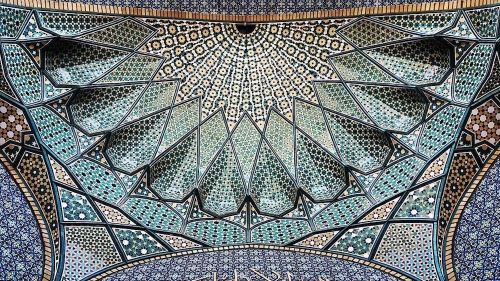
At a CFR meeting in Dallas in early 2016, which I exposed in a notorious interview with the Sweden-based independent journalist Omid Dana of Roodast (“the Persian Alex Jones”), Reza Pahlavi mocked the allegedly “overblown nationalist rhetoric” about the genocidal Arab-Muslim Conquest of Iran. He referred to this incomparable historical tragedy as something that, if it happened at all, is unimportant because it happened long ago. Really, he sees it as an obstacle to good neighborly relations with the Arab states of “the Gulf”. Oh yes, in interviews with Arab media he has referred to the Forever Persian Gulf as “the Gulf” so as to appease his wealthy Arab benefactors. Reza Pahlavi has also allowed representatives in his official media outlets to repeatedly do the same. He has even used the term in a context that implies Iran might surrender several islands in “the Gulf” with a view to better neighborly relations. (As if his father’s relinquishing of Bahrain was not bad enough!)
In fact, he has suggested that Saudi Arabia and other inhumane Arab governments ought to invest in Iran’s economy to such an extent that Iran would be so dependent on them that waging war against these nations would become impossible. Relatedly, and very embarrassingly, the Crown Prince asserted that his future Iran should not have nuclear weapons because he would be afraid to sleep at night in his palace, since if Iran were to develop atomic arms other rival nations in the region would have the right to do so as well and would aim their missiles at Iran.
What is worse than all of this rhetoric is the Prince’s very concrete plan to put the question of a federalization of Iran to a popular vote or nationwide referendum. This is not merely a proposal. He meets with individuals and groups who are promoting separatism and the further territorial disintegration of Iran, with the first stage being “education in the mother tongue” (rather than Persian) and regional autonomy in the context of a federal system. At the same time, he denounced as “Fascists” the Iranian patriots who, at a risk of being imprisoned or killed, assembled at the tomb of Cyrus the Great on October 29th of last year and chanted the slogan, “We are Aryans, we don’t worship Arabs!” This, despite the fact that some of the same protestors also chanted slogans congratulating the Crown Prince on his birthday – a mistake that they will never make again. He even made remarks that suggestively mocked supporters of the Persian Imperial Tradition.
Reza Pahlavi takes every opportunity to make it clear his real ideals are “liberal democracy” and “universal human rights”, Western concepts that he uncritically embraces without the least understanding of the fundamental problems with them as compared to our aristocratic Iranian political philosophy – which influenced, and is much more in line with, substantial Western political theories such as those of Plato, Aristotle, and Nietzsche.

While his embrace of democracy and human rights extends to a popular vote on a federalization that leads to regional autonomy and eventually secession of numerous provinces, it apparently does not protect criticism of Islam. Also under influence from his neo-liberal Western handlers, and the leftist PC police in the West, and totally out of line with the popular sentiment among the Iranian youth, he has asserted that if Islam is to be insulted or if there is to be ‘Islamophobia’ in the future Iran, then it would be better for the Islamic Republic to remain in power. He has the gall to say this while branding his critics as agents of the Islamic Republic. When tens of prominent patriotic monarchists signed a “Last Warning” (Akharin Hoshdâr) statement to him in July of 2016, some of whom were his father’s closest advisors, he accused all of us of being agents of the Islamic Republic who falsified his claims and manufactured evidence (which was itself a patently false and slanderous claim).
We were not agents of the Islamic Republic, nor will we ever be shills of a Shi’a theocracy in its present form. But given the crisis that we face now, we need to consider a radical alternative to both the secessionist traitors in the Paris-based leftist opposition and the Shahs of Sunset in Los Angeles who are all too happy to have their Prince of Persia reign over the rump state that is left of Iran after “regime change.” I propose a grand bargain, a Bonapartist preemption of the coming reign of Terror.
Those who have followed my writings and interviews know that there is no harsher critic of Islam, in all its forms, than yours truly. I have not yet published my really serious and rigorous critiques of Islam, including and especially my deconstruction of the Shi’a doctrine. Nothing that I am about to propose changes the fact that I have every intention of doing so within the next few years.
Nevertheless, we are entering into what Carl Schmitt called a “state of emergency”. In this exceptional situation, wherein we are presented with an existential threat to Iran, it is important to recognize the difference between ontological or epistemological questions and the kind of friend-enemy distinction that is definitive for political thought in the proper and fundamental sense. Iranian nationalists have friends within the system of the Islamic Republic, and Lord knows we have plenty of enemies outside of it.
That young Revolutionary Guard (Pasdaran) officer from Mashaad who recites Hafez while patrolling the Iraqi border and waiting to be murdered by Kurdish separatists, but whose own mother is a Kurd, and who goes with his Persian father to worship at the shrine of Imam Reza while wearing a Farvahar around his neck, is not only a friend he is the brother of every true Iranian patriot. It was not the Pasdaran who shot and butchered young Iranians to put down the revolt of 2009, it was paramilitary thugs beholden to Supreme Leader Ali Khamenei – who is now on his deathbed.
We need to think about the future. The very heart and soul of Zarathustra’s teaching was his futurism, his emphasis on evolutionary innovation. If he were alive today, he certainly would not be a Zoroastrian. Frankly, even if he had been alive during the Sassanian Empire, he would not have been a Zoroastrian in any orthodox sense.
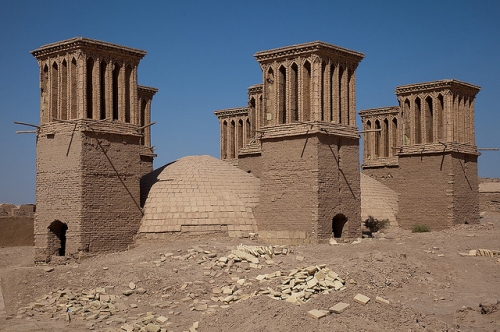
The Iranian Renaissance holds up the Sassanian period as the zenith of Iran’s history, “the climax before the dramatic decline.” But the two greatest heretics, from the standpoint of Zoroastrian Orthodoxy, had the backing of the Sassanian state. Shapur I was the patron of Mani, who created a syncretic world religion in which Gautama Buddha and the Gnostic Christ were seen as Saoshyants (Zoroastrian World Saviors) and the legitimate successors of Zarathustra. Manichaeism spread all the way to southern France in the West, where it sparked the Holy Inquisition as a reaction against it, and China in the East, where Mani was referred to as “the Buddha of Light” and his teaching influenced the development of Mahayana Buddhism. The libertine esotericist Mazdak, whose socialist revolution I would classify more as national-bolshevist than Communist, was given the full backing of the Sassanian Persian Emperor Kavad I. Even Khosrow Anushiravan, who crushed the Mazdakite movement, was not any kind of Orthodox Zoroastrian. He was a Neo-Platonist, who invited the remains of the Academy to take refuge at Iranian libraries and laboratories such as Gondeshapur after Justinian closed Europe’s last universities.
Moreover, the evolution of the Iranian spiritual tradition founded by Zarathustra did not end with the Islamic Conquest. The Iranian Renaissance condemns Mazdak unequivocally, and yet Babak Khorrdamdin is regarded as a hero of nationalist resistance to the Arabian Caliphate. But the Khorramdin partisans of Azerbaijan were Mazdakites! A clear line can be drawn from the Mazdakite movement, through the Khorramdin, and into esoteric Shi’a groups such as the Nizari Ismailis or Order of “Assassins” as they are widely known in the West. Fighting against both the Caliphate and the Crusaders simultaneously, there has never been a greater champion of Iranian freedom and independence than Hassan Sabbah. Nor did his brand of Shi’a esotericism decline with the Sevener or Ismaili sect.
There are still, in Iran today, putatively Shi’a clergy who owe more to Suhrawardi, via Mullah Sadra, than they do to anything that Imam Ali actually preached. By the time of the Sixth Imam, Ja’far al-Sadiq, the Shi’a faith was co-opted by Iranian partisans struggling against the Sunni Caliphate. The kind of Shi’a doctrine that some of Ayatollah Khomeini’s colleagues attempted to impose on Iran in 1979 represented a radical reconstruction of early Arab Shi’ism, not the kind of Shi’a esotericism that birthed the Safavid Dynasty. The latter allowed Iran to reemerge as a distinct political state set apart from, and against, the Sunni Ottoman Caliphate and a Mughal Empire that had also declined into Islamic fundamentalism after Akbar’s Persianate literature and philosophy proved an insufficient bulwark against this. Some of these Persianate Shi’a are at the highest levels in the power structure of the Islamic Republic. They need to be welcomed into the fold of Iranian nationalism, even into the fold of the Iranian Renaissance.
The Italian Renaissance reached back to Pagan Rome for the sake of a civilizational revitalization, but it did not abolish Christianity. Neither did Benito Mussolini when he adopted, as his explicit aim, a second Italian Renaissance and a revival of the Roman Empire. Rather, Il Duce recruited Roman Catholicism as a reliable ally in his valiant struggle against rootless capitalism, because he knew that Roman Catholics were “Roman” – even in Argentina.
Likewise, today, Shi’a are somehow culturally Iranian, even in Turkic northern Azerbaijan, Arabic-speaking Iraq and Bahrain, not to mention northwestern Afghanistan, where Persian remains the lingua franca. If Neo-Zoroastrians, both in Iran and in the parts of Kurdistan currently outside of Iran’s borders, were to ally with Persianate Shi’a it would do more than shore up Iran’s territorial integrity. It would establish a new Persian Empire, providing central Iran with numerous Shi’a buffer zones and forward positions while, on the basis of Iranian nationalism, also reincorporating areas that are ethno-linguistically Iranian but not Shi’a – such as greater Kurdistan and Tajikistan (including Samarkand and Bukhara).

What I am proposing is more than a military coup within the Islamic Republic. The label of “Bonapartist” is only partly accurate. We need a group of officers in the Pasdaran who recognize that Timocracy, as Plato called it, is only the second best form of government and that their rule will need to be legitimated by a philosopher king and a council of Magi with the intellect and depth of soul to use state power to forward the Iranian Renaissance that is already underway. Ironically, if we separate the political form of the Islamic Republic from its content – as a good Platonist would – the regime’s anti-democratic and illiberal core structures are strikingly Iranian. The Guardian Council (Shorâye Negahbân) is the Assembly of the Magi and the Guiding Jurisprudent (Velâyaté Faqih) is the Shâhanshâhé Dâdgar who has the farr – who is rightly guided by the divine glory of Wisdom. This should be no surprised since, after all, Ayatollah Khomeini borrowed these concepts from Al-Farabi, who is still, deep down, an Aryan.
The Pan-Iranist Party, with its origins in the National-Socialist Workers Party (SUMKA) of early 1940s Iran, is a key element in this stratagem. Famous for its very vocal parliamentary opposition to Mohammad Reza Shah Pahlavi’s relinquishing of Bahrain in 1971, the ultra-nationalist (i.e. to the Right of the Shah) loyal opposition of the Pahlavi regime could become the loyal opposition of the Islamic Republic if it were legalized after a coup d’état by those within the Revolutionary Guard who understand the value of Iranian nationalism in confronting the imminent existential threat to Iran.
Unlike all of the other opposition parties, the Pan-Iranist Party’s underground subsistence has been just barely tolerated by the Islamic Republic. Although it is technically illegal, and cannot field candidates in elections, the regime has not crushed it either – because there is no question about the party’s loyalty to Iran. The party has extensive connections to both the intellectual leadership of the Iranian Renaissance and the more patriotic members of the Shi’a clergy. If it were the only legal opposition party, all Iranian nationalists would vote for it and, within a single election cycle, or two at most, the Pan-Iranists would secure a majority in parliament. Their first piece of legislation ought to be something with great symbolic power and little chance of backlash from the remaining military-industrial complex of the Islamic Republic: the return to the Lion and Sun as Iran’s legitimate national flag (one of the Party’s stated goals).
The Lion and Sun epitomizes the ambiguity of Iranian identity. Shi’a claim that it is a zoomorphic representation of Imam Ali, “the Lion of God” (Assadollâh) and that the sword wielded by the lion is the Zulfaqâr. The Islamic Republic replaced the symbol because its fundamentalist founders knew this to be false. The Lion and Sun is an exceedingly ancient Aryan standard, which probably represents Mithras or the Sun rising into the zodiacal house of Leo.
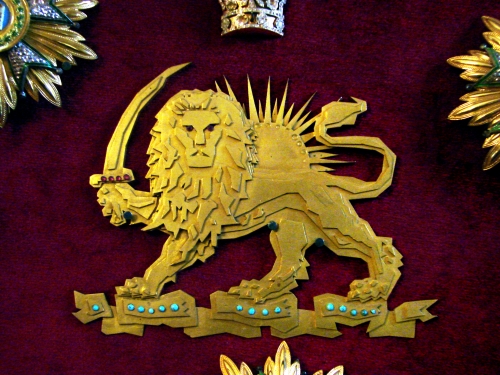
Moreover, Neo-Zoroastrians are wrong to think that the curved sword is an Islamic addition (and consequently that it ought to be replaced by a straightened sword). Rather, the lion’s sword is the harpe, which was the symbol of the fifth grade of initiation in Mithraism, known as Perses. Perses was the son of Perseus, the progenitor of the Persian Aryans. He severs the Gorgon’s head with a harpe sword. Gorgons were sacred to the Scythians, the tribal rival of the Persians within the Iranian world. Perseus holding the severed head of Medusa is a symbol of his having seized her power (her Shakti) while remaining human (without turning to stone). But yeah, sure, it’s Imam Ali.
In the new Iran, Neo-Zoroastrians are going to need to tolerate the mass mourning rituals of Moharram and Ashura, after all their true origins are in the ancient Iranian mourning processions for the martyrdom of Siyâvosh. Meanwhile, Shi’a are going to have to put up with Farvahar-tattooed Neo-Zoroastrian women who have been so antagonized by the Islamic Republic that they want to jump naked over Châhâr-Shanbeh Suri bonfires lit by burning Korans.
Unlike under Reza Shah Pahlavi II, and the proposed Arab Republic of Al-Ahwaz, there will be no criminalization of ‘Islamophobia’ in nationalist Iran. Actually, the Shi’a component of the new regime will serve to legitimate Iran’s alliance with European nationalists fighting the fifth column of the new Sunni Calipahte in Paris, London, Munich, and Dearborn. The hydra’s heads are in Saudi Arabia, Turkey, and Pakistan. Mithra’s Lioness will sever these heads with her harpe. For the first time since the Fatamid Dynasty of the Assassins, Mecca and Medina will be governed by Shi’a mystics. Persians will celebrate at Persepolis.
There is no doubt about it. The time has come for Bonapartist Iran – the Aryan-Islamic, Religious-Nationalist assassin’s fortress of resistance against the rootless globalists, where, “No-thing is true, and everything is permitted.” We are left with only one question, “Who is the Persian Napoleon?”
03:19 Publié dans Actualité, Géopolitique | Lien permanent | Commentaires (0) | Tags : actualité, géopolitique, politique internationale, iran, perse, tradition persane, jason reza jorjani |  |
|  del.icio.us |
del.icio.us |  |
|  Digg |
Digg | ![]() Facebook
Facebook

Entretien avec Yannick Sauveur, biographe de Jean Thiriart
Propos recueillis par Robert Steuckers
En France, le militant de base ignorait l’existence tant de Jeune Europe que de Jean Thiriart, d’une part en raison de l’interdiction de Jeune Europe mais également du fait du black out des organisations françaises concurrentes, j’aurai l’occasion d’y revenir plus tard. J’ai donc fait la connaissance avec les idées de Thiriart assez tardivement, en fait quand j’ai rejoint l’Organisation Lutte du Peuple (en 1972, je crois) qui avait été fondée par Yves Bataille, lequel venait de quitter Ordre Nouveau. Grâce à Yves Bataille, l’OLP a produit un discours européiste cohérent dans la filiation des idées exprimées dans le livre de Thiriart : Un Empire de 400 millions d’hommes L’Europe, Bruxelles, 1964.
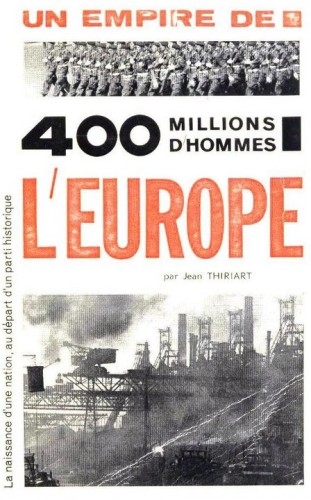
Par ailleurs, Lotta di Popolo en Italie, antérieure à l’OLP France, puisque sa création est grosso modo concomitante de la disparition de Giovane Europa, était dans la filiation directe des idées développées en Italie par les dirigeants italiens de Giovane Europa, dont il faut rappeler que c’était le réseau le plus important en Europe avec ses propres publications dont La Nazione Europea. À l’occasion d’un périple dans plusieurs pays d’Europe, Yves Bataille, quelques militants de l’OLP et moi-même, nous avons souhaité rencontrer Jean Thiriart, lequel était retiré, à l’époque, de toute activité politique. Nous l’avons vu à son magasin (Opterion, avenue Louise), ce qui n’était évidemment pas le meilleur endroit pour faire connaissance. L’accueil fut plutôt froid. À cela plusieurs raisons : Thiriart était méfiant de nature et, trop absorbé par ses activités optométriques, ne voulait plus entendre parler de politique. Sa femme, Alice, qui n’était pas sans influence sur lui, craignait plus que tout que le virus de la politique le reprît. En fait, ainsi qu’il l’expliquera plus tard, il ne voulait plus être chef de mouvement et il se méfiait terriblement des militants, jeunes de surcroît, et le fait de nous être présentés à plusieurs n’était pas forcément la meilleure idée pour une entrée en matière. Bref, cela aurait pu être sans lendemain si je n’avais tenté de reprendre contact personnellement (à l’été 1974, de mémoire) et là, ô surprise, j’ai trouvé un autre homme, d’un contact facile voire chaleureux. L’homme privé était infiniment différent de l’homme public et ceux qui ont pu le côtoyer dans ces circonstances sont unanimes pour reconnaître l’empathie qui se dégageait du personnage. Dès lors, nos relations ont duré jusqu’à sa mort, en novembre 1992.
Effectivement, nous nous rencontrions chez lui, mais nous ne faisions qu’y passer, et soit nous allions faire du bateau en mer du Nord (son bateau était à Nieuwpoort), soit nous allions marcher (parfois faire du ski) dans les Ardennes belges où il avait son camping-car. Alice avait de réels talents de cuisinière et après une marche de 20 à 25 kilomètres à un pas soutenu, un repas copieux était le bienvenu. Il nous est arrivé également de nous rencontrer en forêt de Compiègne mais également, assez fréquemment, chez moi, lors de ses venues au salon de la navigation. Il avait l’habitude d’apporter deux saumons fumés et deux bouteilles de champagne pour quatre. C’est dire qu’avec le temps, une certaine proximité s’est installée.
Vous évoquez -et vous promettez d’approfondir- l’histoire des initiatives européistes d’avant-guerre et l’existence de l’AGRA (« Amis du Grand Reich Allemand »), où Thiriart aurait milité pendant la deuxième occupation allemande de la Belgique. Que représentent ces mouvements ? Que voulaient-ils atteindre ? Y a-t-il, finalement, une filiation avec le corpus des idées de Thiriart ?
Thiriart a effectivement appartenu aux « Amis du Grand Reich Allemand » (AGRA) qui a été présentée comme étant la « collaboration de gauche » par opposition à REX (Léon Degrelle). C’est en raison de son appartenance à l’AGRA qu’il est arrêté et condamné. Il ne semble pas qu’il ait eu une grande activité politique pendant la guerre et lui-même, dans une lettre adressée au journaliste Abramowicz (1992), écrit : « ma collaboration à l’AGRA était quasi nulle. C’est là une façade sans plus ». C’est effectivement vraisemblable dans la mesure où il a été condamné à une peine relativement légère (et il comparait libre à son procès) dans un pays où les tribunaux avaient plutôt la main lourde (plus qu’en France). Mes centres d’intérêt ne m’ont pas porté à étudier les mouvements collaborationnistes en Belgique, en général ni l’AGRA en particulier, mes renseignements sont des plus succincts. Il est vrai aussi que l’AGRA, à la différence de REX, est assez confidentielle, les Allemands souhaitant sans doute, via l’AGRA, contrebalancer l’influence de Rex. Je ne pense pas que son appartenance à l’AGRA ait eu une influence quelconque dans le corpus des idées de Thiriart. À mon sens, la construction idéologique de Thiriart ne viendra que beaucoup plus tard. Ses lectures en prison (1944-45) sont assez classiques : Nietzsche, Platon, Bergson, Marc-Aurèle, André Gide, Aldous Huxley, Anatole France,… Ce sont des lectures littéraires, philosophiques.
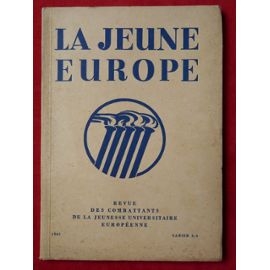
S’il fallait trouver une filiation, il faudrait plutôt la rechercher auprès de l’Union Jeune Europe et des époux Didier (Lucienne et Edouard) qui publient à Bruxelles le bulletin Jeune Europe (26 numéros entre janvier 1933 et juin 1936). Les époux Didier vont être très actifs avant et pendant la guerre jusqu’à créer en 1941 la Société Anonyme des Éditions de la Toison d’Or. Or, Thiriart ne pouvait pas ne pas connaître cette Jeune Europe et curieusement, il n’en parle pas, ne la cite pas alors qu’il mentionne La Jeune Europe (d’un intérêt assez limité) éditée à Berlin pendant la guerre par les Échanges culturels inter-universitaires. Je n’ai pas d’explication au fait que Thiriart occulte la Jeune Europe des époux Didier. Elle n’est citée qu’une seule fois, à savoir dans un numéro de L’Europe Communautaire (mars 1965), mais le paragraphe relatif à cette « deuxième apparition » de « Jeune Europe » (la « première apparition » étant la « Jeune Europe » de Mazzini) est purement et simplement barrée dans l’exemplaire personnel de la collection Thiriart.
Vous parlez de Thiriart comme d’un personnage qui a évolué dans sa pensée, sa vision d’Europe, sa vision géopolitique. Quelles sont les principales étapes de cette évolution ?
Il y a aussi une autre évolution de Thiriart dont vous ne parlez pas et qui est celle de l’homme. Chef de mouvement, homme d’action voire activiste, il l’est pendant cette phase de son activité politique, la plus connue, celle qui va de 1960 à 1969. Thiriart ne manquera jamais une occasion d’évoquer cette évolution, en l’espèce une rupture, pour exprimer en premier lieu le fait qu’il ne reviendrait plus jamais à la tête d’un mouvement ou parti politique, en second lieu qu’il allait pouvoir dire et écrire le fond de sa pensée alors qu’auparavant, il était prisonnier d’une clientèle. Parlant de cette époque (les années 60), il n’aura pas de mots assez durs pour les « petits imbéciles de l’extrême-droite », le « carnaval romantique » (Guevara, Mao, Drieu, Brasillach).
S’agissant de l’évolution de sa pensée, elle est progressive et se fait par étapes même si très rapidement, la tendance européenne du mouvement est présente dès le début du mouvement via une Chronique de la Nation Européenne écrite par Thiriart sous pseudonyme. Très vite également, il développe le fait que le Congo n’est pas un problème belge, que l’Algérie n’est pas un problème français. Le combat pour l’Algérie française doit se situer à l’échelle européenne. L’Algérie est européenne. Le raisonnement de Thiriart constitue, pour l’époque, incontestablement une originalité.
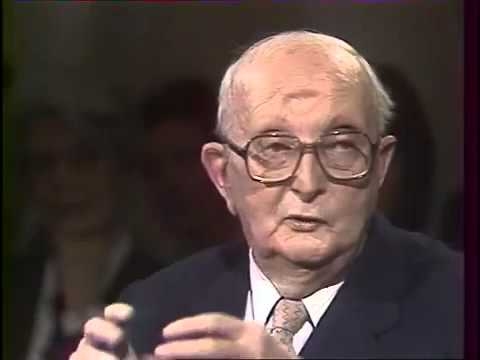
Le rapport Thiriart/Bardèche est intéressant. Quel fut-il ?
Thiriart avait une relative admiration pour Maurice Bardèche, il écrira d’ailleurs : Sur le plan intellectuel je n’ai rencontré que deux hommes de valeur : Bardèche et Mosley.
Thiriart et Bardèche n’ont guère eu de contacts, ils se sont rencontrés au début des années cinquante en Espagne. Lors de la reprise de contact au début des années quatre-vingt, Thiriart évoque l’ouvrage en chantier, celui de l’Europe de Vladivostock à Dublin. Bardèche montre un certain scepticisme : Je ne vois pas très bien comment on peut répercuter vos idées ni même comment on peut parvenir à les faire connaître au public. Votre analyse géopolitique et stratégique me paraît malheureusement excellente, mais je ne suis pas du tout d’accord avec les données psychologiques. Le marxisme-léninisme est une religion et procède comme toutes les grandes religions conquérantes. Elle n’offre pas d’autre alternative que celle qui était offerte autrefois par l’Islam : conversion ou extermination. Ce choix final me paraît avoir une certaine importance dans notre détermination. En fait, les deux hommes sont sur des longueurs d’ondes différentes. L’intellectuel littéraire qu’est Bardèche ne peut évidemment souscrire aux thèses de l’homme d’action qu’est Thiriart ni à ce qu’écrit (20/11/1981) ce dernier à Bardèche dont il faut rappeler qu’il est le fondateur et directeur de Défense de l’Occident (sic) : l’Occident doit crever. Il ne faut rien faire pour le sauver. En clair, deux visions opposées : l’une de droite assez classique, l’autre révolutionnaire et pratique. Malgré cette opposition non dissimulée, Thiriart reconnait une qualité à Bardèche : le courage.
Au détour d’un paragraphe, vous parlez de l’intérêt que Thiriart portait à la Chine. Cela n’a jamais vraiment transparu dans ses écrits. Qu’en dites-vous après avoir examiné toutes ses archives ?
Effectivement, cet intérêt ne transpire pas dans ses écrits politiques. Je pense que Thiriart était assez pudique et il avait le souci de mettre une barrière entre vie privée et vie publique. Dans son journal, il évoque « mon ami le peintre chinois » qu’il connaissait déjà en 1942, Thiriart a alors vingt ans. Ce peintre s’appelle SADJI (ou SHA QI), il est né en 1914, donc de huit ans plus âgé que Thiriart. Il vit en Belgique. C’est un peintre d’un certain renom (peinture, dessin, aquarelle). Artprice, le leader de l’information sur le marché de l’art, recense 465 adjudications des œuvres de cet artiste (315 en peinture, 150 en dessin-aquarelle). Jean Thiriart a été initié à l’écriture chinoise grâce à son ami Sadji et il va l’étudier pendant trois années (Je connais particulièrement bien l’histoire de la Chine pour avoir été pendant 3 ans, dans ma jeunesse, un étudiant en écriture chinoise, in 106 réponses à Mugarza, p.149). Grâce à Sadji (ou indépendamment ?), Thiriart va s’intéresser à la culture chinoise, il avait lu les ouvrages du sinologue Marcel Granet (1884-1940) qui continuent de faire autorité, notamment La pensée chinoise, Paris, 1934.) SADJI, qui avait fait un portrait de Thiriart, est mort en 2005.
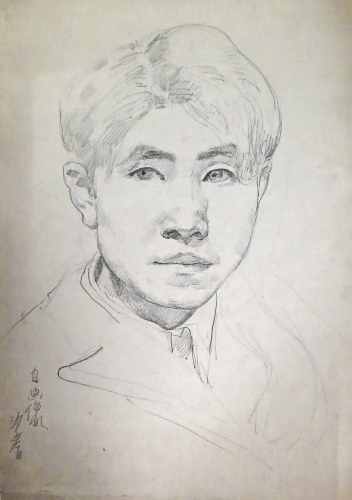
Un autoportrait du peintre Sadji
Les rapports complexes entre Thiriart et les mouvements français plus ou moins équivalents devraient intéresser tout observateur des marginalités politiques. Quel regard portez-vous sur ces rapports complexes, aujourd’hui, en 2017 ?
Rapports complexes, oui , ils le furent. Quelles sont les responsabilités des uns et des autres ?
Le temps a passé, bien des acteurs de l’époque ne sont plus. Pour ma part, je n’ai pas vécu cette période (début et milieu des années 60). Avec le recul, les passions n’étant plus de mise, il est plus facile d’évoquer avec quelque objectivité les relations entre Thiriart et les mouvements français.
Avant toute chose, on ne peut oublier que Thiriart a très largement ouvert les colonnes de sa presse aux responsables politiques français dont il est permis de penser qu’ils ont une certaine proximité avec les vues de Thiriart , qu’il s’agisse de Jeune Nation, de la Fédération des Étudiants Nationalistes (FEN), du Front National pour l’Algérie Française, des jeunes du MP 13. Dominique Venner, Pierre Poujade, s’expriment dans Nation Belgique. Il ne faut pas oublier non plus le soutien indéfectible de Thiriart et de son mouvement à l’OAS (reproduction et diffusion du journal de l’OAS-Edition métropolitaine, Appel de la France, sous forme d’un supplément gratuit à Nation Belgique, tiré à 15 000 exemplaires).
Pour répondre à votre question, j’observe que vous évoquez « les mouvements français plus ou moins équivalents », ce qui laisse place à pas mal d’ambiguïtés et m’amène à l’analyse suivante. Quand Thiriart reprend l’action politique avec le CADBA d’abord, avec le MAC ensuite, il n’est pas encore le personnage public qu’il va devenir. Les mouvements qu’il co-anime sont typiquement de droite voire d’extrême droite et de ce point de vue assez comparables à leurs alter ego français, d’où la proximité évoquée précédemment. C’est l’évolution assez rapide de Thiriart qui va entraîner un écart de plus en plus grand, disons schématiquement, entre le discours classique d’extrême droite de la plupart des mouvements français et notamment Europe Action et le discours européen de Thiriart avec cette volonté affichée de dépasser les cadres nationaux. Il y a véritablement deux lignes bien différentes et Thiriart n’a peut être pas su se détacher suffisamment de cette extrême droite qu’il haïssait foncièrement. Il est assez paradoxal que ceux là même qui, en France, dénigraient et/ou se gaussaient de l’évolution de Thiriart, viendront (bien) plus tard sur ses positions, je pense aux héritiers d’Europe Action, FEN et autres. Il était également de bon ton dans la presse dite « nationale » de moquer le prétendu virage « gaulliste » de Thiriart là où simplement, en dehors de tous schématismes politiciens, il fait la part des différentes facettes de la politique du général de Gaulle, en particulier, les aspects positifs de la politique extérieure du général. Il n’est jamais bon d’avoir raison trop tôt. Qui aujourd’hui, en France, ne reconnaît pas le bien fondé de la politique étrangère du général de Gaulle, y compris de la part de ses détracteurs de l’époque. Je rappelle que Thiriart écrivait (22/11/1963) : Par contre, de Gaulle a cent fois raison de prendre ses distances à l’égard de Washington, il a cent fois raison de se méfier des Anglais, il a mille fois raison de vouloir un armement atomique, français de naissance, inéluctablement européen de croissance. Cela étant, au-delà de la franche hostilité ou de l’indifférence à l’égard de Thiriart de la part des « mouvements français plus ou moins équivalents », à ma connaissance, parmi ces anciens encore en activité aujourd’hui, aucun n’a exprimé publiquement sa dette envers Thiriart.
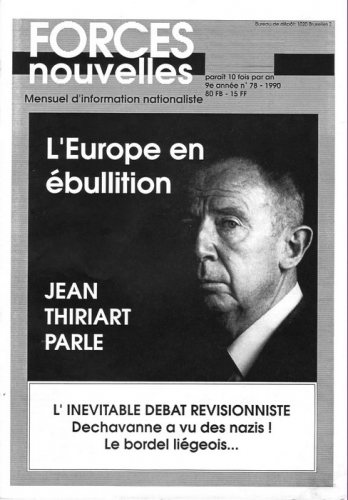
Un numéro de la revue "Forces nouvelles" (Bruxelles), avec un très long interview de Jean Thiriart
Comment expliquez-vous que « Jeune Europe » n’a jamais connu une renaissance, alors que l’Europe eurocratique de Bruxelles et de Strasbourg s’est tout à la fois construite, en s’agrandissant, et déconstruite, en perdant tout crédit dans le grand public ? Cette absence d’un mouvement européen réellement politique et géopolitique, tant sur l’échiquier politique européen que dans les marges extra-parlementaires des Etats nationaux, explique-t-elle le déclin dramatique de l’Europe d’aujourd’hui ?
Je crois que la question que vous posez se résume malheureusement au fait que l’Europe ne passionne pas (et n’a jamais passionné) les foules. C’était d’autant plus vrai au temps de Jeune Europe, dans les années 60, qu’un mouvement révolutionnaire avait peu de chance de percer dans une société en pleine croissance économique. Depuis les choses ont bien changé, la société du spectacle est passée par là et la lobotomisation généralisée des masses n’est guère favorable à une renaissance européenne tant que n’existe pas une situation de détresse. Les élites, dans tous les milieux, ont bien évidemment intérêt au maintien de ce statu quo qui les arrange bien. Du côté des adversaires de l’Europe de Bruxelles, on trouve un peu tout : des rivalités d’ego, un manque (ou absence) de cohérence politique, de la paresse intellectuelle.
Tout d’abord, on a la caricature de l’anti Europe avec les mouvements et partis nationalistes, le repli hexagonal. L’exemple en est fourni par le Front National qui me semble être l’exemple même du degré zéro de la politique. Il se présente (ou prétend être) un parti anti Système, ce qu’il n’est pas, et cannibalise un capital de voix, non négligeable, en pure perte. Il est le repoussoir idéal qui… consolide le Système. Du côté des souverainistes, de droite ou de gauche, (Chevènement, de Villiers, Dupont-Aignan, Asselineau, Nikonoff,…), leur condamnation (légitime) de l’Europe de Bruxelles les amène à une certaine myopie intellectuelle et une incapacité à penser une Europe indépendante. Enfin, certains de nos amis, dont la sincérité européenne n’est pas en cause, tout en étant partisans d’un État européen, se sont déclarés favorables aux diverses consultations (référendum Maastricht, 1992, référendum traité établissant une constitution pour l’Europe, 2005) car selon eux, il faudrait faire confiance aux structures (à l’effet de masse), avec lesquelles l’avènement d’un Etat européen se fera, inévitablement et mécaniquement. Je n’ai pas besoin de préciser que je ne partage absolument pas cette vision pour le moins optimiste ( !). Les faits, l’évolution de cette Europe-croupion, le déclin dramatique de cette Europe… rien ne semble devoir ébranler les certitudes de ces « Européens ». Je mentionne au passage que même Thiriart, point sur lequel j’étais en désaccord avec lui, était partisan du Oui (pro Maastricht) au référendum de 1992. L'effet de masse n'a nullement empêché la vassalisation, toujours plus grande, de l'Europe à l'égard de la puissance américaine.
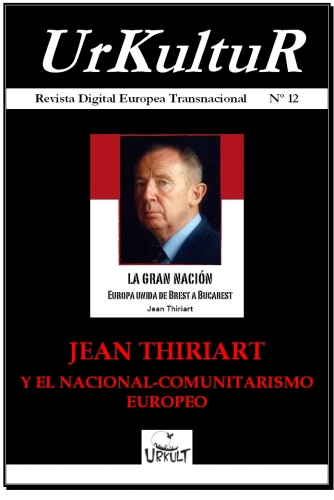
Un exemplaire de la revue espagnole "Elementos" qui ne parait que sur la grande toile. Ce numéro est entièrement consacré à Jean Thiriart
Estimez-vous ou non que la revue de géopolitique italienne « Eurasia », patronnée par Claudio Mutti, est le seul avatar positif de « Jeune Europe » de nos jours ?
Vous avez raison d’évoquer Eurasia, l’excellente revue animée par l’infatigable Claudio Mutti qui est sans doute un des plus anciens militants de Jeune Europe encore en activité. Cela étant, ma connaissance du champ politique européen ne me permet pas d’affirmer avec certitude l’inexistence d’autres avatars de « Jeune Europe ».
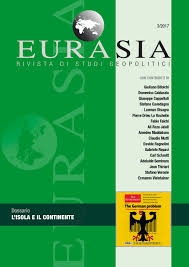
Comptez-vous rédiger un ouvrage plus complet sur Thiriart, sur « Jeune Europe » ainsi que sur les antécédents « jeune-européistes » d’avant-guerre et sur les avatars malheureux du « thiriartisme » après la disparition de « Jeune Europe » et après la mort de son fondateur et impulseur ?
Avant d’écrire un livre sur Thiriart, il me paraîtrait important d’éditer (ou rééditer) ses écrits, à commencer par les éditoriaux de La Nation Européenne ainsi que 106 réponses à Mugarza, Responses to 14 questions submitted by Gene H. Hogberg pour la revue américaine The Plain Truth. On pourrait y ajouter l’interview publiée dans Les Cahiers du CDPU (1976), les articles parus dans la revue Nationalisme et République (1992). Pour ma part, j’ai obtenu d’un éditeur ami la publication de L’Empire Euro-soviétique. Ce texte qui date de 1985 n’a jamais été publié. Malgré les bouleversements géopolitiques intervenus, ce texte garde, me semble-t-il toute sa valeur de témoignage. Le jeune (ou moins jeune) lecteur découvrira, avec bonheur je l’espère, la vision de grande politique de Thiriart et sa clairvoyance et sa capacité à se projeter dans la longue durée, en dehors des idéologies et des contingences politiciennes (évidemment !). Naturellement, ce texte sera accompagné des observations, notes, mise en perspective nécessaires à une bonne compréhension. En revanche, je ne vois guère d’intérêt à rééditer les écrits antérieurs à La Nation Européenne, qu’il s’agisse du livre Un Empire de 400 millions d’hommes L’Europe (1964) ou de la brochure La grande nation, L’Europe unitaire de Brest à Bucarest-65 thèses sur l’Europe (1965).
Je n’ai pas connaissance qu’il y ait eu quoi que ce soit d’intéressant après la disparition de Jeune Europe et/ou après la mort de Thiriart. Les rares tentatives sont demeurées groupusculaires et n’ont jamais atteint un niveau satisfaisant tant sur le plan de l’organisation supranationale qu’en ce qui concerne la production intellectuelle.
Les antécédents Jeune Europe de l’entre-deux guerres, je pense notamment à la tentative des époux Didier en Belgique, mériteraient assurément une étude approfondie.
19:47 Publié dans Entretiens, Histoire, Hommages, Synergies européennes | Lien permanent | Commentaires (2) | Tags : jean thiriart, yannick sauveur, histoire, belgique, jeune europe, européisme, idée européenne, hommage, entretien, synergies européennes, maurice bardèche, sadji, nationalisme révolutionnaire |  |
|  del.icio.us |
del.icio.us |  |
|  Digg |
Digg | ![]() Facebook
Facebook
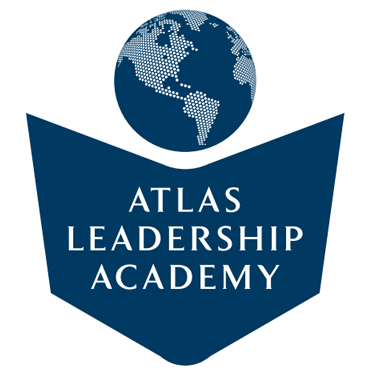
par Auran Derien
Ex: https://metamag.fr
Le site “les crises” a publié un document fort pertinent sur la tyrannie installée en Amérique Hispanique par des organisations essayant de se camoufler derrière les pensées de l’école néo-libérale.
Observer l’horreur créée par les dirigeants assassins de peuples qui dirigent ces think tank du réseau Atlas, ainsi que la sublime niaiserie des bedeaux qu’ils paient pour éructer des slogans de primates, expose la quintessence de l’inhumanité occidentale. La réalité nue et crue de ce monde nous aide à mieux comprendre ce que sont les dirigeants placés à la tête des États européens.
Un principe général : le trafiquant a toujours raison
Le réseau Atlas, en Amérique Hispanique, est très comparable aux réseaux de Young leaders européens financés par des dollars créés ex nihilo pour acheter des cerveaux vaniteux, auxquels on déblaie le chemin vers des postes de responsabilité sous condition – tirée de la nigologie biblique – qu’ils rendent au centuple, à leurs maîtres, les sommes que ceux-ci ont fait descendre du ciel pour eux.
Les think tank du réseau Atlas sont simultanément des sectes monothéistes et des associations de malfaiteurs. La croyance en quelques slogans y est fondamentale. Les chefs sont présentés comme purs, bons et justes, de sorte que tout leur est permis. Le crime contre les humains ayant une personnalité y est encouragé puisque seule la foi sauve et que de toutes façons tout est recouvert par la robe sans couture des vérités révélées.
Le réseau Atlas a pour fin de supprimer ce qui gêne le business. Le monde est trop complexe pour les têtes plates que l’on y recrute. Le concept de “public” doit être évacué. La philosophie est trop formatrice de pensée critique. Il ne doit rester que la supériorité a priori du trafiquant, cet escroc sublime qui incarne l’Être. Tous ceux qui ne trafiquent pas ne sont que des marchandises que l’on peut acheter, vendre, dépecer, etc. Donc, la où règne les voyous, en Argentine, au Brésil, en Colombie, au Honduras, etc. ce sont les pantins serviles du réseau Atlas qui tirent les ficelles.
La fin des universités et le retour des prédicateurs
Si l’éducation fut la grande aventure de l’Europe depuis les philosophes grecs, la naissance d’un esprit est désormais proscrite au profit de la fabrication d’esclaves. Les think tank de la congrégation Atlas remplissent cette nouvelle fonction de destruction massive de la pensée. Le stackanovisme intellectuel, accumulation de justifications mensongères, remplit la vie des penseurs à la petite semaine entassés dans des bureaux chics mais hantés par la haine et le mensonge. Atlas porte sur ses épaules la stupidité monothéiste, les vérités révélées dont la sottise désole et d’où l’esprit a été banni. Les milliers de jocrisses payés par cet empire du néant respectent non seulement les règles de la double morale chère aux vétérotestamentaires mais aussi l’inversion des valeurs.
Au Brésil, une canaille a été placée à la tête d’un groupe de cuistres caractérisé par sa haine du peuple mais qui a été nommé “Institut Mises” alors que Ludwig von Mises aurait refusé qu’une bande d’escrocs utilise son nom. L’esprit, sens des ensembles et non addition simpliste de trucs destinés à tromper s’est envolé et on ne sait quand il pourra souffler à nouveau.
Les centrales multimédias intégrent désormais les techniques d’intervention à sens unique dans les réseaux sociaux, comme on a pu l’observer depuis l’élection de Donald Trump. Le gang GAFA (Google, Amazon, Facebook, Apple), contrôlé par quelques fonds financiers, s’est transformé en une association d’assassins de la pensée et de prédicateurs. Le consistoire GAFA censure les humains qui pensent au lieu de croire. Seuls les groupuscules agités, contrôlés, financés par Atlas et compagnie ont le droit de pulluler en Amérique Hispanique où la pensée complexe disparaît au profit de la brutalité des multinationales et autres associations de malfaiteurs. Les nigauds au service d’Atlas sont d’ailleurs en admiration béate devant les criminels militaires chiliens ou argentins qui affirmaient lutter contre les bolchéviques alors qu’ils assassinaient leur peuple et son élite patriote pour complaire au pouvoir infâme installé à l’étranger mais qui payait en dollar. Car tout est là : être au service de la race supérieure des financiers est le seul patriotisme autorisé et approuvé…
Le cas de l’Argentine en est un exemple .
La privatisation signifie là-bas vendre des terres aux financiers amis, comme Benetton, la population locale étant incluse dans le lot. Après, un discours bien rôdé soutient qu’il n’existe pas de peuples autochtones, que chacun est un immigrant. En Argentine, les Mapuches seraient donc des étrangers, comme en Europe nous serions des nouveaux venus. Parallèlement, on fait disparaître les élites légitimes des peuples autochtones et on élimine la solidarité interne en envoyant par exemple des Mapuches de l’armée et de la police contre leur propre famille et, en France, en utilisant des “Versaillais”.
La continuité des méthodes révèle les auteurs de cette infâmie. En France, ils anônnent que les Européens sont des immigrés, et leurs élites disparaissent assassinées par les lois que font voter les professionnels de l’antiracisme. Ainsi le monde passe-t-il aux mains de financiers véreux et de congrégations multinationales .
12:34 Publié dans Actualité | Lien permanent | Commentaires (0) | Tags : actualité, globalisation, globalisme, mondialisme, mondialisation |  |
|  del.icio.us |
del.icio.us |  |
|  Digg |
Digg | ![]() Facebook
Facebook

20:37 Publié dans Théorie politique | Lien permanent | Commentaires (0) | Tags : laurent ozon, famille, politologie, sciences politiques, théorie politique, philosophie politique |  |
|  del.icio.us |
del.icio.us |  |
|  Digg |
Digg | ![]() Facebook
Facebook
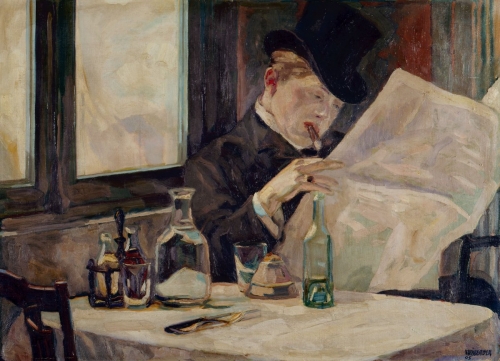
AUßENPOLITISCHES
(Ungarn fordert EU-Hilfe für Grenzzaun)
Sonntagsheld (27) – Zahltag
Die einen reden über Mauern, die anderen bauen sie.
https://sezession.de/57374/sonntagsheld-%2827%29-%E2%80%9...
Streit mit Polen : Bundesregierung weist Forderung nach Reparationen zurück
http://www.faz.net/aktuell/politik/ausland/polens-kriegsr...
Streit bei Frankreichs Rechtsextremen
Le Pens Vize verlässt Front National
"Natürlich verlasse ich den Front National": Florian Philippot, Vizechef von Frankreichs Rechtsextremen, gibt entnervt auf. Zuvor hatte ihn Marine Le Pen entmachtet.
http://www.spiegel.de/politik/ausland/front-national-flor...
Ätzende Substanz versprüht: Sechs Verletzte in London
https://www.merkur.de/welt/gefaehrliche-substanz-verletzt...
Hunderttausende Katalanen demonstrieren für Unabhängigkeit
https://jungefreiheit.de/politik/ausland/2017/hunderttaus...
Solidaritätsdemo für Katalonien-Referendum in Bilbao
http://orf.at/stories/2407236/
Barcelona: Nach Festnahmen in Katalonien kommt es zu Ausschreitungen bei Protesten
https://web.de/magazine/politik/festnahmen-katalonien-zah...
Katalonien und die Unabhängigkeit
https://sezession.de/57401/?komplettansicht=1
Barcelona in Aufruhr
Alte Menschen bluten, Eltern bringen Kinder in Sicherheit
https://www.welt.de/politik/ausland/article169235124/Alte...
Spanischer Ministerpräsident
Laut Rajoy hat es in Katalonien „kein Referendum gegeben“
https://www.welt.de/politik/ausland/article169236681/Laut...
Ministerpräsident über Abstimmung
Rajoy: „Kein Referendum, sondern eine Inszenierung“
http://www.faz.net/aktuell/politik/ausland/rajoy-verurtei...
Katalonien-Kommentar : Warum Spanien das Richtige tut
http://www.faz.net/aktuell/politik/ausland/katalonien-kom...
Katalonien: Laut Bürgermeisterin 460 Verletzte
http://www.heute.de/liveblog-zum-unabhaengigkeits-referen...
Albanien
Aufarbeitung der Hoxha-Diktatur
Der lange Schatten des Kommunismus
http://www.deutschlandfunk.de/aufarbeitung-der-hoxha-dikt...
Trump kippt Obama-Erlaß
Illegal bleibt illegal
von Thorsten Brückner
https://jungefreiheit.de/debatte/kommentar/2017/illegal-b...
Aufschub im Streit um Schulden-Obergrenze
Trump und Kongress vermeiden "government shutdown"
http://www.manager-magazin.de/politik/weltwirtschaft/stre...
Nach Unterstützung des Establishment-Kandidaten
Bittere Niederlage für Trump
https://jungefreiheit.de/politik/ausland/2017/bittere-nie...
Fenstertausch: Sklavereibefürworter müssen aus US-Kirche weichen http://derstandard.at/2000063733600/Fenstertausch-Sklaver...
Nashville in den USA
Mann schießt in Kirche um sich
http://www.stuttgarter-nachrichten.de/inhalt.nashville-in...
USA lieferten Waffen an syrische Rebellen über Ramstein-Basis
https://jungefreiheit.de/politik/deutschland/2017/usa-lie...
Syrien
Sonntagsheld (28) – Der Löwe hat gesiegt!
https://sezession.de/57377/sonntagsheld-%2828%29-%E2%80%9...
Syrien: IS-Terroristen verlieren ihre einstige Hauptstadt Raka – Widerstand nach großen Verlusten gebrochen
http://www.epochtimes.de/politik/deutschland/syrien-is-te...
Iraks Kurden stimmen mit großer Mehrheit für Unabhängigkeit
https://www.welt.de/politik/ausland/article169102238/Irak...
USA erkennen Kurden-Referendum im Nordirak nicht an
https://www.welt.de/politik/ausland/article169186956/USA-...
Eigener Staat der irakischen Kurden
Die Zeichen stehen auf Misserfolg
Nach dem Unabhängigkeitsreferendum der irakischen Kurden mangelt es an Unterstützung: Bagdad, Ankara und Teheran boykottieren einen kurdischen Staat. Dabei könnte ein autonomes, im besten Fall demokratisches Kurdistan zum Vorbild in der Region werden, kommentiert Susanne El Khafif.
http://www.deutschlandfunk.de/eigener-staat-der-irakische...
Massenmord an Rohingya
Myanmar setzt Buddha eine Fratze auf
http://www.n-tv.de/politik/Myanmar-setzt-Buddha-eine-Frat...
Clash of Cultures
Palästinenser, Rohingya und die Kurden – der Export religiöser Konflikte
https://www.tichyseinblick.de/kolumnen/spahns-spitzwege/p...
Brasilien
Eskalation
Kriegsszenen in Rio – Militär besetzt außer Kontrolle geratene Favela
https://www.welt.de/politik/ausland/article168953115/Krie...

INNENPOLITISCHES / GESELLSCHAFT / VERGANGENHEITSPOLITIK
(Merkel vs. Schulz)
TV-Duell
Uneinsichtig und überfordert
von Michael Paulwitz
https://jungefreiheit.de/debatte/kommentar/2017/uneinsich...
Wahlwerbung
Bertelsmann-Stiftung eilt Kanzlerin Merkel zur Hilfe
https://jungefreiheit.de/debatte/kommentar/2017/bertelsma...
Rosenheim
Bundeskanzlerin deutlich und emotional
Stehende Ovationen für Merkel
https://www.ovb-online.de/rosenheim/stehende-ovationen-me...
(Der gleiche Wahlauftritt anders geschildert)
Wahlkampf in Rosenheim: Grenzenloser Groll gegen Merkel
https://www.merkur.de/politik/angela-merkel-in-rosenheim-...
Merkel in Rosenheim 2017: Ausgebuht, ausgepfiffen, "Hau ab, hau ab Rufe"
https://www.youtube.com/watch?v=CXaRT_O1CSo
Kanzlerin in Torgau und Finsterwalde
Gröl-Konzerte und Hitlergruß: Rechte brüllen Merkel bei Wahlkampfauftritt nieder
http://www.focus.de/politik/deutschland/kanzlerin-in-torg...
Abrechnung mit Merkel-Pöblern
"Rechtsextreme unter dem Banner der AfD"
http://www.t-online.de/nachrichten/deutschland/bundestags...
Berlin
Lichtbomber attackieren Merkel
https://jungefreiheit.de/politik/deutschland/2017/lichtbo...
M oder die Ballade von der demokratischen Unzurechnungsfähigkeit der Deutschen
https://sezession.de/57388/m-oder-die-ballade-von-der-dem...
(Opfer ist vor allem die AfD)
2250 Straftaten in Zusammenhang mit Bundestagswahlkampf
https://www.welt.de/politik/deutschland/article168688521/...
(Bundesjustizminister wird nervös…)
Warnung vor Wahl
Maas nennt AfD Verfassungsfeinde
https://jungefreiheit.de/politik/deutschland/2017/maas-ne...
Altmaier sind Nichtwähler lieber als AfD-Wähler
http://www.zeit.de/politik/deutschland/2017-09/kanzleramt...
(Verlogen. Seit Jahren stören Jusos und Gewerkschafter mit Pfeifen und Buhrufen Veranstaltungen, ohne dass sich Steinmeier dagegen ausgesprochen hätte…)
Frank-Walter Steinmeier: "Tomaten und Trillerpfeifen sind kein Mittel zu höherer Erkenntnis"
Bundespräsident Steinmeier hat Angriffe auf Politiker im Wahlkampf kritisiert. Wer wütend sei, solle selbst das Wort ergreifen, statt andere zum Schweigen zu bringen.
http://www.zeit.de/politik/deutschland/2017-09/frank-walt...
Kein Platz im Haushaltsausschuss?
Wie sich die Regierung schon jetzt auf eine AfD-Opposition vorbereitet
Es spricht alles dafür, dass die AfD in den Bundestag einziehen wird - als erste rechtspopulistische Partei in der Geschichte der Republik. Darauf muss sich nun auch der Haushaltsausschuss einstellen. Man will es den Rechtspopulisten nicht leicht machen.
http://www.stern.de/politik/deutschland/afd--die-regierun...
Gauland hat trotz Attacken standgehalten
https://irisnieland.wordpress.com/2017/09/22/gauland-hat-...
Thema: Gauland und Höcke
Weidel verlässt TV-Runde vorzeitig
http://www.n-tv.de/politik/Weidel-verlaesst-TV-Runde-vorz...
Alice Weidels Abgang : AfD inszeniert sich als Medienopfer
http://www.faz.net/aktuell/feuilleton/medien/afd-politike...
(Kommentar zur Marietta Slomka-Klamotte…)
Eine kleine Erinnerung für Andreas Scheuer
http://www.achgut.com/artikel/herr_scheuer_entschuldigen_...
Alice Weidel: Stellungnahme zum verlassen der ZDF-Talkshow
https://www.youtube.com/watch?v=TucSa6s2HSY
Grüne und FDP auf Antifa-Kurs
http://www.achgut.com/artikel/gruene_und_fdp_auf_antifa_k...
Vorwurf: Versorgung von Genossen
Familienministerium schafft Hunderte neue Stellen
https://jungefreiheit.de/politik/deutschland/2017/familie...
Ursula von der Leyen : Entfernung von der Truppe
http://www.faz.net/aktuell/feuilleton/debatten/warum-ursu...
Sexueller Missbrauch: Ex-SPD-Abgeordneter Linus Förster legt vor Gericht Geständnis ab
http://rtlnext.rtl.de/cms/sexueller-missbrauch-ex-spd-abg...
http://www.spiegel.de/politik/deutschland/linus-foerster-...
Das vorläufige Ergebnis der Bundestagswahl 2017
http://www.focus.de/politik/praxistipps/wahlkreise-ausgez...
(Henryk Broder zu Merkels Wiederwahl)
Mutti die Vierte
https://www.youtube.com/watch?time_continue=419&v=Ens...
AfD im Bundestag oder: Was heute passiert ist
von Götz Kubitschek
https://sezession.de/57404/afd-im-bundestag-oder:-was-heu...
Blaue Hochburgen im Westen
Hoher Ausländeranteil, hohes AfD-Ergebnis
https://jungefreiheit.de/politik/deutschland/2017/hoher-a...
AfD nach der Wahl: Machtfragen, Richtungsdebatten, Strategiefindung
https://sezession.de/57402/afd-nach-der-wahl:-machtfragen...
AfD-Chefin Petry bricht mit neuer Fraktion
https://jungefreiheit.de/politik/deutschland/2017/afd-che...
Petrys Abgang
von Dieter Stein
https://jungefreiheit.de/debatte/kommentar/2017/petrys-ab...
Reaktionen auf AfD-Einzug
„Die deutsche Nachkriegs-Demokratie hat ihre Unschuld verloren“
https://jungefreiheit.de/politik/deutschland/2017/die-deu...
„Welt“ will AfD-Wähler therapieren
Herr Dr. Poschardt bittet auf die Couch
http://www.pi-news.net/herr-dr-poschardt-bittet-auf-die-c...
(Michaela Engelmeier, SPD, zum AfD-Einzug…)
Die gedopte Meldung
https://unbesorgt.de/die-gedopte-meldung/
Merkeldämmerung
Pyrrhos lässt grüßen
http://www.pi-news.net/pyrrhos-laesst-gruessen/
Sie säte Wind und erntete Sturm
Eigentlich ist Angela Merkel abgewählt worden. Alle spüren das. Nur Angela Merkel nicht.
https://bazonline.ch/ausland/europa/sie-saete-wind-und-er...
(Zu Petrys Parteiaustritt)
Zum Scheitern verurteilt
von Jörg Kürschner
https://jungefreiheit.de/debatte/kommentar/2017/zum-schei...
Nach Bundestagseinzug
Der AfD drohen stürmische Zeiten
von Thorsten Hinz
https://jungefreiheit.de/debatte/kommentar/2017/der-afd-d...
(Die gesinnungsethische Logik des "Spiegel": Was Nahles sagt ist stets weniger schlimm, als wenn Gauland etwas sagt…)
"In die Fresse"-Zitat von Nahles Vorsicht vor dem Schredder
Die neue SPD-Fraktionschefin Nahles hat angekündigt, der Union "in die Fresse" hauen zu wollen. Ein Fehler. Aber mehr auch nicht. Die Debatte darüber offenbart einen erschreckenden Mangel an Komplexität.
http://www.spiegel.de/politik/deutschland/andrea-nahles-u...
(Zu Gauland)
Sonntagsheld (31) – Wilde verwegene Jagd
https://sezession.de/57430/sonntagsheld-(31)-%E2%80%93-wi...
(Dazu: "Und Grünen-Sprecher Ludger Volmer tönte am Wahlabend: `Wir werden den Kanzler jagen.´")
17.10.1994
"Den Kanzler jagen"
http://www.spiegel.de/spiegel/print/d-13683714.html
(Die "Grünen")
Kommentar zu Jamaika
Die neuen Freunde der CSU
von Michael Paulwitz
https://jungefreiheit.de/debatte/kommentar/2017/die-neuen...
Bundestagswahl 2017
Die Linke gewinnt – und verliert trotzdem
https://www.welt.de/politik/deutschland/article168987592/...
Keiner will mit der AfD
Stühlerücken im Bundestag
von Christian Vollradt
https://jungefreiheit.de/politik/deutschland/2017/stuehle...
Berlin
Hauptstadt des Verbrechens
https://www.youtube.com/watch?v=hvyIUrabBFQ
Türkischunterricht
SPD-Politikerin warnt vor Indoktrination durch türkischen Lehrplan
https://jungefreiheit.de/politik/deutschland/2017/spd-pol...
(Zitat: "Die bisher festgeschriebene finanzielle Förderung wächst mit dem Vertrag um 100.000 Euro auf 300 000 Euro pro Jahr.")
Hessen
Staatsvertrag mit Sinti und Roma
http://www.allgemeine-zeitung.de/politik/hessen/staatsver...
Herxheim
Bizarrer Streit um eine Kirchenglocke
https://irisnieland.wordpress.com/2017/09/14/bizarrer-str...
"Stolz" auf Wehrmachtsoldaten: Maas nennt Gauland einen "Rechtsextremen"
AfD-Spitzenkandidat Alexander Gauland hat massive Kritik ausgelöst mit der Forderung, wieder "stolz zu sein auf die Leistungen deutscher Soldaten in zwei Weltkriegen".
http://www.stern.de/news/-stolz--auf-wehrmachtsoldaten--m...

LINKE / KAMPF GEGEN RECHTS / ANTIFASCHISMUS / RECHTE
("Rote Hilfe")
Brandenburg
Landesregierung nimmt Mitglieder linksextremer Organisation in Schutz
https://jungefreiheit.de/politik/deutschland/2017/landesr...
G20-Krawalle
„Rote Flora“ gerät ins Visier der Staatsanwaltschaft
https://jungefreiheit.de/politik/deutschland/2017/rote-fl...
Rund 130 Objekte
Linksextreme finanzieren Unterkünfte über „Mietshäuser-Syndikat“
von Martina Meckelein
https://jungefreiheit.de/politik/deutschland/2017/linksex...
Bundestagswahl
Linken-Politikerin will Deutsche sterben sehen
https://jungefreiheit.de/politik/deutschland/2017/linken-...
(Bizarr)
Berlin-Wedding
Linkspartei sprüht für Werbespot Hakenkreuz
https://www.morgenpost.de/politik/bundestagswahl/article2...
Satire-Aktion
„Die Partei“ übernimmt 30 geheime Facebook-Gruppen der AfD
https://www.welt.de/politik/deutschland/article168266735/...
Nürnberg verbietet Auftritt von AfD-Spitzenkandidat Gauland
https://jungefreiheit.de/politik/deutschland/2017/nuernbe...
Wegen Gauland
Nürnberg wirft AfD aus der Meistersingerhalle
https://jungefreiheit.de/politik/deutschland/2017/nuernbe...
(Zahlt der SPD-Oberbürgermeister die Kosten dieses sinnlosen Rechtsstreits aus seiner eigenen Kasse?...)
Nürnberg
Streit um Meistersingerhalle: AfD siegt vor Gericht
https://jungefreiheit.de/politik/deutschland/2017/streit-...
Anti-„Dügida“-Protest
Gericht setzt öffentlichen Protestaufrufen von Amtsträgern Grenzen
https://jungefreiheit.de/politik/deutschland/2017/gericht...
(Ein weiterer Selbstdarsteller…)
Ebstorf
"Gezielte Provokation"
Bürgermeister hängt AfD-Plakat ab und zeigt sich selbst an
http://www.stern.de/politik/deutschland/ebstorf--buergerm...
Bürgermeister hängt AfD-Plakat wieder auf
https://www.ndr.de/nachrichten/niedersachsen/lueneburg_he...
(Der nächste Durchdreher…)
Bundesaußenminister
Gabriel: Mit der AfD ziehen Nazis in den Reichstag
https://jungefreiheit.de/politik/deutschland/2017/gabriel...
Kritik an Linkspartei
Twitter sperrt AfD-Abgeordneten Gläser
https://jungefreiheit.de/kultur/medien/2017/twitter-sperr...
Zweierlei Pfeifen
Von Thilo Sarrazin
http://www.achgut.com/artikel/zweierlei_pfeifen
Stuttgart
AfD-Team von Linksradikalen zusammengeschlagen
https://jungefreiheit.de/politik/deutschland/2017/afd-tea...
Nach linksextremen Attacken
Stuttgarter AfD-Kandidat stellt Wahlkampf ein
https://jungefreiheit.de/politik/deutschland/2017/stuttga...
Dresden
Wahlhelfer gewürgt und getreten
Mann greift AfD-Stand an - Helfer verletzt
https://www.merkur.de/politik/mann-attackiert-helfer-an-a...
(Nach der Bundestagswahl. Man beachte die gezeigten Banner)
Proteste in Berlin und Frankfurt am Main: Hunderte demonstrieren gegen AfD
https://www.youtube.com/watch?v=n5RYDpIdn0Q
(Michael Klonovsky zu den Protesten gegen die Wahl)
https://www.michael-klonovsky.de/acta-diurna/item/657-25-...
(An diesem Niveau stören sich Sozialdemokraten nicht…)
SPD-ler nennt AfD-Abgeordnete live im TV „rechtsradikale Arschlöcher“
http://www.journalistenwatch.com/2017/09/26/spd-ler-nennt...
München
„Yuppie-Schweine“ und „FCK NZS“
Unbekannte beschmieren 40 Häuser und Autos mit linken Parolen
https://jungefreiheit.de/politik/deutschland/2017/unbekan...

EINWANDERUNG / MULTIKULTURELLE GESELLSCHAFT
JF-TV
Europa schafft sich ab – Die Flüchtlingslüge 2017 Teil zwei
https://jungefreiheit.de/sonderthema/2017/europa-schafft-...
Leitbild der Friedrich-Ebert-Stiftung - Der Umbau von Deutschland
http://cicero.de/innenpolitik/leitbild-der-friedrichebert...
Dalai Lama fordert "Flüchtlinge sollen zurückkehren"
https://www.youtube.com/watch?time_continue=47&v=U4ex...
Alexander Gauland
„Recht auf politisches Asyl ist nicht zeitgemäß“
https://www.welt.de/politik/deutschland/article167985555/...
So rasant wird Deutschland zur Migrationsgesellschaft
https://www.welt.de/politik/deutschland/article167936280/...
Familiennachzug
Vertagter Ansturm
von Michael Paulwitz
https://jungefreiheit.de/debatte/kommentar/2017/vertagter...
EU-Kommission schlägt freiwillige Aufnahme von Flüchtlingen vor
https://jungefreiheit.de/politik/ausland/2017/eu-kommissi...
Grünen-Chefin erteilt Flüchtlingsobergrenze Absage
https://jungefreiheit.de/politik/deutschland/2017/gruenen...
Katholische Kirche
Hamburgs Erzbischof fordert erleichterten Familiennachzug
https://jungefreiheit.de/politik/deutschland/2017/hamburg...
„Christlicher Zehnt“
Ex-Flüchtlingschef Weise: Diskussion über Asylkosten ist „Kleingeisterei“
https://jungefreiheit.de/politik/deutschland/2017/ex-flue...
(Ruhrtriennale-Intendant Johan Simons)
Johan Simons: „Wir müssen noch offener sein”
Johan Simons hat die Ruhrtriennale politisch wie nie zuvor gemacht. Nach drei Jahren verabschiedet er sich nun als Intendant - mit einem politischen Aufruf.
http://www.fnp.de/nachrichten/kultur/Johan-Simons-Wir-mue...
Lafontaine kritisiert Flüchtlingspolitik der Linkspartei
https://jungefreiheit.de/politik/deutschland/2017/lafonta...
Nächster Halt: Vielfaltsrepublik Deutschland
von Felix Krautkrämer
https://jungefreiheit.de/debatte/kommentar/2017/naechster...
Migrationsgipfel in Paris
"Das Ende wertegeleiteter Politik"
Claudia Roth (Grüne) hat den Migrationsgipfel in Paris kritisiert. Er habe nur zum Ziel gehabt, zu verhindern, dass Geflüchtete überhaupt nach Europa kämen, sagte die Bundestagsvizepräsidentin im Dlf. Fluchtursachen würden damit nicht bekämpft - diese Politik sei damit das Gegenteil einer verantwortlichen Flüchtlingspolitik.
http://www.deutschlandfunk.de/migrationsgipfel-in-paris-d...
Scheinehen
Per Heiratsschwindel zur Aufenthaltsgenehmigung
von Felix Krautkrämer
https://jungefreiheit.de/politik/deutschland/2017/per-hei...
Grüne
Göring-Eckardt: Keine Integration ohne Familiennachzug
https://jungefreiheit.de/politik/deutschland/2017/goering...
Volker Beck: Deutschland muss Rohingya-Flüchtlinge aufnehmen
http://www.volkerbeck.de/2017/09/05/deutschland-muss-rohi...
Afghanistan
Abschiebung auch wegen „schweren sexuellen Kindesmissbrauchs“
https://www.welt.de/politik/deutschland/article168624643/...
Aufnahmequote
Ungarn und Slowakei scheitern mit Klage gegen Umverteilung
https://jungefreiheit.de/politik/ausland/2017/ungarn-und-...
Volksabstimmung in der Schweiz: Kanton Zürich stoppt Sozialhilfe für Flüchtlinge und Migranten
http://www.epochtimes.de/politik/welt/volksabstimmung-in-...
Trump senkt Flüchtlings-Obergrenze auf historischen Tiefstand
https://jungefreiheit.de/politik/ausland/2017/trump-senkt...
Integrationsbeauftragte
Forderung nach Migrantenquote im Bundestag
https://jungefreiheit.de/politik/deutschland/2017/forderu...
Konstanz
Kurioser Prozess
Turban statt Motorradhelm? Sikh kämpft vor Gericht
https://www.tz.de/welt/turban-statt-motorradhelm-sikh-zie...
Flüchtlinge 300 Euro für Taxifahrt zum Sozialamt!
https://www.youtube.com/watch?v=2Wfnt3L3bi4
Die Flüchtlingskosten sind ein deutsches Tabuthema
Deutschland hat sich in der Aufnahme von Flüchtlingen äusserst grossherzig gezeigt. Wie es mit der «Willkommenskultur» weitergeht, ist jedoch ungewiss. Die Kosten drücken gewaltig.
https://www.nzz.ch/meinung/kommentare/die-fluechtlingskos...
Bahn
Wenn der Fahrgast statt der Fahrkarte das Messer zückt
https://www.welt.de/wirtschaft/article168807874/Wenn-der-...
Reisebericht aus der Landeshauptstadt Thüringens
Erfurt: Im Herzen dunkel
http://www.pi-news.net/erfurt-im-herzen-dunkel/
Brandenburg
Eingeschleuste Iraker untergetaucht
https://jungefreiheit.de/politik/deutschland/2017/eingesc...
Wien
In dieser europäischen Hauptstadt gibt es an Schulen mehr Muslime als Katholiken
https://www.tag24.de/nachrichten/wien-in-dieser-europaeis...
11.100 syrische Blanko-Pässe in den Händen des IS
https://www.welt.de/politik/deutschland/article168491911/...
Essen
Terrorschutz für Weihnachtsmarkt kostet 200.000 Euro
https://jungefreiheit.de/kultur/gesellschaft/2017/terrors...
Terrorbekämpfung
Zahl der Islamisten in Europa auf über 50.000 geschätzt
https://jungefreiheit.de/politik/ausland/2017/zahl-der-is...
Chemnitz
Asyl-Ärger in Ebersdorf! Spielplatz wird zum Prügel- und Alki-Treff
https://www.tag24.de/nachrichten/chemnitz-ebersdorf-spiel...
Mülheim
Massenschlägerei im Zug nach „Essen Original“: Jetzt spricht eine Augenzeugin über die verstörenden Vorfälle
https://www.derwesten.de/staedte/muelheim/massenschlaeger...
Schulen in Sachsen-Anhalt beklagen Ausländergewalt
https://jungefreiheit.de/politik/deutschland/2017/schulen...
Gruppenvergewaltigung in Rimini
Dritter Tatverdächtiger festgenommen
http://www.stuttgarter-nachrichten.de/inhalt.gruppenverge...
Politiker fordert:
"Folter und Tod für die vier Rimini- Vergewaltiger"
http://www.krone.at/welt/folter-und-tod-fuer-die-vier-rim...
Hussein K.
Mord an Maria L.: Angeklagter gesteht falsche Altersangabe
https://jungefreiheit.de/kultur/gesellschaft/2017/mord-an...
Läuferin vergewaltigt
Leipzigs Oberbürgermeister kritisiert Polizei für Jogger-Ratschläge
https://jungefreiheit.de/politik/deutschland/2017/leipzig...
Leipzig
"Von Dresden alleingelassen"
Schlammschlacht zwischen Innenminister und Oberbürgermeister
http://www.lr-online.de/nachrichten/Tagesthemen-Von-Dresd...
Junge Joggerin in Riedering vergewaltigt - Verdächtiger gefasst
https://www.welt.de/vermischtes/article168516233/Junge-Jo...
München
Täter auf der Flucht
Auf dem Weg zur Disko: Münchnerin (28) vergewaltigt
https://www.merkur.de/lokales/muenchen/sendling-westpark-...
Sex-Attacken von Ausländern: Plus 70 Prozent
http://www.oe24.at/oesterreich/chronik/Sex-Attacken-von-A...
Herrmanns Schock-Zahlen: Fast 50 Prozent mehr Vergewaltigungen
https://www.merkur.de/bayern/fast-50-prozent-mehr-vergewa...
Dessau
Eritreer sollen Flaschensammlerin vergewaltigt haben
https://jungefreiheit.de/kultur/gesellschaft/2017/eritree...
Frankfurt
In diesem Jahr schon dreimal bedrängt
Sicherheitspolitikerin fühlt sich unsicher
http://www.fnp.de/lokales/frankfurt/Sicherheitspolitikeri...
Brutaler Überfall auf 39-Jährige
Mann zerrt Frau ins Gebüsch und vergewaltigt sie
http://www.mopo.de/umland/brutaler-ueberfall-auf-39-jaehr...
Niebüll: Phantombildveröffentlichung nach Vergewaltigung im Malmesbury Park
http://www.presseportal.de/blaulicht/pm/6313/3706742
18Jährige in Iserlohn vergewaltigt – Fahndung mit Phantombild
https://www.rundblick-unna.de/2017/08/17/18jaehrige-in-is...
Dortmund
20-Jähriger festgenommen Vergewaltigung in Diskothek - Polizei sucht Zeugen
https://www.ruhrnachrichten.de/staedte/dortmund/44141-Inn...
Landkreis München
Afghanen vergewaltigen 16-jähriges Mädchen auf offener Straße
https://www.welt.de/vermischtes/article168708906/Afghanen...
(Raubmord in Berlin)
60-Jährige aus Charlottenburg - Tote im Tiergarten: Tatverdächtiger in Polen festgenommen
https://www.rbb24.de/panorama/beitrag/2017/09/Tote-im-Tie...
http://www.epochtimes.de/politik/deutschland/berlin-tatve...
http://www.maz-online.de/Nachrichten/Kultur/Trauer-um-erm...
http://www.bz-berlin.de/berlin/mitte/hinter-dem-schleusen...
Erstochene 14-Jährige wohnte in Krisenzentrum
Die 14-jährige Afghanin, die in der Früh in Wien-Favoriten erstochen worden ist, hat zuletzt in einem Krisenzentrum des Jugendamts gewohnt. Sie habe sich zuhause „unter Druck“
gefühlt. Ihr 18-jähriger Bruder gestand die Tat.
http://wien.orf.at/news/stories/2866864/
(Libyer in Leipzig)
Polizei Leipzig entschuldigt sich für Pressemitteilung
https://jungefreiheit.de/politik/deutschland/2017/polizei...
Ungewöhnliches G20-Urteil
Richterin verschont Flaschenwerfer von Haftstrafe
http://amp.mopo.de/hamburg/g20/ungewoehnliches-g20-urteil...
Bandenkrieg in Ludwigsburg
Osmanen bedrohen Richter und Journalisten
http://www.stuttgarter-zeitung.de/inhalt.bandenkrieg-in-l...
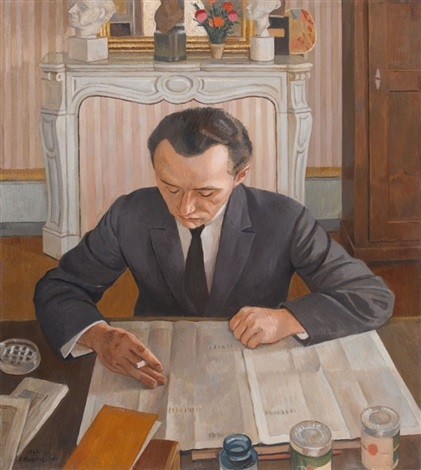
KULTUR / UMWELT / ZEITGEIST / SONSTIGES
Kunstinstallation
Abbau des Bus-Monuments kostet Dresden fünfstellige Summe
https://jungefreiheit.de/politik/deutschland/2017/abbau-d...
Verein Gedächtnisstätte
Star-Architekt Albert Speer junior ist tot
https://www.welt.de/kultur/article168712060/Albert-Speer-...
Zeitreise
Diese Tram nimmt Sie mit in das Köln von 1900
https://www.welt.de/wirtschaft/article169205978/Diese-Tra...
Journalisten in Deutschland
Blinde Scheinwerfer
von Thorsten Hinz
https://jungefreiheit.de/kultur/2017/blinde-scheinwerfer/
ARD-Redakteure verdienen bis zu 9.900 Euro
https://jungefreiheit.de/politik/deutschland/2017/ard-red...
„Im Netz der Lügen“
TV-Journalist Imad Karim erhebt schwere Vorwürfe gegen ARD
https://jungefreiheit.de/kultur/medien/2017/tv-journalist...
Twitter-Chef: Wegen NetzDG könnten Meinungen verstummen
https://jungefreiheit.de/kultur/medien/2017/twitter-chef-...
Quasistaaten Google und Amazon
https://sezession.de/57385/quasistaaten-google-und-amazon
Thor v. Waldstein – Macht und Öffentlichkeit
https://www.youtube.com/watch?time_continue=2&v=jvHIt...
Friedrichshain-Kreuzberg
Berliner Bezirk startet Kampagne gegen „sexistische Werbung“
https://jungefreiheit.de/politik/deutschland/2017/berline...
(Zur Kritik des Feminismus)
Der kleine Unterschied
von Patrick Behringer -- Mit großem Interesse nahm ich vor wenigen Tagen zu Kenntnis, daß sich ein neues Projekt junger identitärer Studentinnen entwickelt, das sich aus rechter Perspektive Geschlechterfragen annimmt.
https://sezession.de/57386/der-kleine-unterschied
Bundesgerichtshof
Frau-zu-Mann-Transsexueller ist rechtlich Mutter seines Kindes
http://www.tagesspiegel.de/politik/bundesgerichtshof-frau...
(Zu Vergewaltigungen in Südafrika)
Sonntagsheld (29) – Mama Africa
https://sezession.de/57383/sonntagsheld-(29)-%E2%80%93%C2...
„Diversity“
Britischer „Rotes Kreuz“-Chef für mehr Vielfalt
https://jungefreiheit.de/politik/ausland/2017/britischer-...
Regenbogen-Aufkleber
„toom“-Baumärkte werben für Vielfalt
https://jungefreiheit.de/politik/deutschland/2017/toom-ba...
Lübeck
Politische Korrektheit
Ein Stück Othellotorte, bitte!
https://jungefreiheit.de/kultur/gesellschaft/2017/ein-stu...
Anstiftung zu identitärem Wirtschaften
https://sezession.de/57375/anstiftung-zu-identitaerem-wir...
Discounter unterwirft sich
Lidl entfernt Kruzifixe auf Verpackungsbildern
http://www.pi-news.net/lidl-entfernt-kruzifixe-auf-verpac...
Das »andere« Amerika
https://sezession.de/57380/das-%C2%BBandere%C2%AB-amerika
(Zur Medienbeeinflussung der Deutschen…)
Eine Antwort auf Thor v. Waldstein
von Michael Wiesberg
https://sezession.de/57400/eine-antwort-auf-thor-v.-walds...
Geschichtspolitik
Die Verkürzung der deutschen Geschichte
von Thorsten Hinz
https://jungefreiheit.de/debatte/kommentar/2017/die-verku...
Zorn und Terror
Dem indisch-britischen Schriftsteller Pankaj Mishra wurde 2014 der Leipziger Buchpreis zur Europäischen Verständigung verliehen, und er wird derzeit durch die Medien gereicht – das läßt Skepsis aufkommen.
https://sezession.de/57381/zorn-und-terror
(Das perfekte Abhör-Instrument)
"Alexa, wen soll ich wählen?"
Amazons Sprachassistentin hilft jetzt bei der Wahlentscheidung
http://www.horizont.net/tech/nachrichten/Alexa-wen-soll-i...
(Zur Erinnerung…)
Haushaltshelfer oder Superwanze? Das kann Amazon Echo
Amazon Echo soll auch in Deutschland Schaltzentrale fürs Zuhause werden. Wir zeigen, was der smarte Lautsprecher kann – und was nicht.
https://www.morgenpost.de/web-wissen/web-technik/article2...
Ikonisches Tier-Selfie
Finale im Affentheater
Ein Affe macht ein Selfie: Wer hat die Rechte an dem Bild? Der Mann, dem die Kamera gehört - oder der Affe? Der jahrelange Rechtsstreit ist nun entschieden, aber der Fotograf hat keine Freude mehr an seinem Beruf.
http://www.spiegel.de/netzwelt/web/affen-selfie-von-narut...
Kein Mist! Diese Möbel bestehen aus Kuhfladen!
https://www.stylebook.de/interior/wie-man-aus-kuhmist-moe...
Falsche Notrufe
Wenn Rettungskräfte vergebens ausrücken
http://www.n-tv.de/panorama/Wenn-Rettungskraefte-vergeben...
Goetheplakette
Frankfurt will Rapper Pelham auszeichnen
http://www.hessenschau.de/kultur/frankfurt-will-rapper-mo...
Melanie Halle - AfD-Song (Jennifer Rostock Konter)
https://www.youtube.com/watch?v=rHaBDpuzspw
Archäologie
Sensationeller Fund: Perlen und Gold in Haithabu
https://www.abendblatt.de/region/schleswig-holstein/artic...
Dokumentation 200 Jahre Preußen am Rhein
https://www.youtube.com/watch?v=r-kbGluUQc0
(Buch: Andreas Vonderach: Gab es Germanen?)
Herkunft, unverhandelbar
Bekanntlich hat die Desintegrationsbeauftragte der Bundesregierung, Aydan Özoğuz, im Mai dieses Jahres "festgestellt", »eine spezifisch deutsche Kultur [sei], jenseits der Sprache, schlicht nicht identifizierbar«. Soso.
https://sezession.de/57384/herkunft,-unverhandelbar
Carl Aderhold
Die Roten
https://antaios.de/buecher-anderer-verlage/aus-dem-aktuel...
18:51 Publié dans Actualité, Affaires européennes | Lien permanent | Commentaires (0) | Tags : journaux, medias, presse, allemagne, europe, affaires européennes, actualité |  |
|  del.icio.us |
del.icio.us |  |
|  Digg |
Digg | ![]() Facebook
Facebook
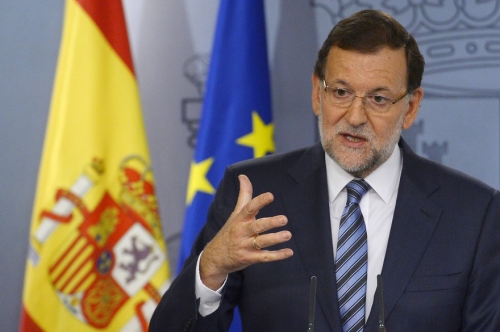
La Catalogne n’aura été indépendante que six secondes, histoire de ne pas perdre la face. Son président séparatiste a trouvé la faille : une indépendance politique unilatéralement proclamée mais pas d’indépendance juridique et ce, après un week-end où des centaines de milliers de Catalans et des millions d’Espagnols se sont levés et lui ont demandé de renoncer au nom d’une Hispanité enfin retrouvée mais pour combien de temps ?
‘‘Prou! Recuperem el seny” (“Assez! Retrouvons la raison”) avaient clamé dimanche les opposants catalans à la sécession pour défendre l’unité de la grande Espagne à l’issue d’une semaine d’émotion et d’angoisse dans tout le pays mais pas seulement, pour aussi toute l’Amérique latine, les Philippines, tout ce qui compte sur terre de restes du grand Empire. Le réveil dominical de “la majorité silencieuse” a bien été un tournant dans la crise.
Mariano Rajoy n’utilisera pas l’article 155 de la Constitution et encore moins l’article 156 (l’état de siège) permettant de retirer réellement et définitivement son autonomie à la région. On négociera encore l’unité de l’Espagne. Puigdemont a finalement cédé parce que le monde économique s’écartait des indépendantistes, plusieurs entreprises ayant décidé de déménager dès lundi leur siège social de la région qui représente 19% du PIB du pays espagnol, pour 16% de la population. Deux grandes banques, CaixaBank et Banco de Sabadell, ont initié ce mouvement suivi de prés par un des principaux groupes locaux du bâtiment.
Les événements allaient trop vite car le capitalisme libéral a pourtant besoin d’États-Nation affaiblis par le séparatisme. L’Europe des marchands et des juges, de la future démocratie procédurale et de la dictature administrative n’est pas encore tout à fait achevée. De fait, pour faire prospérer le business sans entrave, il faut absolument liquider toutes les communautés traditionnelles.
Depuis des années, la remise en cause de l’unité espagnole n’était pas seulement mue par le séparatisme politique mais elle touchait toute l’éducation, le folklore avec ses coutumes, ses danses, ses costumes et surtout sa corrida. Comme en France, il s’agissait de réécrire l’Histoire, de gommer l’esprit chevaleresque de la Phalange de José Antonio, d’oublier l’héroïsme de la Légion espagnole et plus que tout la ferveur doloriste mais ô combien sublime du catholicisme espagnol réduit, il y a déjà quelques années à des sauteries papales sur fond de house lors des Journées de la Jeunesse.
En France, on a cassé toute velléité de nationalisme par l’antiracisme idéologique et la conversion au nouveau monothéisme, ce que des intellectuels à la Edgar Morin déclarent depuis toujours alors qu’en Espagne ce fut par le séparatisme régional et autonomiste (comme en Belgique, en Italie, en Grande-Bretagne). Ainsi, l’Europe unie pour le commerce ne ressemblera pas à des Etats-Unis d’Europe puisqu’elle ne doit absolument pas être une puissance. Ce sera un espace neutre, dépolitisé, spectaculaire, marchand, touristique ou archéologique, l’espace désunie des tribus .
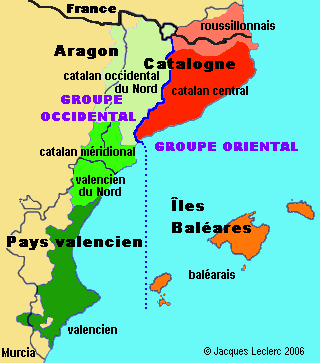
Lors d’un débat dit « d’urgence », après quatre jours de crise catalane, le vice président de l’Union européenne, Frans Timmermans avait appelé au dialogue. Un porte parole de la Commission avait répété le 6 octobre : « Il s’agit d’une affaire intérieure à l’Espagne ». Il est pourtant bien clair que ce souhait affiché de non ingérence et de dialogue de l’UE n’était rien d’autre qu’un coup de pouce indirect donné aux Catalans tout comme l’absence de positionnement scandaleux de la Conférence épiscopale espagnole à laquelle, en plus, on n’avait rien demandé.
Pour l’Espagne, la déclaration catalane n’est en réalité ni une victoire, ni une défaite mais la poursuite d’une faiblesse mortelle et suicidaire que les ennemis de l’hispanité continueront habilement d’exploiter. Mais un État purement constitutionnel, celui de 1978, peut-il encore continuer d’exister avec autant d’incertitude, de subterfuges, de négociations biaisées, de reculades permanentes ? La déclaration surréaliste mais fanatique d’une indépendance sans indépendance, d’une république en pleine monarchie, d’un « je m’en vais mais j’y reste ! » ( Me voy, pero quizá me quedo) ne durera pas longtemps mais encore faut-il que résonne de nouveau le poétique mot d’Espagne. Or comme pour la douce France, il s’agit partout de déclarer et de faire penser que l’Espagne ou la France n’existent pas, n’existent plus.
Plus rien dans le vocabulaire et l’histoire officielle, une « histoire mondiale de la France » écrivent nos nouveaux historiens, ne doit en effet rappeler la France ou l’Espagne. On nous demande peut-être aujourd’hui de défendre les Espagnols mais en réalité, on ne nous demande pas de défendre l’Espagne, si ce n’est un ordre juridique abstrait et sacro-saint, celui du “Grundgesetz” de la loi fondamentale à l’allemande c’est-à-dire un vulgaire papier écrit qui confond Souveraineté populaire et Constitutionalité. On a un peu honte de rappeler l’évidence mais l’Espagne n’est pas la Constitution. Ce n’est pas non plus la démocratie. Osons d’ailleurs ce parallèle européo-hispanique. L’Européen n’est pas une constitution, il est une race et un esprit.
C’est pourquoi d’ailleurs l’Europe continue et continuera selon le sacrifice de Dominique Venner d’exister malgré la paperasse de Bruxelles ou les tomes de lois indigestes de ses juristes serviles comme l’Espagne existe et existera toujours par delà ses constitutions.
Un grand, un immense empire, auprès duquel l’Union Européenne européenne voire l’ONU d’aujourd’hui ne sont qu’une sordide caricature. L’Espagne sans Constitution, c’est en effet l’Espagne de Charles Quint qui maintenait unifiée des territoires aussi divers que le Pérou, le duché de Milan, le royaume de Sicile, le comté de Flandres, la Colombie et sa propre péninsule, avec son ensemble pourtant bigarré de petits seigneurs, de privilèges, de communes libres, d’usages et de coutumes de toute sorte. Or, cet énorme territoire se gouvernait avec une armée minuscule et avec une bureaucratie qui à l’époque n’atteignait pas même la moitié du nombre de postes actuels d’un gouvernement autonome. Un ordre du palais Alcázar prenait alors des mois à parvenir à Mexico ou à Lima mais il était exécuté à la lettre.
Nonobstant, pour les néo-historiens “mécontemporains“, ces Espagnols n’étaient que des inquisiteurs ou des prêtres décadents qui cependant, avec seulement le Trône et l’Autel, maintenaient mieux l’unité de leur royaume que l’Union ou la monarchie des autonomies n’en est aujourd’hui capable .
Nonobstant, bien qu’il est été fomenté par une réécriture de l’Histoire tendancieuse et manipulée, nous ne pouvons nier le sentiment national qui s’est formé en Catalogne et qui est authentique. Il y a là toujours un esprit, quelque chose de vivant qui rugit dans les entrailles d’un nouveau patriotisme et qui feront que oui, les catalans ne seront sans doute plus jamais espagnols, à moins d’un vrai miracle mais il faut aussi comprendre que si cela est arrivé, c’est que durant quatre décennies, on a fait en sorte là-bas que le nom de l’Espagne lui-même soit tabou.
10:02 Publié dans Actualité, Affaires européennes, Politique | Lien permanent | Commentaires (0) | Tags : politique, actualité, espagne, catalogne, politique internationale, europe, affaires européennes |  |
|  del.icio.us |
del.icio.us |  |
|  Digg |
Digg | ![]() Facebook
Facebook

par Nicolas Bonnal
Ex: http://www.dedefensa.org
« …Il doit aussi venir un temps où les nations auront plutôt des gazettes que des histoires… »
Henri de Man a pertinemment souligné l’importance du mathématicien, épistémologue et philosophe français Augustin Cournot, un génie méconnu qui a inventé au milieu du XIXème siècle la notion de posthistoire. Je suis allé voir ses œuvres sur archive.org et y ai trouvé quelques remarques écrites vers 1850. Cournot a été un grand mathématicien, un historien des sciences, un économiste chevronné, un philosophe, mais un modeste inspecteur de l’instruction publique ! Il fait penser à Kojève qui a fini fonctionnaire européen à Bruxelles…
Cournot incarne parfaitement ce génie médiocre, petit-bourgeois à la française, qui depuis Descartes ou Pascal jusqu’aux intellectuels du siècle écoulé, rêve de sa petite place dans la fonction publique. On peut dire aussi qu’il liquide à la française toute notion d’héroïsme ou de grandeur ! Hyppolite Taine a brillamment décrit l’avènement du bourgeois français. Ce bourgeois aura bien analysé un déclin dont il est la marque la plus pitoyable. Tiens, un peu de Taine :
« Le bourgeois est un être de formation récente, inconnu à l'antiquité, produit des grandes monarchies bien administrées, et, parmi toutes les espèces d'hommes que la société façonne, la moins capable d'exciter quelque intérêt. Car il est exclu de toutes les idées et de toutes les passions qui sont grandes, en France du moins où il a fleuri mieux qu'ailleurs. Le gouvernement l'a déchargé des affaires politiques, et le clergé des affaires religieuses. La ville capitale a pris pour elle la pensée, et les gens de cour l'élégance. L'administration, par sa régularité, lui épargne les aiguillons du danger et du besoin. Il vivote ainsi, rapetissé et tranquille. A côté de lui un cordonnier d'Athènes qui jugeait, votait, allait à la guerre, et pour tous meubles avait un lit et deux cruches de terre, était un noble. »
Pour Athènes, cela dépend de l’époque. On recommandera au lecteur le texte de Démosthène sur la réforme des institutions publiques (Περὶ Συντάξεως). On y apprend qu’une loi punissait de mort ceux qui osaient proposer de rendre au service de la guerre les fonds usurpés par le théâtre…
La science française –penser surtout au grand et petit Poincaré – n’est pas seulement rationnelle : elle est raisonnable. Elle reflète d’ailleurs le déclin démographique et le vieillissement de notre population à cette époque, le dix-neuvième donc, qui contraste avec le dynamisme européen. Cela ne retire rien bien sûr à la puissance conceptuelle de nos savants et de nos mathématiciens, ni à leur lucidité.
Cournot s’intéresse à tous les sujets avec la méthode et l’étroitesse d’un penseur de son siècle. C’est qu’il évolue dans le monde petit-bourgeois de Madame Bovary. Il parle surtout de la révolution terminée, 120 ans avant François Furet dans un très bon livre inspiré par Tocqueville et Cochin :
« Alors l'histoire de la Révolution française sera close, son mouvement initial sera épuisé, aussi bien en ce qui concerne à l'intérieur la rénovation du régime civil, qu'en ce qui regarde les entreprises extérieures et l'action sur le système européen…. Dès les premières années du siècle on pouvait dire avec fondement que la révolution était finie, en ce sens que tout un ensemble d'institutions ecclésiastiques et civiles, que l'on appelle chez nous l'ancien régime, avait disparu pour ne plus reparaître… »
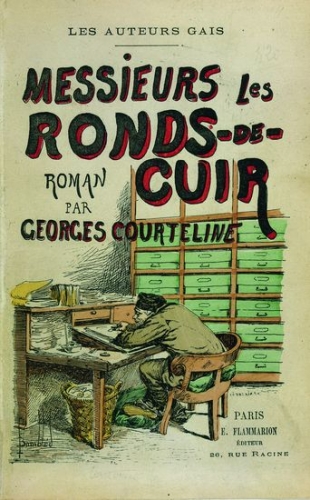
Le renversement de la féodalité a été finalement la grande affaire de cette Fin de l’Histoire, ce que confirment aussi bien les autres grands esprits français. Après la Révolution apparaît le rond-de-cuir (Cochin) ou bien sûr le bureaucrate soviétique, qui ne demandent qu’à conserver les acquis de leur pitance révolutionnaire. Celle-ci devient d’ailleurs de plus en plus un spectacle : on s’habille à la romaine, comme disait Debord du temps de Robespierre, et on défile au pays de Staline.
Cournot voir poindre aussi une humanité plus tiède, une humanité ni, ni, comme diraient Barthes ou Mitterrand. Une humanité vaguement religieuse, tempérée par la médecine et les machines :
« Après toutes les explications dans lesquelles nous sommes entrés jusqu'ici, est-il besoin d'ajouter qu'autant nous croyons impossible d'extirper du cœur humain le sentiment religieux et le sentiment de la liberté, autant nous sommes peu disposés à admettre que les futures sociétés humaines reconnaîtront pour guides les prêtres d'une religion ou les apôtres de la liberté? »
Ni prêtres ni missionnaires libertaires… Notre matheux voit bien plus loin que tous les Vallès et Bakounine de son temps ultérieur (le seul que je vois se nicher à sa hauteur est cet australien nommé Pearson – un littéraire cette fois ! - qui décrira toute notre entropie dans son National life and character [sur archive.org])
On devrait se rassurer, puisque Cournot voit arriver une modération universelle avec un échec des idéologies, comme on disait encore. Avant Nietzsche il voit la modération arriver, modération qui on le sait sera un temps rejetée par les Allemands, et avec quelle imprudence ; mais d’un point de vue historique, Cournot a plus d’avance que Nietzsche, et il fonde ses considérations sur son observation mathématique et quasi-astronomique de l’Histoire :
« Tous les systèmes se réprimeront ainsi à la longue, quoique non sans de déplorables dommages, dans ce qu'ils ont de faux ou d'excessif. »
Lisez ces lignes superbes de lucidité et de froideur :
« Si rien n'arrête la civilisation générale dans sa marche progressive, il doit aussi venir un temps où les nations auront plutôt des gazettes que des histoires ; où le monde civilisé sera pour ainsi dire sorti de la phase historique ; où, à moins de revenir sans cesse sur un passé lointain, il n'y aura plus de matière à mettre en œuvre par des Hume et des Macaulay, non plus que par des Tite-Live ou des Tacite. »
A la place de Tacite on a Françoise Giroud.
Cournot voit un avènement de la fin de l’histoire qui est plutôt une mise en marge de l’Histoire, comme une porte qui sort de ses gonds, une bicyclette qui sort de la piste et dont la roue semble tourner, mais pour rien. Debord souligne « l’incessant passage circulaire de l’information, revenant à tout instant sur une liste très succincte des mêmes vétilles, annoncées passionnément comme d’importantes nouvelles. »
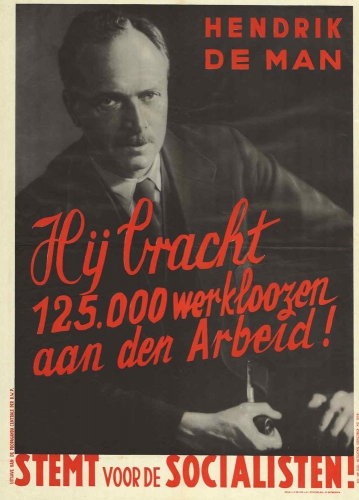
Henri de Man écrira :
« L'histoire est un produit de l'esprit humain élaboré pour que les événements puissent être mesurés à l'échelle des buts et des forces humaines. À des événements comme ceux que nous vivons aujourd'hui il semble que cela ne s'applique plus ; et ce sentiment est à la base de l'impression que nous avons que « les temps sont révolus », que nous sommes entrés dans une époque en marge de l'histoire. Ce monde en marge de l'histoire qu'un instant Hamlet a entrevu dans le miroir de son âme égarée : un monde disloqué. »
Debord a consacré deux excellentes pages au baroque post-ontologique.
En prétendant progresser alors qu’il ne fait que du surplace, le monde décrit par Tocqueville, Cournot, De Man, vingt autres, ne fait que nous tromper. Seul un pessimisme radical mais révolutionnaire pourrait nous en préserver. L’optimisme moderne reste celui de la dévastation par la stupidité décrite par Cipolla, la dette et les attentats.
Kojève disait que pour supporter la fin de l’histoire il fallait apprendre le grec (lisez donc la syntaxe de Démosthène…). Je dirais plus sobrement qu’il faut surtout y apprendre à supporter sa journée et à la réussir. L’homme-masse allume sa télé, va au concert, à Las Vegas, au stade parce qu’il ne veut que de mimétisme et d’aliénation ; l’homme de bien au sens d’honnête homme ou d’homme de bien du Yi King, apprend à jardiner ou à jouer du violon ; le reste c’est de l’actualité.
Antoine-Augustin Cournot, considérations sur la marche des idées (archive.org)
Henri de Man : considérations sur le déclin…
Debord - Commentaires
Taine – La Fontaine
00:05 Publié dans Philosophie, Théorie politique | Lien permanent | Commentaires (0) | Tags : antoine cournot, nicolas bonnal, philosophie, philosophie politique, théorie politique, sciences politiques, politologie |  |
|  del.icio.us |
del.icio.us |  |
|  Digg |
Digg | ![]() Facebook
Facebook

par Nicolas Bonnal
Ex: http://www.dedefensa.org
On a parlé ici de la crise du tourisme en Amérique. Parlons de la crise de la civilisation en Amérique, cette nation indispensable qui crée un monde zombi à son image.
Il reste un cinéaste américain, Alexander Payne, qui nous conte à travers des films comme les Descendants, Schmidt ou Nebraska le désastre de la civilisation américaine. La matrice américaine entre les mains des oligarques a tué la civilisation américaine et l’a dévitalisée. Michael Snyder sur son blog ne cesse de nous donner semaine après semaine des nouvelles de cet effondrement physique de l’Amérique, cette Amérique représentée par les jeunes filles odieuses et monstrueuses comme la grosse Kardashian ou l’Ivanka Trump-Kushner.
Le néant US accompagne bien sûr une extension du domaine de la lutte, pour reprendre l’expression de Houellebecq. Car la matrice fait vivre de plus en plus mal les gens à l’intérieur, et elle fait souffrir ou extermine de plus en plus de peuples à l’extérieur, du monde musulman aux banlieues industrielles chinoises et bengalis (cinq euros par mois pour fabriquer des chemises vendues soixante chez Gap) en passant par la banlieue française. Comme dans un livre de Jack London que j’ai analysé récemment,l’oligarchie devient de plus en plus fasciste et dangereuse, car elle carbure moins à l’impérial qu’au prétexte humanitaire : réparation du monde (tikkun), lutte contre le nationalisme, le sous-développement, le terrorisme (sauf Daesh), l’islamisme, etc.
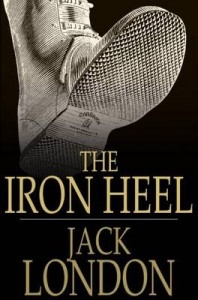 Jack London écrit dans le talon de fer : « La force motrice des oligarques est leur conviction de bien faire. » Les milliardaires éduquent ensuite leurs enfants et les rendent tout prêts à amender l’humanité, et à l’exterminer comme populiste quand elle ne veut pas être amendée !
Jack London écrit dans le talon de fer : « La force motrice des oligarques est leur conviction de bien faire. » Les milliardaires éduquent ensuite leurs enfants et les rendent tout prêts à amender l’humanité, et à l’exterminer comme populiste quand elle ne veut pas être amendée !
Et s’il y a un cinéaste, il y a aussi un grand analyste du désastre US (qui est devenu le nôtre lors de notre passage à la globalisation), et qui se nomme Howard Kunstler. Je donne ici deux extraits de son dernier texte, qui résume son œuvre maîtresse, The Long Emergency (merci à Hervé pour la traduction).
Froidement Kunstler présente ainsi son pays :
« Je vis dans un coin de cette Amérique périphérique, où vous pouvez facilement lire les conditions de vie sur les murs : les rues principales vides, surtout quand la nuit tombe, les maisons sans soins et se dégradant d’année en année, les fermes abandonnées avec des granges qui tombent en ruine, les outils agricoles rouillant sous la pluie et les pâturages couverts de sumacs, ces chaînes nationales de magasins parasites, poussant comme des tumeurs aux abords de chaque ville. »
Ce pourrissement culturel créé par l’oligarchie avide et folle, les Wal-Mart, la multiplication des « détritus urbains » (Lewis Mumford) et la crétinisation médiatique crée une humanité à la hauteur :
« Vous pouvez le lire dans le corps des gens dans ces nouveaux centre-ville, c’est-à-dire le supermarché : des personnes prématurément vieilles, engraissées et rendues malades par la consommation de mauvaises nourritures, faites pour avoir l’air et avoir un goût irrésistible, aux pauvres qui s’enfoncent dans le désespoir, une consolation mortelle pour des vies remplies par des heures vides, occupées à regarder la trash-télé, des jeux informatiques addictifs et leurs propres mélodrames familiers conçus pour donner un sens narratif à des vies qui, autrement, ne comportent aucun événement ou effort. »
Tout programme télé me semble à moi aujourd’hui totalement insupportable. Il ne faut plus être tour à fait humain pour se gaver de télé. Evidemment cela rend ensuite la démarche plus dure à l’antisystème : comment peut-il expliquer le monde à un zombi nourri de l’arme de destruction massive qu’est la télévision ? Et l’on rencontre ce problème tous les jours. On est dans le classique de Don Siegel.
Une illustration donnée par Snyder a magnifiquement illustré l’involution américaine des années Eisenhower aux années Obama. On peut en dire autant du cinéma. Godard disait qu’il ne critiquait pas le cinéma américain contemporain parce qu’il était anti-américain, mais parce que ce cinéma est devenu mauvais. Où sont passés les Walsh, Ford et Minnelli d’antan ?
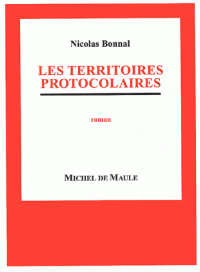 Il y a dix-sept ans j’avais publié un roman d’anticipation sur ce thème, les territoires protocolaires. C’est que la construction européenne avait facilité l’émergence d’une Europe déracinée et défigurée, présente déjà en France à l’époque de Pompidou : les grandes surfaces, les autoroutes, les zones de luxe, le pourrissement culturel par la télévision. Cet anéantissement de toute civilisation présent aussi au Maroc (agglomérations interminables autour de Tanger, aéroports, centres commerciaux, villas et immigration de luxe – gourbis et HLM pour les autochtones) se répand dans le monde comme un cancer. L’insensibilité des populations toujours plus hébétées (Baudrillard) par les médias accompagne ce phénomène. On cherche à en savoir plus sur le simulacre Kardashian (soixante millions de tweeter ; et je rappelle : un million de commentaires par chanson Gaga) que sur la prochaine guerre ou l’état de son âme.
Il y a dix-sept ans j’avais publié un roman d’anticipation sur ce thème, les territoires protocolaires. C’est que la construction européenne avait facilité l’émergence d’une Europe déracinée et défigurée, présente déjà en France à l’époque de Pompidou : les grandes surfaces, les autoroutes, les zones de luxe, le pourrissement culturel par la télévision. Cet anéantissement de toute civilisation présent aussi au Maroc (agglomérations interminables autour de Tanger, aéroports, centres commerciaux, villas et immigration de luxe – gourbis et HLM pour les autochtones) se répand dans le monde comme un cancer. L’insensibilité des populations toujours plus hébétées (Baudrillard) par les médias accompagne ce phénomène. On cherche à en savoir plus sur le simulacre Kardashian (soixante millions de tweeter ; et je rappelle : un million de commentaires par chanson Gaga) que sur la prochaine guerre ou l’état de son âme.
Lorsque j’avais découvert et commenté – en 2012 – Howard Kunstler pour la presse russe, il était encore à la mode en Amérique, et prévoyait comme toujours une catastrophe énergétique (prévoir une catastrophe financière ou autre est devenu une usine à gaz), mais surtout il décrivait cette apocalyptique réalité – celle que Kunstler appelle le sprawling, la prolifération de cette géographie du nulle part qui s’étend partout et pourrit tout l’espace mondial (repensons à Guénon).
L’impérialisme américain devenu risible et hors de contrôle, mais impuissant aussi, ne doit pas nous faire oublier la vraie menace, celle du modèle économique et urbain. C’est par là que l’on devrait commencer les prochains combats qui nous guettent. Au lieu de prévoir des catastrophes imprévisibles, voir enfin ce désastre américain qui nous entoure et nous consume.
Le blues national – Le Saker Francophone
Nicolas Bonnal – les territoires protocolaires ; les grands auteurs et la théorie… (Kindle)
Kunstler, James Howard, The Geography of Nowhere (Simon and Schuster, 1994). Kunstler, James Howard, The Long Emergency (Atlantic Monthly Press, 2005).
Jack London – le talon de fer (ebooksgratuits.com)
18:24 Publié dans Actualité | Lien permanent | Commentaires (0) | Tags : nicolas bonnal, états-unis, américanisme, actualité |  |
|  del.icio.us |
del.icio.us |  |
|  Digg |
Digg | ![]() Facebook
Facebook
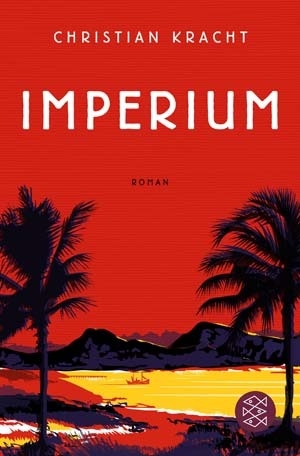
Imperium : roman de Christian Kracht
Par Robert Steuckers
Ecrivain suisse, journaliste en Allemagne, grand voyageur, en Asie surtout, Christian Kracht a aussi escaladé le Kilimandjaro. Imperium est son quatrième roman. Il a provoqué le scandale car il a heurté la sensibilité des bien-pensants. Certes, tous n’ont pas suivi les mots d’ordre des zélotes du « politiquement correct ». Loin s’en faut. Mais la rage d’un journaliste en particulier, un certain Georg Diez, a sorti du placard toute l’habituelle litanie de reproches : proximité avec la « nouvelle droite », satanisme, similitude avec Céline, racisme (évidemment !), hostilité à la démocratie, totalitarisme, antimodernisme, etc. Cette recension acerbe du Spiegel, ridicule dans ses exagérations, n’a pas empêché Kracht de recevoir un prix du canton de Berne et le Prix Wilhelm Raabe en 2012, immédiatement après la parution du roman.
L’intrigue se passe en Nouvelle-Guinée, ancienne colonie allemande d’avant le Traité de Versailles. Le héros August Engelhardt est un idéaliste, typiquement allemand. Il veut faire fortune en devenant planteur dans cette colonie lointaine. Il découvre une tribu indigène qui ne se nourrit que de noix de coco. Elle est pacifique. Elle correspond à ses idéaux : sur ce modèle exotique, Engelhardt veut fonder une nouvelle religion végétarienne et nudiste, jeter les bases d’un « nouveau Reich » écolo-végétarien qui doit évidemment inspirer le monde entier. En fin de compte, le projet vire à la catastrophe : les végétariens deviennent cannibales, les idéalistes deviennent antisémites, les ascètes se muent en scrofuleux.
Engelhardt, un assistant en pharmacie qui a réellement existé et n’est donc pas simplement une figure de fiction issue de l’imagination de Kracht, était l’un de ces innombrables Lebensreformer allemands (un « réformateur de la vie ») qui annonçaient, avant la première guerre mondiale, les idéaux qui seront ceux des hippies, cannabis en moins. Les Lebensreformer tentaient d’échapper au service militaire et estimaient que l’Allemagne de Guillaume II était trop technique, trop moderne et trop ennuyeuse. Dans la foulée de ce refus, très fréquent à la Belle Epoque, Engelhardt a réellement fondé un paganisme farfelu, le « cocovorisme », religion solaire et naturiste d’origine américaine, gérée par un « Ordre solaire » et par les principes d’un communisme primordial. Le soleil étant la source de toute vie, il convenait de ne pas se vêtir pour laisser entrer dans le corps et dans l’esprit l’énergie de l’astre. S’exposer nu aux rayons du soleil et consommer seulement des noix de coco permet d’atteindre le divin et d’accéder à l’immortalité (« Le cocovorisme nudiste est la volonté de Dieu. La pure diète de coco rend immortel et unit à Dieu » - « Le cocovore reçoit tout directement des mains de son Dieu, le Soleil au cœur bon »). Hélas, la noix de coco n’offre pas suffisamment de force au corps et Engelhardt, miné par la lèpre, périra misérablement sur l’île de Kabakon, en Nouvelle-Guinée en 1919. Engelhardt n’eut que quelques rares disciples, ce qui ne l’empêcha pas de rêver à l’instauration d’un « Empire international et tropical du fructivorisme » qui se serait étendu aux îles du Pacifique, à l’Asie du Sud-Est, à l’Amérique du Sud et à l’Afrique équatoriale.
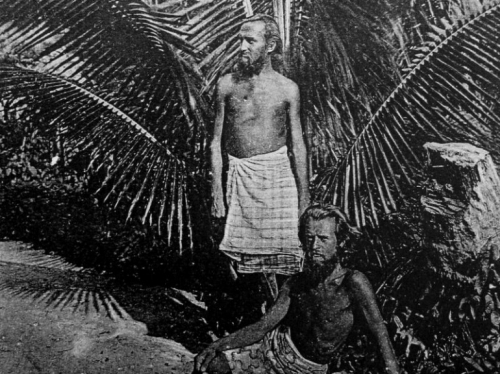
Engelhardt en Nouvelle-Guinée
L’Allemagne wilhelminienne était promise à un bel avenir. Le siècle aurait parfaitement pu devenir le « siècle allemand » si l’horrible tragédie de la première guerre mondiale n’avait pas freiné brutalement le cours naturel des choses. Kracht joue ici la carte de l’ironie. Imaginons une société pareille à celle rêvée par Engelhardt. Idyllique au début de sa fondation, elle voit se généraliser la suspicion, surtout à cause de l’« amour libre », puis se déclencher une cascade d’inimitiés féroces. L’Engelhardt du roman de Kracht passe de l’idéalisme à la brutalité sans fard des indigènes.
Le roman, d’une part, la vie réelle d’Engelhardt, d’autre part, appellent des réflexions politico-philosophiques précises :
L’utopie d’Engelhardt, telle que moquée dans le roman de Kracht, ne mène à rien, sinon aux quolibets de ceux qui ne l’ont jamais partagée ou au désintérêt des générations futures. Ce sont justement ces quolibets, mis en exergue, et ce désintérêt qui ont fâché les pourfendeurs bruyants du roman de Christian Kracht. L’utopie pré-hippy d’Engelhardt, avec son végétarisme irénique et son sexualisme nudiste, recèle des idéologèmes diffus de notre propre utopie dominante, de type libéral ou gauchiste. Moquer ces idéologèmes est donc un crime de lèse-correction-politique, que ne peut s’empêcher de fustiger un journaliste du Spiegel, chien de garde de l’utopie hippy-festiviste. Qu’on en juge par cette citation : « Engelhardt redevient enfant, Rex Solus. Végétatif et simplet, sans se souvenir de rien, sans perspective, il ne vit plus que dans le présent, reçoit de temps à autre une visite, parle en délirant, et les visiteurs s’en vont et rient de lui ; finalement, il devient l’attraction des voyageurs dans les Mers du Sud ; on vient le voir comme on vient regarder un animal sauvage au zoo ». Notre modernité tardive, ou postmodernité, n’est-elle pas ce pur présentisme, amnésique et sans projets, consécutifs d’un idéalisme déréalisant ?
Kracht entrecoupe la description du naufrage de l’utopie d’Engelhardt de visites d’auteurs, de peintres, d’artistes, emblématiques de l’époque, renouant en quelque sorte avec le style de La montagne magique de Thomas Mann.
Un roman donc qui a fait grincer des dents un chien de garde du système, particulièrement virulent, mais qui a finalement connu un succès retentissant. Comme quoi, ces chiens de garde, on les écoute de moins en moins… Aussi peu que les idéalistes hippies à la Engelhardt. Heureux augure ? Qui plus est, un roman dont on fera un film.
Et, au fond, en le lisant, je n’ai découvert aucune trace d’extrême-droitisme, de racisme, de satanisme. Rien que du cocovorisme.
Christian Kracht, Imperium, Fischer Taschenbuch, n°18.535, Frankfurt am Main, 2015.
17:47 Publié dans Littérature, Livre, Livre | Lien permanent | Commentaires (0) | Tags : littérature, littérature allemande, lettres, lettres allemandes, christian kracht, livre, auguste engelhardt, lebensreformer |  |
|  del.icio.us |
del.icio.us |  |
|  Digg |
Digg | ![]() Facebook
Facebook

Was steckt im innersten Kern all der Fehlentwicklungen der westlichen Welt der letzten Jahrzehnte, die unsere gesamte Existenz, die das Überleben unserer einzigartigen Kultur, all dessen, was uns lieb und teuer ist, massivst bedrohen? Es ist der Verlust an Realität. Wie konnte es dazu kommen und wie kann dieses Infantilitätssyndrom geheilt werden?
„Die größte Gefahr in der Moderne geht nicht von der Anziehungskraft nationalistischer und rassistischer Ideologien aus, sondern von dem Verlust an Wirklichkeit“, formulierte die große philosophisch sehr gebildete Politologin Hannah Arendt bereits vor mehr als einem halben Jahrhundert. Und an anderer Stelle:
„Der wohl hervorstechendste und auch erschreckendste Aspekt der deutschen Realitätsflucht liegt in der Haltung, mit Tatsachen so umzugehen, als handele es sich um bloße Meinungen.“
Und in der Tat ist genau dies eingetreten, der Verlust an Wirklichkeit, und hat unsere Gesellschaft im Innersten marode und schwach gemacht. Was kann dem entgegengesetzt werden? Wie können wir von Grund auf gesunden? Meine These: nur durch die Rückgewinnung der Realität.
Dazu aber muss unser Weltbild von Grund auf, im innersten Kern reformiert, modifiziert, neu strukturiert werden, was kein leichtes Unterfangen darstellt. Denn hier geht es ans Eingemachte. Der moderne metaphysische Realist glaubt, a) dass es Gegenstände, Systeme, Zustände und Ereignisse in der Welt gibt, die bestimmte Strukturen und Relationen zueinander aufweisen. Er glaubt, dass es eine Außenwelt außerhalb seines Bewusstseins tatsächlich gibt, dass dies kein reines Konstrukt seines Geistes ist. Er glaubt, dass sich nicht alles nur in seinem Bewusstsein abspielt (Außenweltforderung).
Ich glaube also, dass es Sie, die Sie diesen Text jetzt gerade lesen, wirklich gibt und Sie nicht nur in meinem Geist vorkommen, dass Sie nicht ein Produkt meiner Phantasie sind. Ich glaube also an den Primat der Wirklichkeit vor meinem Bewusstsein, welches sich in der Welt befindet, und nicht, dass sich die Welt in meinem Kopf, genauer: in meinem Geist befindet (egozentristische Position).
Der moderne metaphysische Realist glaubt ferner, b) dass diese Außenwelt unabhängig davon existiert, ob Menschen oder andere erkenntnisfähige Wesen existieren, unabhängig auch davon, wie diese die Welt beschreiben, was sie für wahr halten und aus welchen Gründen sie dies tun. Er glaubt also an die Autonomie der Wirklichkeit (Autonomieforderung). Selbst wenn wir alle aussterben würden, so gäbe es also noch immer die Erde, Bäume, Sand, Wasser, andere Planeten, Sterne, Galaxien, Gravitation und Gravitationswellen, Schwarze Löcher und Naturgesetze etc.
Der erkenntnistheoretische (epistemologische) Realist glaubt über die Außenweltforderung (a) und die Autonomieforderung (b) hinaus, dass die Wirklichkeit (Realität) für Menschen zu einem erheblichen Teil zuverlässig erkennbar ist (Zugänglichkeitsforderung). Er glaubt also an die nicht vollständige, aber grundsätzliche Zuverlässigkeit seines Erkenntnisapparates, denn wäre dieser völlig unzuverlässig, wäre die Außenwelt für unsere Geist nicht zugänglich, wäre das Überleben der menschlichen Spezies über Jahrmillionen eher unwahrscheinlich gewesen.
Darüber hinaus glaubt der epistemologische Realist, d) dass die bestätigten und weithin akzeptierten Behauptungen über die Wirklichkeit, z.B. dass die Erde keine Scheiben-, sondern eine Kugelform hat, dass es Gravitationswellen gibt etc., sich tatsächlich zum größten Teil auf die Elemente der Wirklichkeit beziehen, sie also eine wahre Beschreibung der Welt mit ihren Entitäten liefern (Referenzforderung), was natürlich die Irrtumsmöglichkeit in Einzelfällen nicht ausschließt. Aber jemand, der sich immer irrte, könnte ja seine Irrtümer gar nicht zuverlässig erkennen, da das Erkennen des Irrtums dann ja auch wieder ein Irrtum wäre.
Der Irrtum ist für den epistemologischen Realisten also nicht die Regel, sondern die Ausnahme. Unsere Vorstellungen und Ideen beziehen sich, wenn sich richtig, wenn sie wahr sind, auf die Wirklichkeit, haben Referenzobjekte in dieser zum Bezugspunkt und gehen im Gegensatz zu rein fiktiven Ideen, im Gegensatz zu Phantasmen nicht ins Leere.
Für den epistemologischen Realisten besteht mithin ein fundamentaler Unterschied zwischen echten Erkenntnissen (zu meinen, da steht ein rotes Auto und es steht dort wirklich ein solches), Illusionen (das Auto ist nicht rot, sondern grün) und Halluzinationen (da steht gar kein Auto).
Ich selbst habe immer und zu jedem Zeitpunkt meiner Existenz seit ich denken kann an alle vier Forderungen a bis d (Außenwelt-, Autonomie-, Zugänglichkeits- und Referenzforderung) geglaubt, bin mithin durch und durch 1. ein metaphysischer und 2. ein epistemologischer Realist (zugleich aber ein moralischer Idealist). All die Errungenschaften, die wir die letzten Jahrhunderte und Jahrtausende erzielten, basieren just auf diesem Weltbild, dem metaphysischen und espistemologischen Realismus. Wer dies nicht zu Grunde legt, kann ja keine Wirklichkeit erforschen, weil er glaubt, dass es sie gar nicht gibt respektive es sie zwar gibt, sie für uns aber nicht erkennbar wäre.
Und ich bin sicher, dass nach der Verirrung der letzten Jahrzehnte – Stichwort: Relativismus, Konstruktivismus, Subjektivismus, alles entwickelt von zweit- und drittklassigen Denkern und alles längst widerlegt von modernen erstklassigen Philosophen, – der abendländische Geist, so er überleben wird, sowohl zum metaphysischen als auch zum epistemologischen Realismus zurückkehren wird. Dann kann das Infantilitätssyndrom, welches die westliche Welt ergriffen, durchdrungen und vielfältig gelähmt hat, endlich wieder überwunden werden. Dies wird die Rückkehr der Realität sein.
Das widerspricht übrigens nicht dem Bedürfnis, ja der Sehnsucht nach Verzauberung der Welt und auch nicht dem moralischen Idealismus, sich eine bessere Welt zu wünschen und sich aktiv dafür einzusetzen. Der Infantile sucht diesen Zauber, dem auch ich nicht wenig zugeneigt bin, nur an der völlig falschen Stelle. Zauber und Realitätssinn schließen sich nicht aus. Sie können einander ergänzen. Das muss nicht unter Preisgabe der Realität erfolgen. Dann nämlich wird es gefährlich!
Die Welt zu einem besseren Ort machen zu wollen – nach meiner eigenen philosophischen Analyse, eine der drei Sinndimensionen des menschlichen Daseins – hat wiederum nur dann eine reale Chance auf Verwirklichung, wenn die Wirklichkeit in ihrem Sein zunächst in einem ersten Schritt ganz realistisch erkannt und beschrieben wird, um genau zu wissen, was der Status quo ist (Ausgangspunkt A), um dann ein Ideal zu entwerfen, ein Ziel (Z), welchem man sich sodann in vielen kleinen Schritten versuchen kann, immer mehr anzunähern.
Moralischer Idealismus, welcher sich nicht auf das Sein, sondern auf das Sein-sollen, nicht auf A, sondern auf Z bezieht und eines idealistischen Überschusses essentiell bedarf, und metaphysischer sowie epistemologischer Realismus, welche sich auf das Sein selbst, auf A sowie dessen Erkenntnis und Anerkennen bezieht, ergänzen sich also geradezu ideal, während metaphysischer Idealismus – es gibt gar keine Außenwelt außerhalb meines Geistes, es gibt gar keine Welt, sondern nur meine Ideen – und epistemologischer Idealismus – die Wirklichkeit ist ohnehin nicht erkennbar, also mache ich mir die Welt, wie sie mir gefällt – nicht selten in völlig realitätsferne Spinnereien ausarten. Solche Phantasiewelten für die wahre Welt zu halten, mag kleinen Kindern bis zu einem gewissen Alter angemessen sein, einem Erwachsenen aber ist dies unwürdig.
*
Spendenbitte: Wenn Sie diesen Blog (völlig werbefrei) und meine Arbeit wichtig finden und finanziell unterstützen möchten, dann können Sie entweder einmalig oder regelmäßig (Patenschaft) einen Betrag Ihrer Wahl auf das folgende Konto überweisen.
Jürgen Fritz, IBAN: DE44 5001 0060 0170 9226 04, BIC: PBNKDEFF, Verwendungszweck: Spende für Blog.
11:23 | Lien permanent | Commentaires (0) |  |
|  del.icio.us |
del.icio.us |  |
|  Digg |
Digg | ![]() Facebook
Facebook

Die Bundesregierung und die ihr nachgeordneten Behörden haben die verfassungsmäßige und verpflichtende Rechtsgebundenheit ihres Handelns verlassen. Jörg Gebauer zeigt auf, wie die Regierung sich ein neues Volk, mithin einen neuen Souverän schafft, was letztlich einem Staatsstreich gleichkommt.
Der „Wissenschaftliche Dienst“ des Deutschen Bundestages hat im September 2017 ein höchst brisantes Gutachten erstellt, in welchem die Ereignisse Anfang September 2015 und in den Folgemonaten rechtlich gewürdigt wurden. Demnach hätte der Bundesinnenminister einen Erlass machen müssen, in welchem auf die humanitäre Ausnahmesituation hingewiesen worden wäre.
Dies wurde von mehreren Juristen, insbesondere Staatsrechtskollegen – an erster Stelle zu nennen wäre hier Joachim Nikolaus Steinhöfel – bereits 2015 und dann nochmals 2016 so reklamiert. Auch Ex-Verfassungsrichter Udo Di Fabio hatte hiernach in seinem Gutachten gefragt. Dieser Erlass – und das ist nun neu – wurde niemals geschrieben. Dabei hätte es dazu eine generelle Ermächtigung sogar im Gesetz gegeben. Hier liegt der objektive Rechts- und Verfassungsbruch.
Die Regierung und die ihr nachgeordneten Bundesbehörden haben demnach die verfassungsmäßige und verpflichtende Rechtsgebundenheit ihres Handelns verlassen. Prof. Dr. Di Fabio hielt rechtlich für denkbar, dass ein solcher Erlass vorübergehend nicht gemacht wird. Er kalkulierte dafür eine maximale Frist von ca. einem halben Jahr. Diese Frist war also im März 2016 abgelaufen.
Der verfassungswidrigen Äußerung der Bundeskanzlerin Angela Merkels, das Volk seien alle diejenigen, die hier leben, ging ein anderer staatsfeindlicher Tenor bei der Verwechslung der rechtlichen Stellung von Ein- und Ausreise voraus: Die Kanzlerin ist offensichtlich gespalten. Als ehemaliger Teil des FDJ-Kader denkt sie anscheinend, man könne Menschen – wie in der DDR – an der Ausreise hindern. Dies dokumentiert sich etwa in ihrer völkerrechtswidrigen Erwartungshaltung gegenüber der Türkei, wenn sie meint, diese dürfe Emigranten auf dem türkischen Staatsgebiet festsetzen und an der Ausreise hindern (sogenannter Türkei-EU-Deal).
Und übrigens: Warum es in diesem Punkte (dem Gefangennehmen von echten oder unechten „Flüchtlingen“, genauer von Menschen, die aus der Türkei emigrieren wollen) keinerlei Kritik von links gibt, demaskiert das gesamte links-liberale, bunte Establishment. Wohlbemerkt: Selbstverständlich soll es eine Eindämmung der Migration geben. Dies jedoch nicht durch Einsperren, sondern durch Aussperren der illegalen Zuwanderung (Immigration). Worin besteht nun aber die Gespaltenheit Merkels?
Im Gegensatz zu ihrer inneren Regimetreue als ehemalige hohe FDJ-Funktionärin steht ein anderes Moment – sagen wir besser: ein kurzer Moment ihrer Biographie. Denn als ehemalige Aktivistin beim Demokratischen Aufbruch (1989) hingegen denkt sie, ein jeder Mensch dürfe schließlich reisen, wohin er wolle, zum Beispiel nach Deutschland.
Merkel selber ist diejenige, die zwischen den beiden Komplexen a) hier Lebende (Bevölkerung) versus Staatsvolk sowie b) Einreise (Immigration) versus Ausreise (Emigration) die Verbindung herstellt. Dies wird in folgendem Ausspruch Merkels überdeutlich:
„Die Zeit der deutschen Einheit, die Zeit, als der Eiserne Vorhang fiel, die Zeit, als Europa zusammen gewachsen ist, war eine wunderbare Zeit. Und deshalb gibt es auch keinerlei Rechtfertigung, dass sich kleine Gruppen aus unserer Gesellschaft anmaßen zu definieren, wer das Volk ist. Das Volk ist jeder, der in diesem Lande lebt.“
Sie kann in ihrer Gespaltenheit (oder ihrem staatsrechtlichen Dilettantismus?) nicht unterscheiden zwischen einer Ausreise von deutschen Staatsbürgern und einer Einreise von Ausländern. Das Eine (Ausreise) ist das Recht eines jeden Menschen. Nicht nur im Jahre 1989. Das Andere (Einreise) kann hingegen vom jeweiligen Zielland, in welches ein Migrant einzureisen wünscht, souverän reglementiert werden.
Staats- und völkerrechtlich dürfen Ausreisen von Menschen (Emigration) niemals verhindert werden. Hingegen können Staaten sehr wohl immer die Einreise von Ausländern (Immigration) bis hin zum rigiden Verbot regeln. Dies nicht klar zu erkennen und zu befolgen, war seit September 2015 der Grundkonstruktionsfehler der deutschen Politik.
Prof. Dr. Richard Schröder (Theologe und Philosoph) führt dazu aus: „Zwischen Auswanderung und Einwanderung besteht eine Asymmetrie, die namentlich aufgrund der deutsch-deutschen Erfahrungen leicht übersehen wird. Es ist ein Menschenrecht, dass jeder (straf- und schuldenfreie) Einwohner sein Heimatland verlassen darf. Es gibt aber kein Menschenrecht auf Einwanderung, schon gar nicht in das Land meiner Wahl. Das heißt, der Staat darf seinen Bürgern das Weggehen nicht prinzipiell verbieten. Aber kein Staat ist gezwungen, jeden, der kommen will, aufzunehmen …
Die Dinge liegen beim Staatsgebiet so ähnlich wie bei der Wohnung. Niemand darf mich in meiner Wohnung einschließen. Aber ohne meine Erlaubnis darf sich niemand in meiner Wohnung niederlassen, er darf sie nicht einmal ohne meine Zustimmung betreten – außer Polizei und Feuerwehr. Das wäre Hausfriedensbruch.
„Menschenrecht“ heißt hier: das Recht auszuwandern, ist sozusagen jedem Menschen angeboren. Das Recht einzuwandern, muß dagegen verliehen werden von den Vertretern der dortigen Staatsbürger. Wem es verliehen werden darf und wem es verliehen werden muss, ergibt sich aus dem nationalen Recht und aus dem Völkerrecht …
Dem allen widersprach nur scheinbar die Erfahrung im geteilten Deutschland. Alle DDR-Bürger konnten sich ohne staatliche Genehmigung in der Bundesrepublik dauerhaft niederlassen, wenn sie sie erreicht hatten. Sie konnten sogar in ausländischen bundesdeutschen Vertretungen einen bundesdeutschen Pass bekommen und mit dem als Bundesbürger ausreisen, wenn die betroffenen Staaten das erlaubten, was bei den sozialistischen Staaten außer Jugoslawien nicht der Fall war.
Der Grund war nicht ein besonders großzügiges Einwanderungsrecht, sondern die Definition der deutschen Staatsbürgerschaft im Grundgesetz (Art. 116). Demnach waren auch die DDR-Bürger Deutsche im Sinne des Grundgesetzes, wogegen die DDR Sturm gelaufen ist. DDR-Bürger waren für die Bundesrepublik keine Ausländer und deshalb auch keine Einwanderer, wenn sie kamen. Nachdem die innerdeutsche Grenze gefallen und vollkommen verschwunden ist, denken viele, so solle es auch weltweit sein. Sie übersehen: die Türen einer Gefängniszelle werden von außen verschlossen und hindern am Weggehen. Wohnungstüren dagegen werden von innen verschlossen und hindern am Eindringen. Entsprechend gibt es auch zwei Arten von Mauern und Zäunen.“
Soweit Prof. Dr. Richard Schröder.
Es findet eine eklatante Fehlinterpretation des internationalen Rechts und des europäischen Staatsrechts statt. Diese resultiert aus purer Unkenntnis der westlichen Staatsphilosophie. Warum muss diese überhaupt berücksichtigt werden, nicht nur als Einwand sondern auch und gerade als Chance?
Von Seiten der staatsphilosophischen natürlichen Freiheit her betrachtet, ist jedem Menschen nämlich jederzeit die (endgültige oder vorübergehende) Ausreise zu gestatten. Dies darf kein internationaler Vertrag und erst recht nicht die UNO oder die EU verhindern. Hingegen gilt weiterhin unangefochten: Von Seiten der staatsphilosophischen republikanischen Freiheit (Rousseau) hat jeder Staat – und das ist international unbestritten – das Recht, die Einreise fremder Staatsbürger zu verhindern.
Nach traditioneller, klassisch-liberaler Staatstheorie braucht er hierfür keinerlei Begründung. Genau dies konstituiert einen Staat ja gerade, über sein Hoheitsgebiet souverän zu entscheiden. Daran ändert weder ein Staatenbund (oder ein Vertrag zwischen Staaten) noch Schengen und Dublin irgendetwas. Über eine Einreise nichtdeutscher Staatsbürger nach Deutschland (Immigration) entscheidet rechtlich nur Deutschland.
Deswegen trägt Merkel mit ihren verfassungswidrigen Handlungen und Äußerungen auch die Verantwortung für Terrorakte gegen Deutsche, wenn diese von illegal anwesenden Ausländern durchgeführt wurden. Das Verwischen der Unterschiede zwischen Einreise und Ausreise verletzt zudem den demokratischen Grundkonsens, weil solch Regierungshandeln die Maxime der klassisch liberalen Staatstheorie ignoriert. Diese Maxime stehen vor der Klammer unserer Verfassung. Dies hat der ursprüngliche Verfassungsgesetzgeber, der Parlamentarische Rat, 1949 ausdrücklich in seinen Beratungen protokolliert sowie in der Präambel des Grundgesetzes manifestiert mit der Formulierung: „Im Bewußtsein seiner Verantwortung vor den Menschen“.
Dieser verkürzte Term sollte bewusst die Staatsphilosophie von Hobbes über Montesquieu, John Locke und Rousseau bis Hegel als grundlegend, notwendig (jedoch nicht hinreichend) und unabdingbar zur Basis des modernen Verfassungsstaates machen. All dies scheint die Bundesregierung auszublenden oder schlichtweg nicht zu wissen.
Diese Unkenntnis und Ignoranz ist die Hauptursache für die aktuelle Staatskrise und die „Herrschaft des Unrechts“ (Wortlaut CSU-Vorstandsbeschluss): Die Bundeskanzlerin persönlich hat sich schuldig gemacht, indem sie uns und andere Menschen in Europa dieser Gefahr ausgesetzt hat. Ohne irgendeinen Grund lässt sie seit zwei Jahren zu, dass man in Deutschland einreisen (immigrieren) darf, ohne die gesetzlichen Kriterien zu erfüllen. So konnten Verbrecher hierhin gelangen und ihre Bombenanschläge vorbereiten sowie Terrorakte durchführen, damit aber dem eigenen Staatsvolk schweren Schaden zugefügt. Kein deutscher Kanzler hat seit 1949 solch eine Schuld auf sich geladen.
Zudem hat die aktuelle Bundeskanzlerin die seit Jahrzehnten konstruktive Außenpolitik Deutschlands und unsere gute Stellung in Europa erheblich beschädigt. Merkels Definition kreiert ein neues Volk, damit aber einen neuen Souverän. Da die Souveränität aber unteilbar ist und es denklogisch in einem Staatsgebiet nur einen Souverän geben kann, bedeutet das eine Auswechslung desselben. Die Regierung schafft sich demnach ein neues Volk.
Die Auswechslung des Souveräns ist die Beschreibung für einen Staatsstreich. Neben einer Revolution („von unten“) ist der Staatsstreich („von oben“) die fundamentalste Umwälzung der politischen Ordnung, die denkbar ist.
*
Zum Autor: Jörg Gebauer ist ausgebildeter Staatswissenschaftler (Magister in Politik, Jura und Soziologie). Daneben hat er Kriminologie, Volkswirtschaftslehre und Staatsphilosophie sowie Pädagogik studiert. Von 1979 bis 2014 war er Mitglied der SPD. Unter anderem gehörte er dem Juso-Bundesausschuss fünf Jahre lang an und war von Februar 1990 zuerst Mitglied der „Einsatzgruppe Deutsche Einheit“ und im direkten Anschluss daran Mitarbeiter des Deutschen Bundestages bis Juni 1992. Dort unter anderem tätig für den ehemaligen Staatsminister Hans-Jürgen Wischnewski („Ben Wisch“). Zuvor war er drei Jahre Angestellter der Johannes Gutenberg-Universität in Mainz. Seit 1992 ist Jörg Gebauer als Berater in der freien Wirtschaft tätig.
**
11:13 Publié dans Actualité, Affaires européennes, Droit / Constitutions | Lien permanent | Commentaires (0) | Tags : droit, immigration, réfugiés, actualité, allemagne, europe, affaires européennes, politique internationale |  |
|  del.icio.us |
del.icio.us |  |
|  Digg |
Digg | ![]() Facebook
Facebook